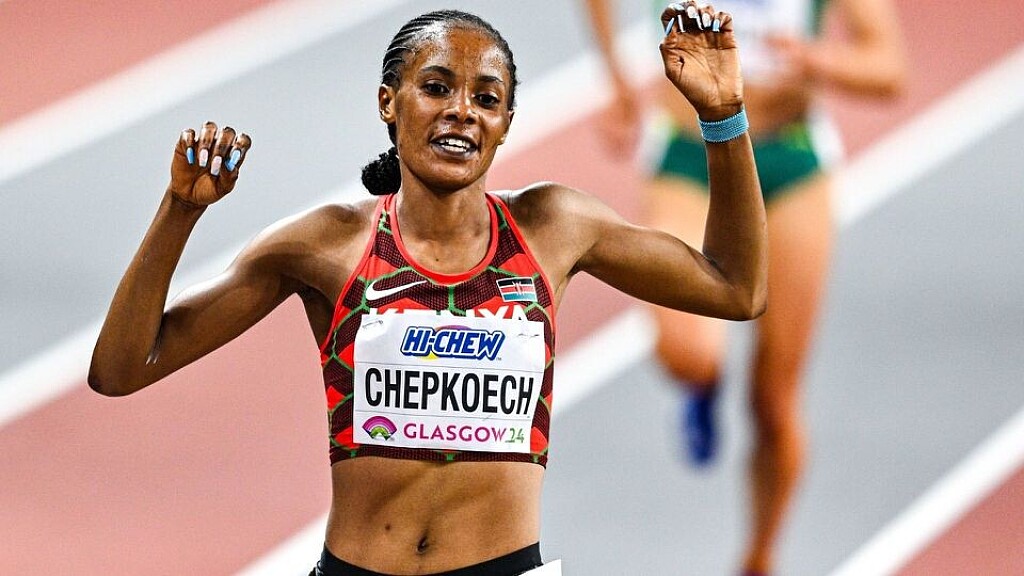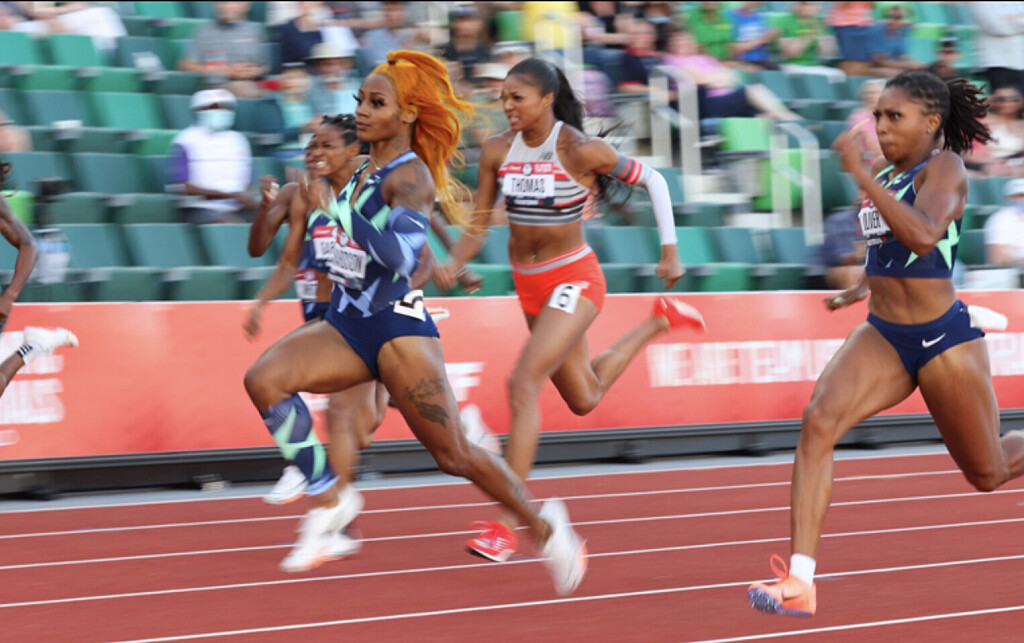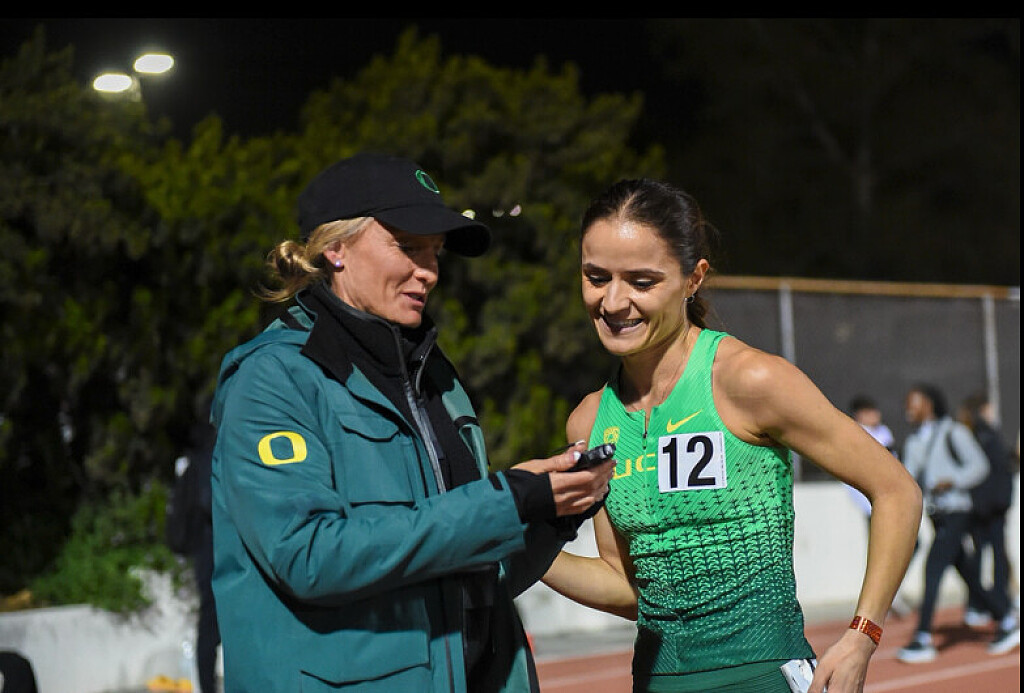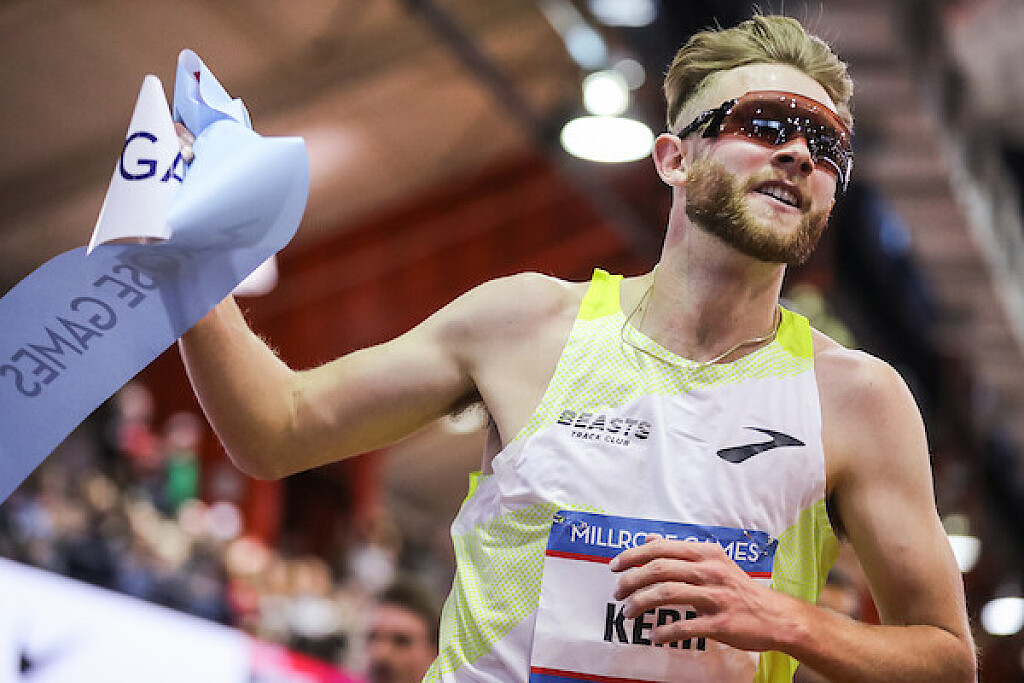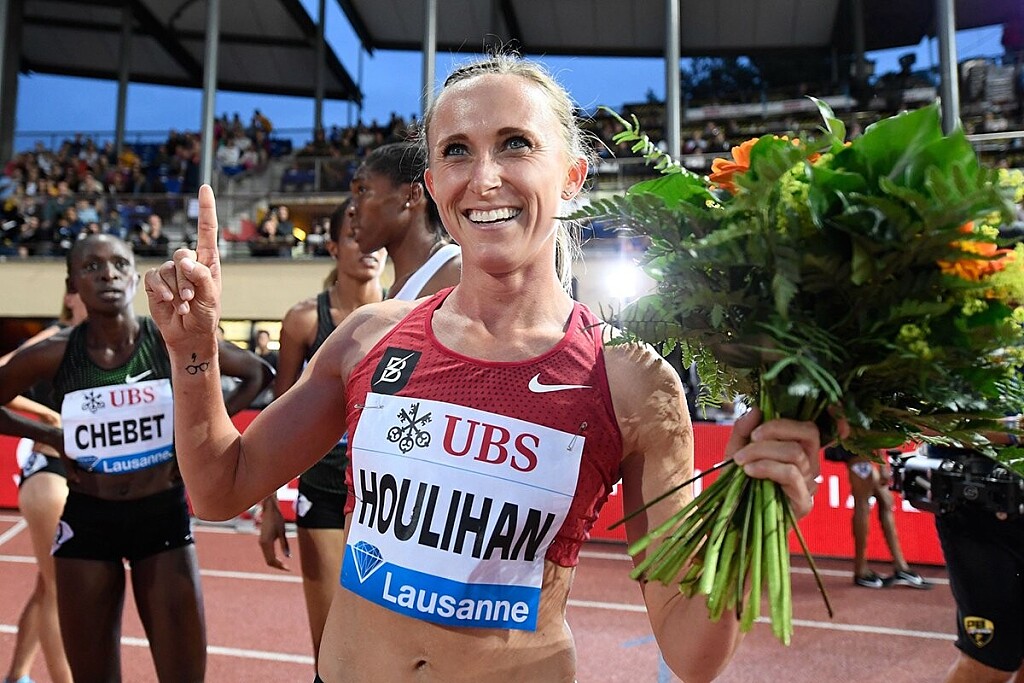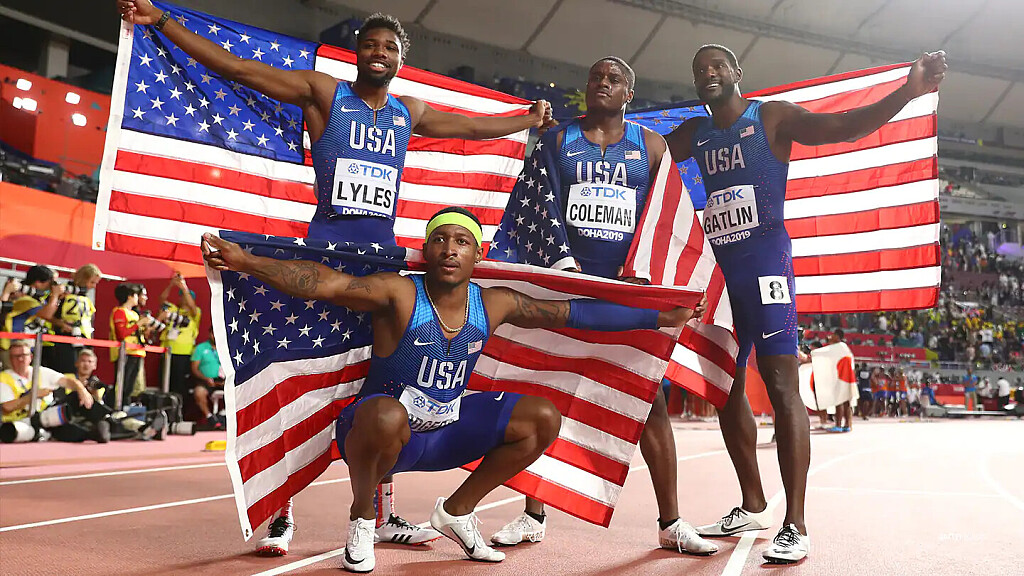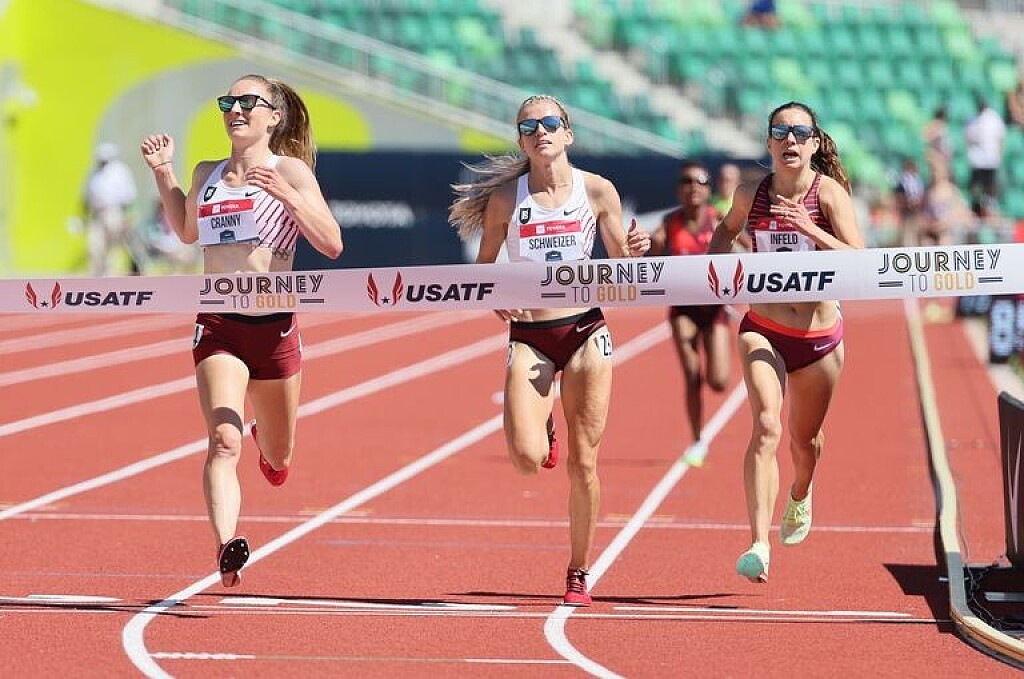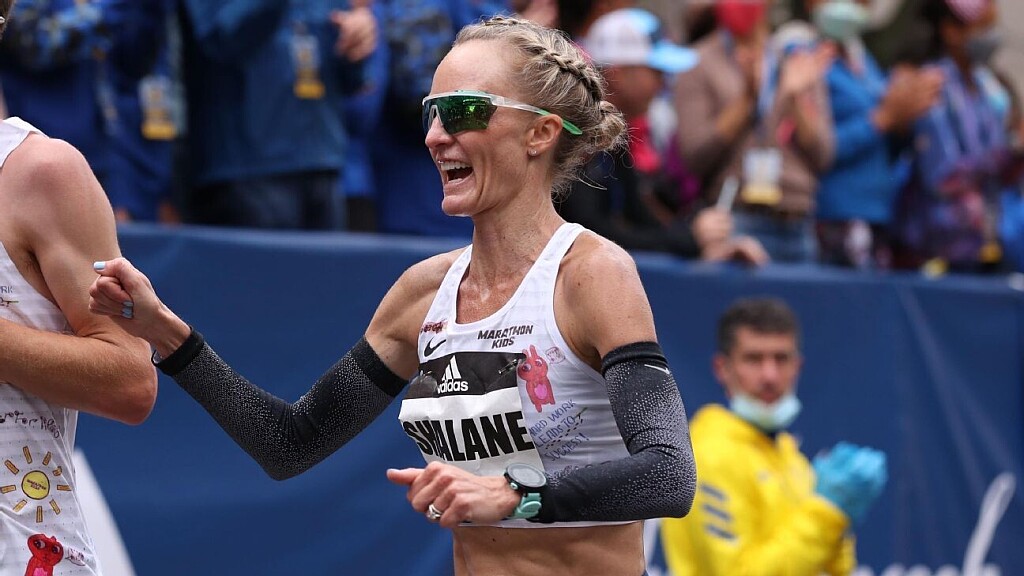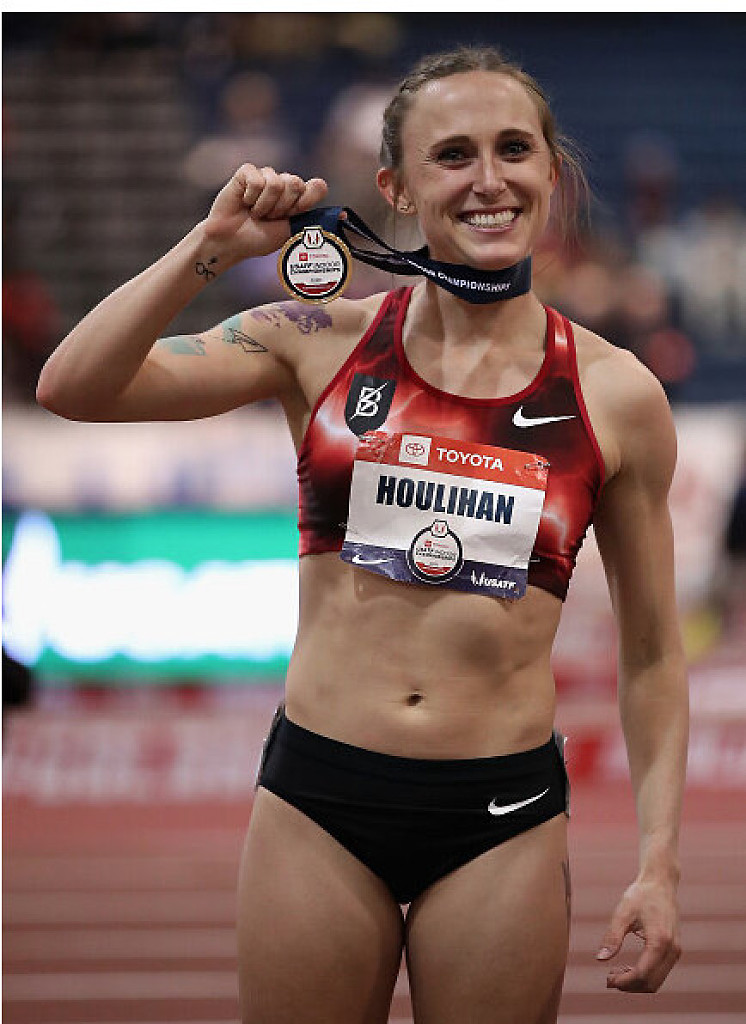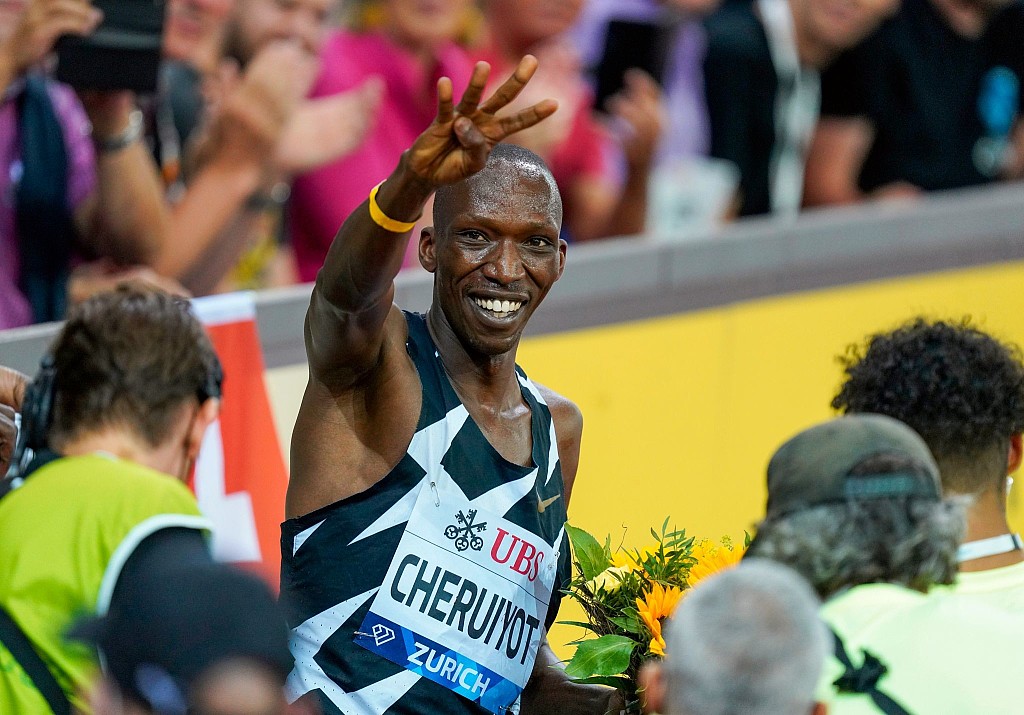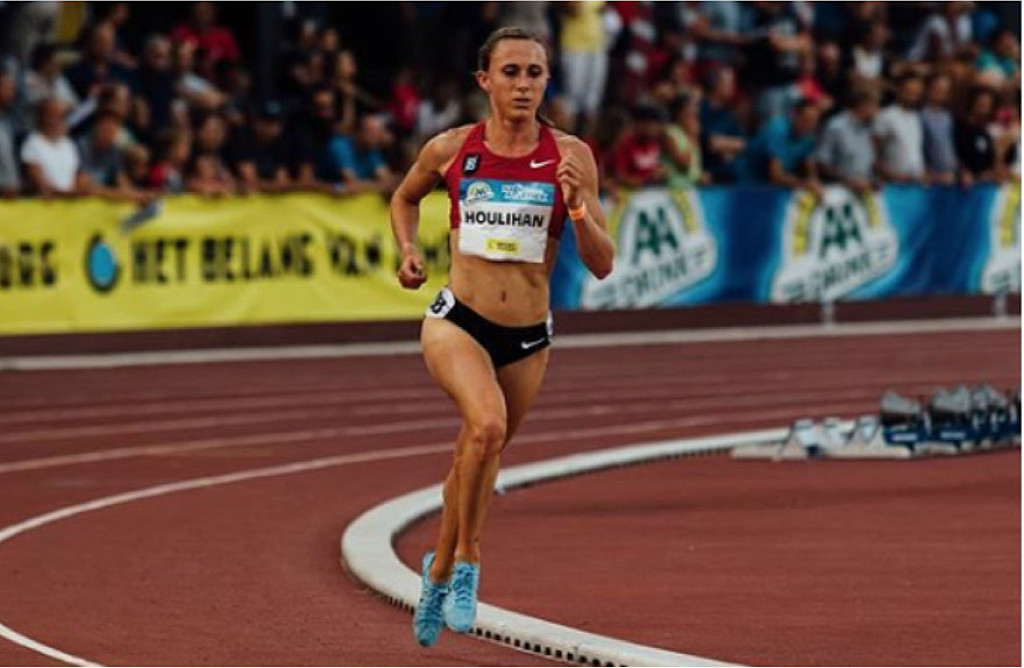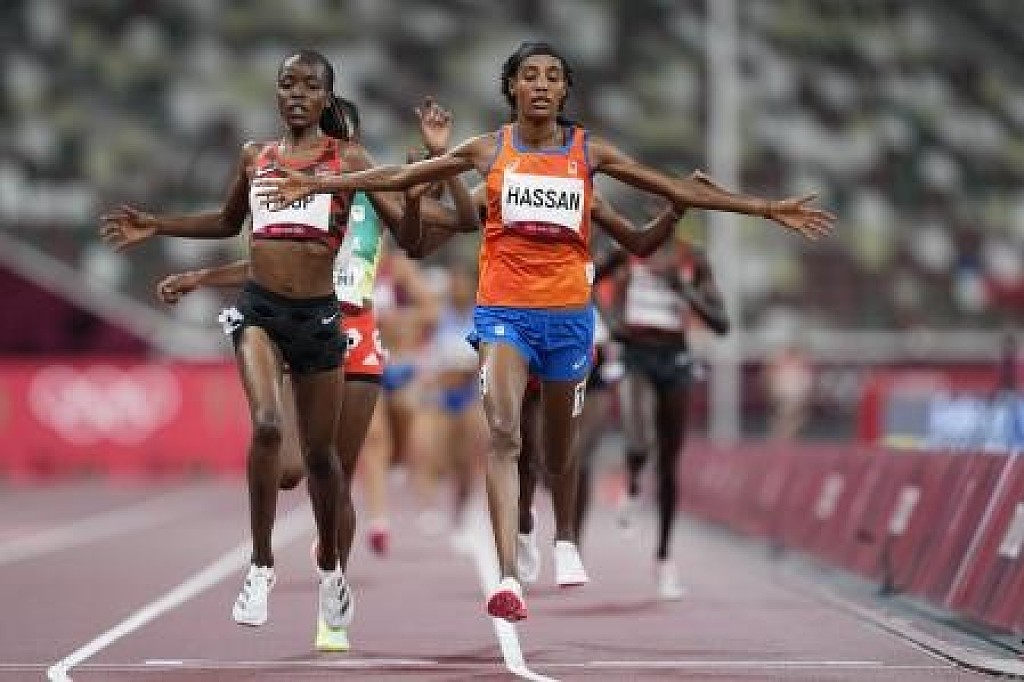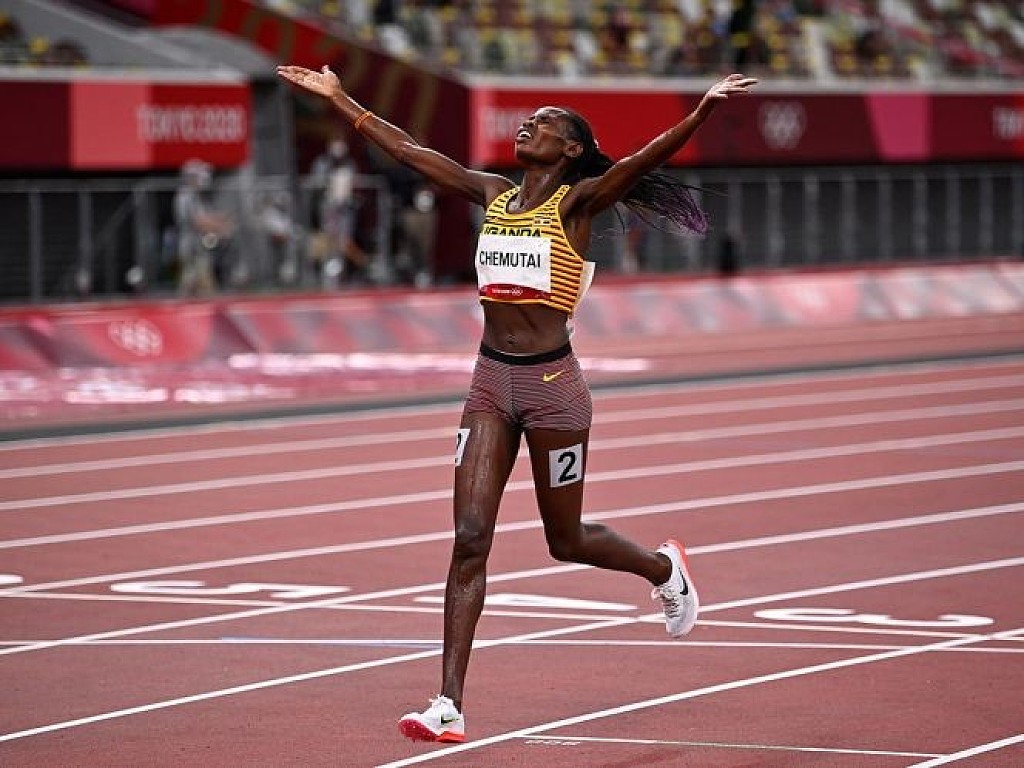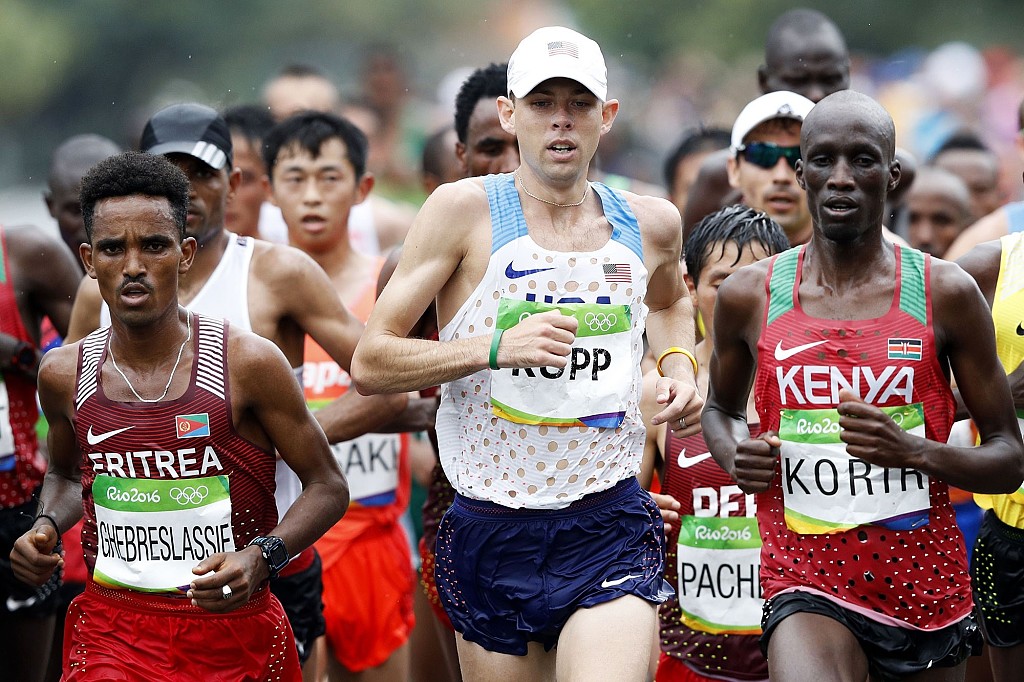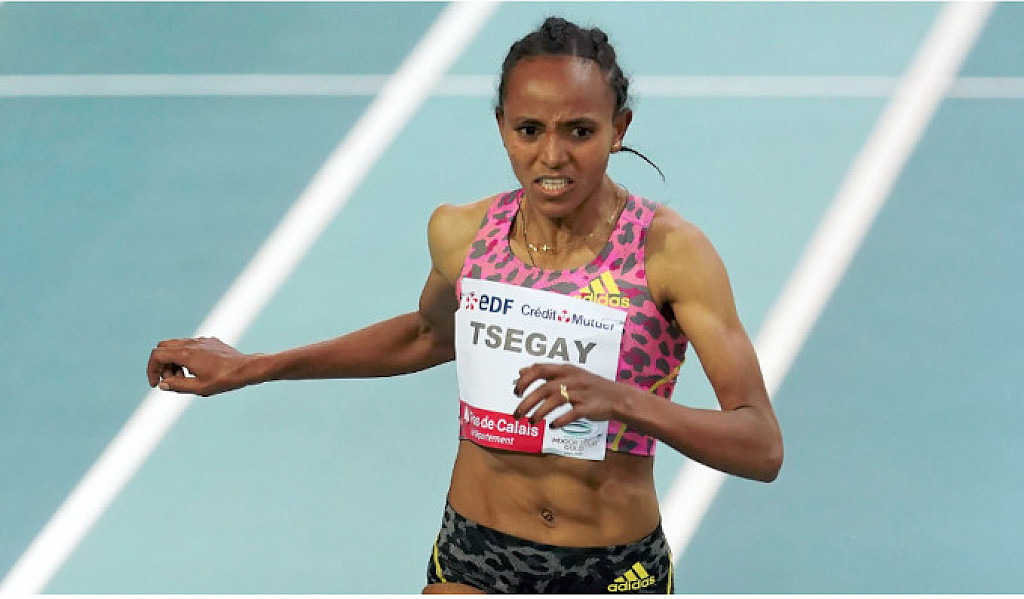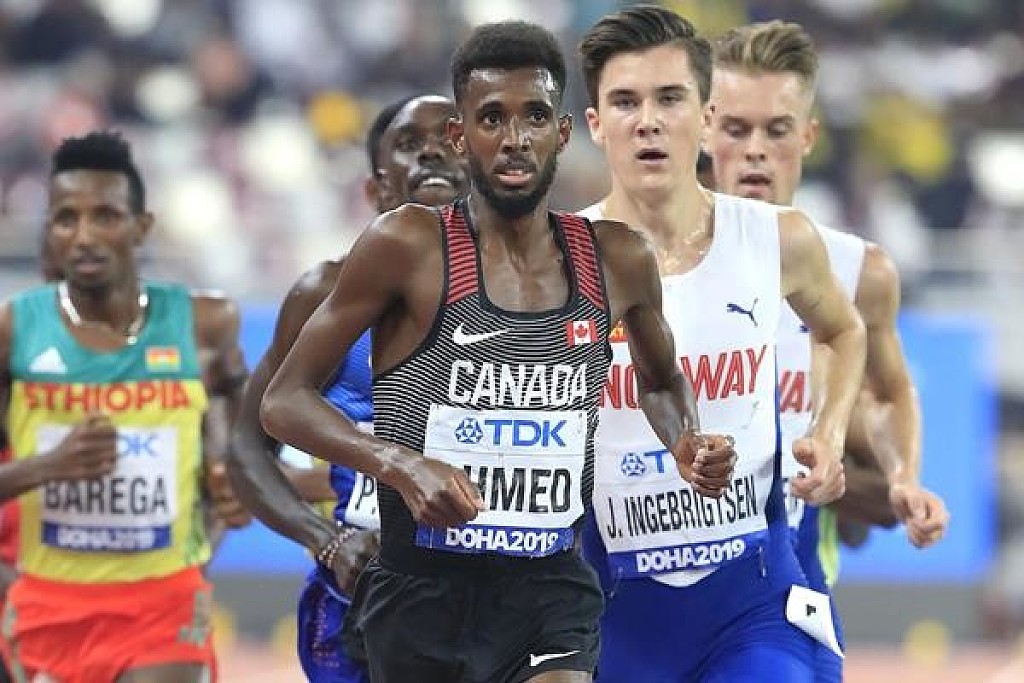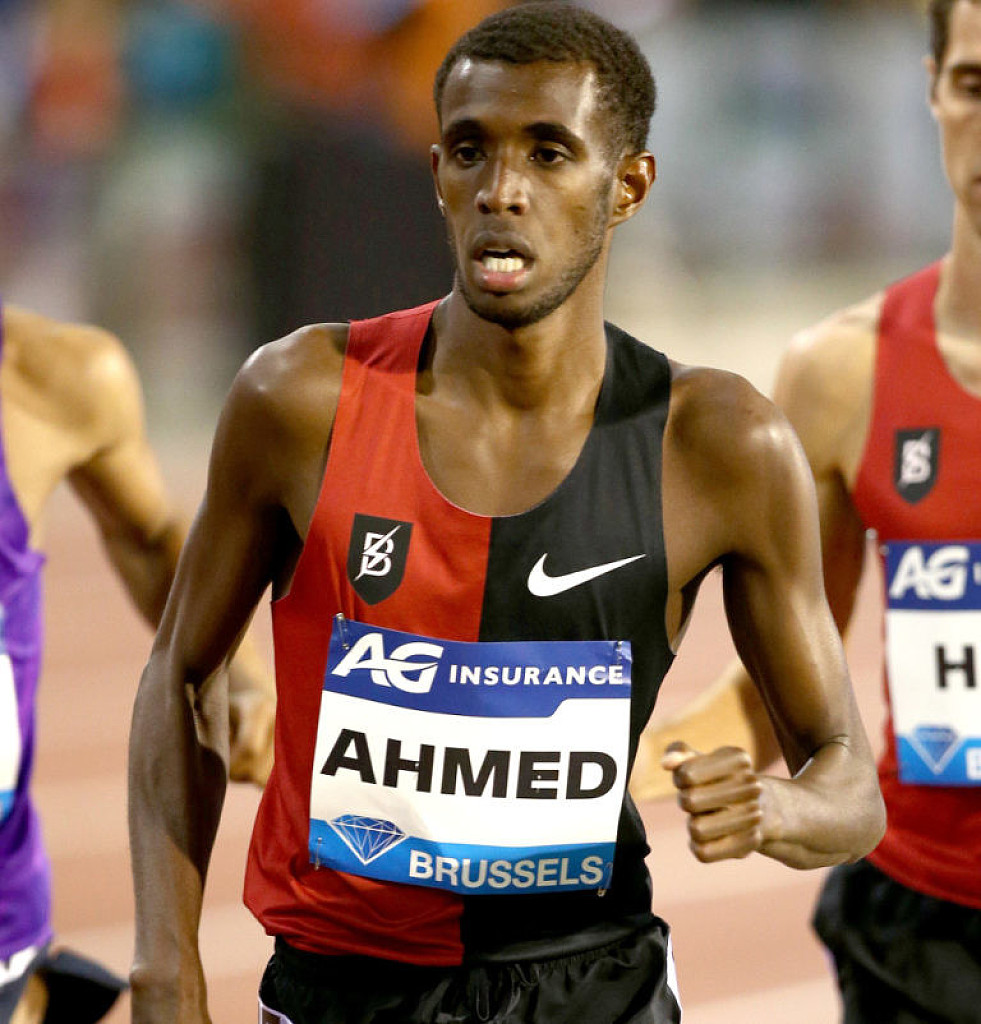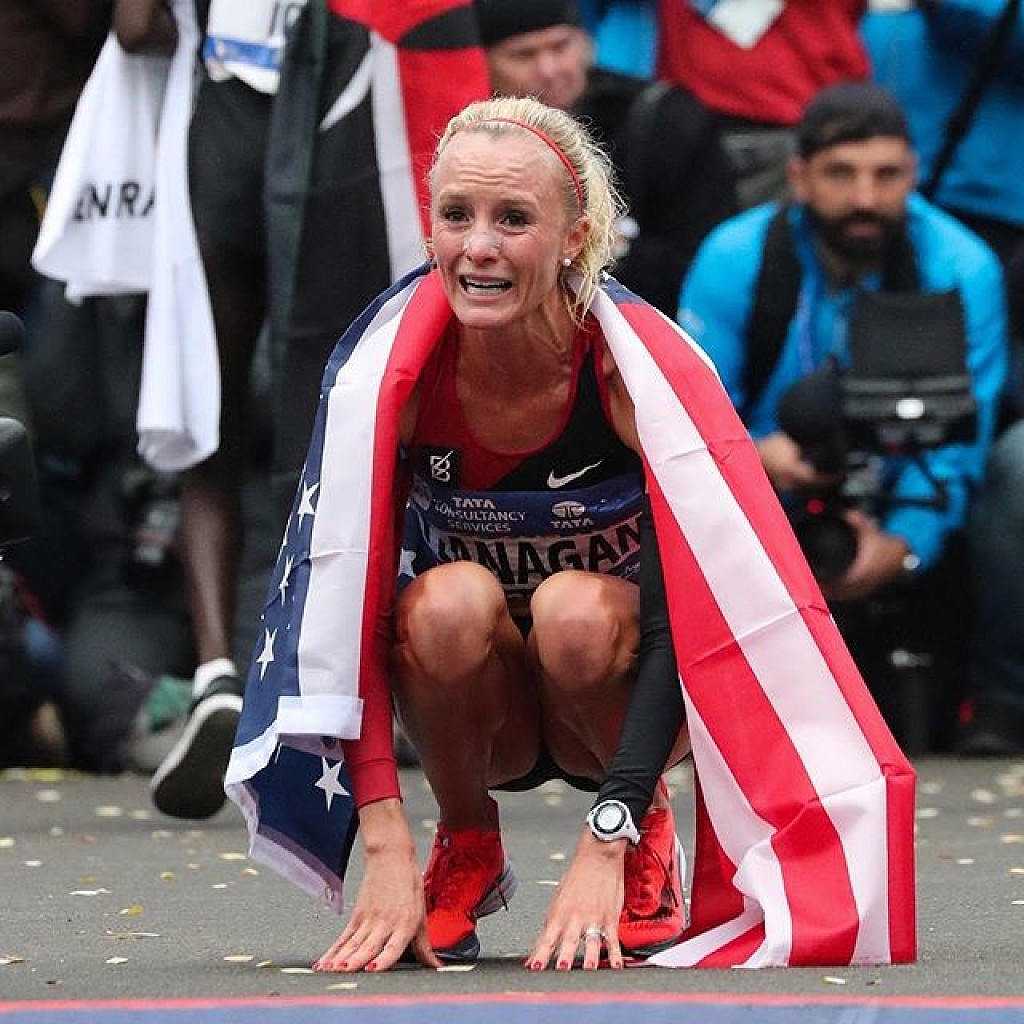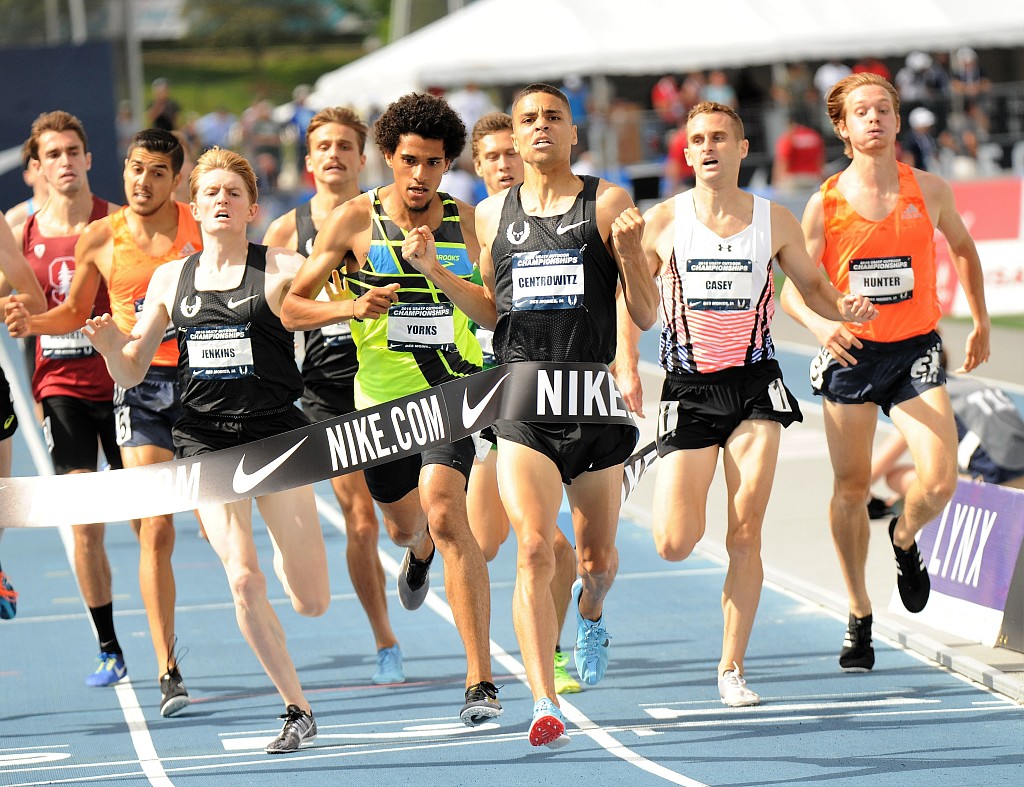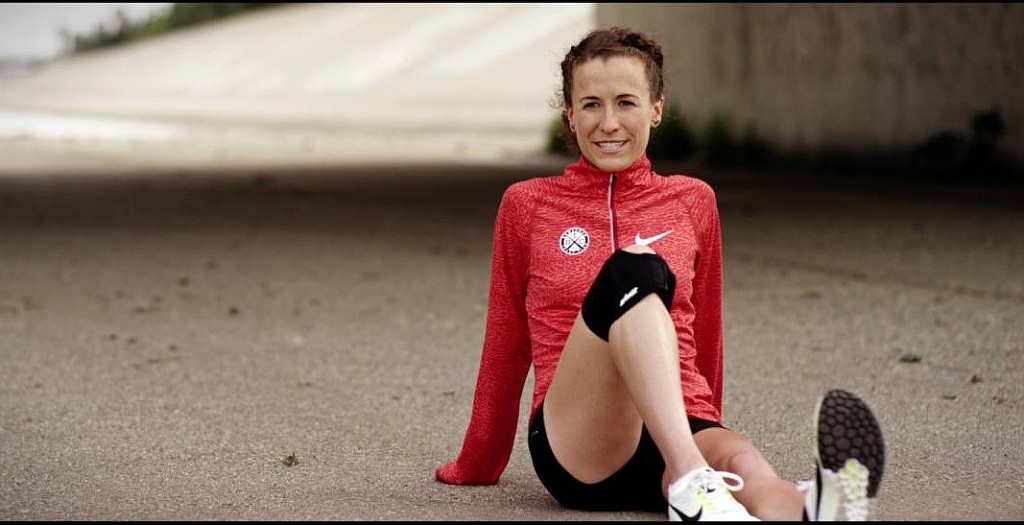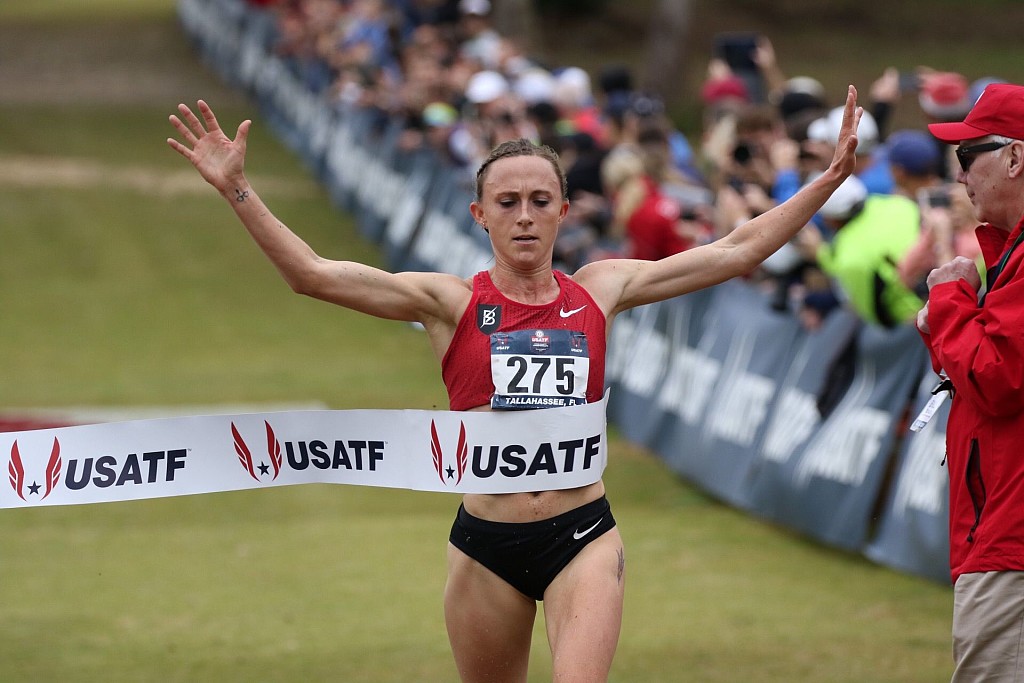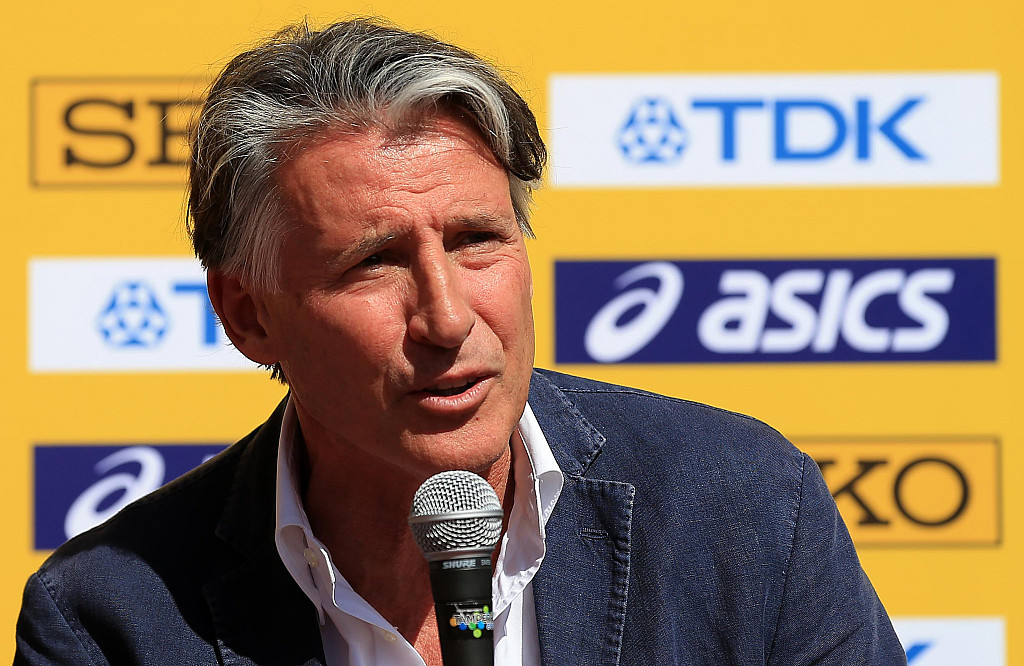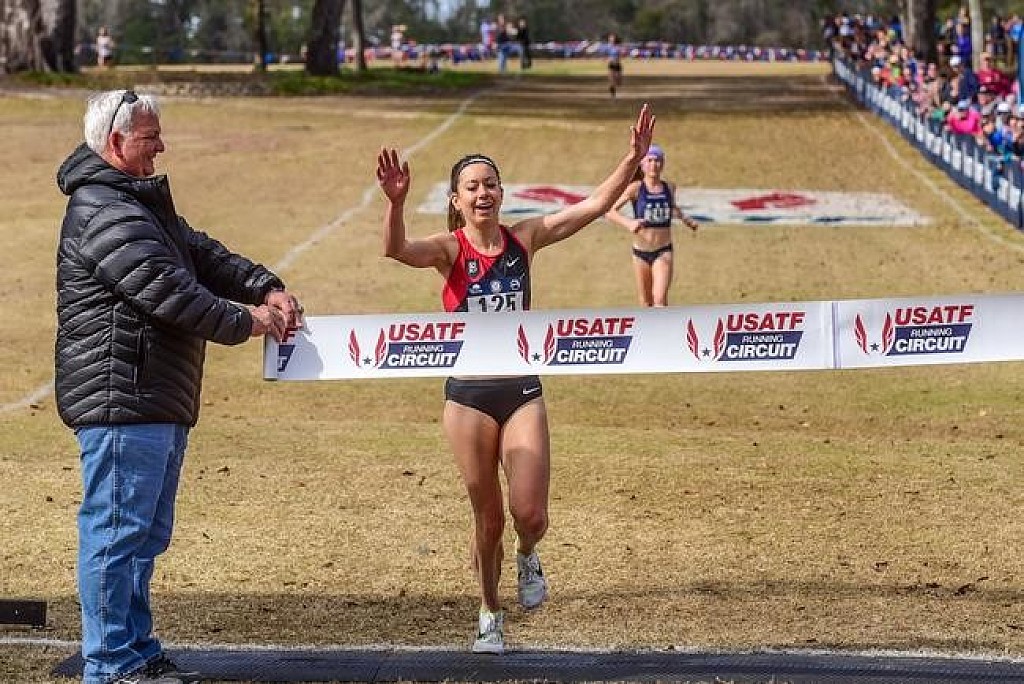Running News Daily
Running News Daily is edited by Bob Anderson. Send your news items to bob@mybestruns.com Advertising opportunities available. Train the Kenyan Way at KATA Kenya and Portugal owned and operated by Bob Anderson. Be sure to catch our movie A Long Run the movie KATA Running Camps and KATA Potato Farms - 31 now open in Kenya! https://kata.ke/
Index to Daily Posts · Sign Up For Updates · Run The World Feed
Articles tagged #Courtney Frerichs
Today's Running News
This 31-Year-Old Runner Is a Mom and an Olympian
Buoyed by her faith, motherhood, and family, Marisa Howard never relinquished her dream of becoming an Olympian
As a young girl, Marisa Howard dreamed about becoming an Olympian one day. But her focus was on another Olympic sport, gymnastics. She had no idea what the 3,000-meter steeplechase even was.
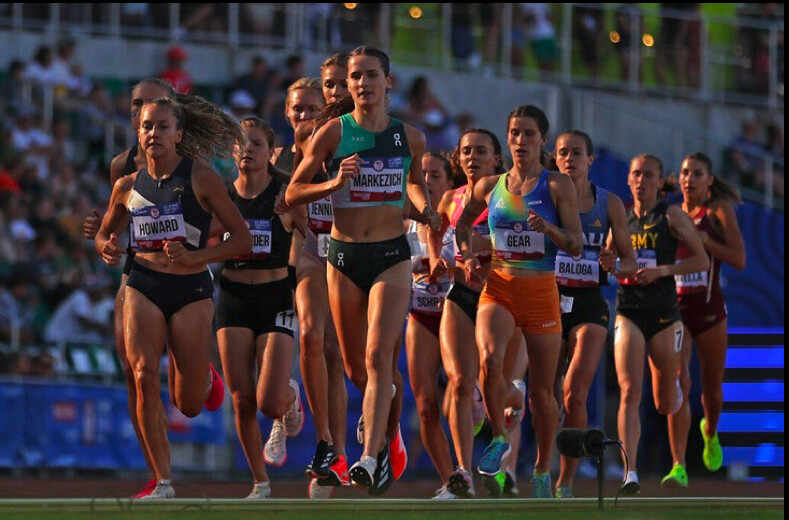
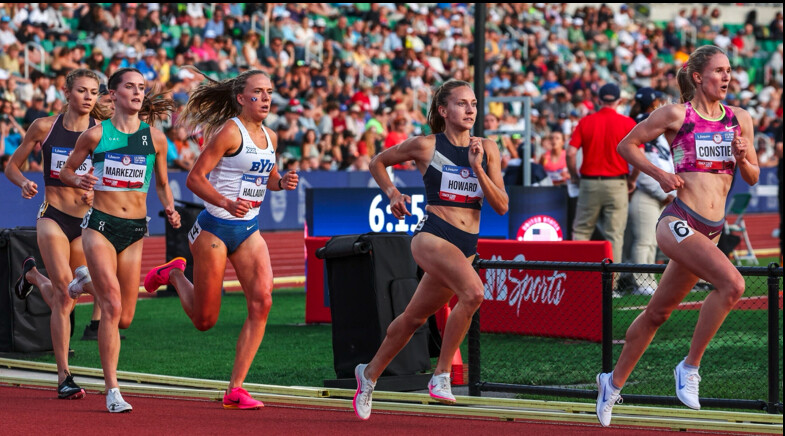
She also had no idea she’d be a mom when the dream actually came true.
Over the last two decades, Marisa, 31, has gone through numerous highs and lows, near-misses, injuries, a lack of sponsor support, and joyful life changes—most notably giving birth to son, Kai, in 2022. But the steeplechaser from Boise, Idaho, never let go of the dream. Relying on her faith, a strong family support system, and the frugal but full life she shares with her husband, Jeff, the dream came true on June 27 with a third-place finish in the steeplechase at the U.S. Olympic Trials in Eugene, Oregon.
After chipping away at her craft for three Olympic cycles, Marisa ran the race of her life—finishing with a 15-second personal best of 9 minutes and 7.14 seconds—to earn a spot on Team USA.
Her dream of running for Team USA in the Olympics officially materialized on August 4 when she lined up to race in the prelims of the 3,000-meter steeplechase in Paris. She ran with the lead pack in her heat as long as she could, but with two laps to go she slid to seventh and finished in that position in 9:24.78, missing the chance to advance to the August 6 final by two places and about seven seconds.
“I think it just becomes a lot more real when you see people that have been kind of knocking on the door for years and finally break through. It’s like, ‘Wow, we’re human and we can do it.’ Dreams do come true,” Marisa said. “I was six or seven or eight years old when this Olympic dream was born, and I plan on competing until he’s that age, hopefully, to show him what it’s like to do hard things and chase your dreams. I think it’ll be cool in 10 years when I show Kai these videos and be able to tell him, “Look at what Mommy did when you were two.”
In between making the team in late June and arriving in Paris in late July, Marisa’s life returned to normal—as if being a mom with a 2-year-old is ever normal, or at least consistent, on a day-to-day basis. That month included rough bouts of stomach flu for her and her son, the continued day-to-day management of Kai with Jeff, juggling workouts with childcare help from family and friends, reestablishing normal sleep patterns for everyone, and of course, finalizing travel plans to get the family to Paris.
It all came with a humbling reminder of the perspective that has been the bedrock of Marisa’s postpartum revival as an athlete.
“The day after I qualified, we were driving back home to Idaho and we were all tired. Kai was exhausted and screaming in the car, and I told my husband, ‘He doesn’t care that I’m an Olympian, he just wants food and sleep and, really, I’m just mom,’” she said. “It’s humbling—there’s nothing more humbling than taking care of your sick baby—and I think as a parent, we’re humbled every single day, and we come up short sometimes despite doing the best we can, but I’m thankful that there’s grace and forgiveness. I think it makes those high moments so much sweeter.”
Marisa is part of a new wave of elite runners that aren’t putting their family plans on hold due to their career, and one of several moms who competed at the U.S. Olympic Trials. Stephanie Bruce raced the 10,000 meters just nine months postpartum after giving birth to her daughter, Sophia, in September 2023, while Kate Grace ran strong preliminary and semifinal 800-meter races to advance to the final of that event just 15 months after giving birth to son, River, in March 2023.
Elle St. Pierre gave birth to her son, Ivan, at about the same time, and returned to racing six months postpartum, finishing seventh in a speedy 4:24 at the Fifth Avenue Mile in New York City. That was just the beginning for St. Pierre, who broke the American indoor record in the mile (4:16.41) in January then won the gold medal in the 3,000 meters at the indoor world championships in Glasgow in March. At the Olympic Trials, Pierre won the 5,000 meters and placed third in the 1500, qualifying for Team USA in both events, even though she declined the Olympic entry for the 5,000.
After Howard gave birth to Kai in late May 2022, she began doing pelvic floor therapy along with general strength training and some easy jogging. By the time she started running in earnest that fall, she was surprised at how quickly her aerobic fitness came back to her.
“What’s really surprised me is that I’m able to run paces that I never hit before pregnancy with the same amount or less effort,” she says. “My aerobic engine has just gotten so strong. You do see women come back stronger, but it’s a wide range of how long it takes them to come back. ”
When she returned to the track, she was aiming for a top-three finish at the 2023 U.S. championships to qualify for the world championships in Budapest. She made it to the final and was in third place with two laps to go, but just didn’t have the closing speed. However, she did get the Olympic Trials standard by clocking a near-PR of 9:22.73, demonstrating she was just as fast as her pre-pregnancy self despite limited training and two years away from racing.
By late 2023 and early 2024, Pat McCurry, Marisa’s coach since college, was able to add more volume and intensity to her training, setting up what he thought would be her best season yet. And while Marisa admittedly didn’t race as well as hoped in her races before the Olympic Trials, McCurry knew she was capable of great things.
“She was on a different level once we got back to that base fitness post-pregnancy, and I think that’s what’s paid off in massive fitness dividends,” said McCurry, who has coached Marisa on Idaho Afoot training group since 2015. “The racing didn’t look amazing from the outside. The training was spectacular. We were doing things in training since January that we’ve never done before—just the level of intensity and volume we were sustaining was stellar.”
Marisa picked up running at Pasco High School in Washington, and carried on with the dream at Boise State University. There, she also met Jeff Howard, a Boise State runner who held the school record in the 10,000 meters. But more important than their common athletic passion, they shared the same Christian values that were the foundation of her life. They married in the summer of 2013 just after he graduated. He eventually took a job as a high school teacher at a nearby school, while she blossomed into a three-time NCAA Division I All-American for the Broncos, notching a runner-up finish at the 2014 NCAA championships and fourth-place finish the following year as a senior.
After she graduated, she picked up a small sponsorship deal with women’s apparel brand Oiselle and set her sights on the 2016 U.S. Olympic Trials . She got injured and missed the trials that year. But Howard and her husband bought a house in Boise and started their family life in earnest. That added stability, along with the guidance of McCurry, who she began working with in 2016, allowed her to dig deeper into training and continue to make progress in the steeplechase, lowering her personal best to 9:30.92 at a race in Lapinlahti, Finland.
The Oiselle sponsorship evaporated after about three years but that didn’t seem to matter. She and Jeff were living frugally and loving life, especially because, by then, most of their family had moved to Boise. Marisa had two aunts who had lived in the area before she went to college, and Jeff’s parents moved to town shortly after they were married. Marisa’s parents, and later her best friend, Marianne Green, also picked up their roots and relocated to town.
The ensuing years brought a variety of highs and lows—several near-miss fifth place finishes at U.S. championships, a silver medal at the 2019 Pan American Games, a few injuries that delayed her progress, a breakthrough eight-second PR in the semifinals of the 2020 Olympic Trials, and, of course, welcoming Kai into the world in 2022.
What makes Marisa’s situation especially challenging is that she’s run competitively without a traditional sponsor since 2017, more or less collectively bootstrapping the dream on her husband’s high school teacher’s salary and working part-time as a schol nurse and as a coach. (She will officially join the Boise State staff as an assistant coach after the Olympics.) She often stays with friends when she travels to races and says she’s grateful to the meet directors who have flown her out to race, put her up in hotels, and also paid her to pace races.
She also earned USATF Foundation grants and in 2022 was the recipient of a $10,000 grant to offset child care expenses from a program sprinting legend Allyson Felix organized through Athleta’s Power of She Fund and the Women’s Sports Foundation. Marisa competed at the 2024 Olympic Trials as part of the Tracksmith Amateur Support Program, which provides a small quarterly stipend, running apparel, and shoes to about 40 athletes in all disciplines of track and field.
“We’ve found ways to make it work. We drive used cars, and we refinanced in 2020, so thankfully our mortgage is very low,” she says. “So really a lot of my expenses are just shoes, a little bit of travel, coaching fees, gym fees, and things like that. But it does add up. But thankfully we live well within our means and are able to do it. As I’ve said before, the Lord always provides.”
But even with that support and her continued progress, Marisa entered the Olympic Trials as a dark horse contender to make Team USA. And that’s despite knowing that Emma Coburn and Courtney Frerichs, the top stars of the event for the past 10 years, were sidelined with injuries. She hadn’t run great in her races leading up to the trials, and her confidence was waning, McCurry says.
“I felt like not having a full contract [from a shoe sponsorship] had kind of eroded away at some of her confidence, and she was starting to have a little bit of imposter syndrome at races,” says McCurry. “We just had a really firm talk where I was like, damn it, you’re better than this,” he says. “Not we, not the training, you, Marissa Howard, are better than this.”
That pep talk was just what she needed. It helped remind Marisa about her bigger purpose, just as much as packing diapers, toys, and pajamas for Kai did before she and Jeff made the eight-hour drive to Eugene for the Olympic Trials.
In her semi-final heat at the trials on June 24, Marisa ran aggressively and finished second behind Gabbi Jennings in 9:26.38. After the race, she said she was looking forward to the final, but, for the moment, was most interested in making sure Kai got to bed on time.
Running with purpose and caring for her son emboldened her for the final, where she ran with conviction among the top five before moving into the lead briefly with a lap to go. In what was a thrilling final lap, Val Constien retook the lead and sprinted to victory down the homestretch in an Olympic Trials-record 9:03.22, followed by a surging Courtney Wayment (9:06.50) and a determined Marisa (9:07.14) as the top nine finishers all set new personal bests.
“My husband and I talk about competitive greatness: You want to rise to the occasion when everyone else is at their best. So it’s like, gosh, I was able to do it! I think a lot of it for me has always been about having my priorities in place. I’m a Christian first, and then a wife, and then a mom, and then a runner. And I think if I keep those in that line, that’s where I see success,” Marisa says.
“I’ve sat next to gold medalists and other high-level athletes in chapels before U.S. championship races and they’ve told me, ‘I’ve won that gold medal and it doesn’t fill that void in my heart.’ And just knowing that a medal or success isn’t going to change you, ultimately, you have to be secure in who you are. So just remembering where my priorities lie helps to kind of keep me grounded.”
Login to leave a comment
Chepkoech believes she will be lucky at the Olympics on her third attempt
The third time is the charm. This is what 2019 World 3,000m steeplechase champion Beatrice Chepkoech is banking on as she braces up for a podium finish at the Olympic Games in Paris.
Chepkoech narrowly missed the podium in Rio 2016, finishing fourth (9:16.05) and placed seventh (9:16.33) in Tokyo 2021.
Tokyo saw Uganda's Peruth Chemutai (9:01.45), USA's Courtney Frerichs (9:04.79) and Hyvin Kiyeng (9:05.39) seal the podium while Rio Olympics top spots went to Bahrain’s Ruth Jebet (8:59.72), Kiyeng (9:07.12) and USA's Emma Coburn (9:07.63).
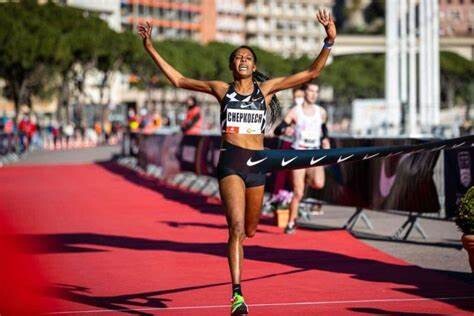
After heartbreaks in Rio and Tokyo, the 33-year-old is laser-focused on clinching the elusive Olympic medal.
“I have missed the podium in my last two Olympic appearances but I am optimistic on my third attempt. I will secure a podium finish,” Chepkoech revealed.
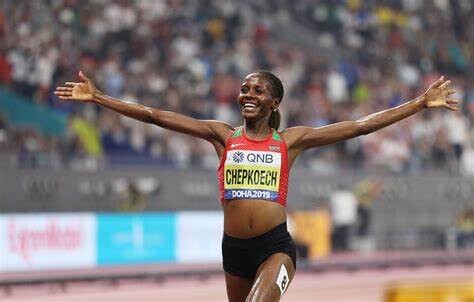
She also highlighted the importance of an Olympic medal to add to her rich trophy cabinet. “It is everybody’s dream to win an Olympic medal. I will be more than happy if I secure a podium in Paris,” she added.
Chepkoech’s impressive resume includes the 2019 world title in Doha, where she set a course record of 8:57.84 while leading Coburn (9:02.35) and Germany’s Gesa Felicitas (9:03.30) to the podium.
She also holds the African title having clocked 9:15.61 in Accra last year with Chemutai (9:16.07) and Ethiopia’s Lomi Muleta (9:26.63) sealing the podium.
Chepkoech is a bronze medallist in the 3,000m at the World Indoor Championships in Glasgow. She finished third in 8:22.68 behind Ethiopia’s Gudaf Tsegay (8:21.13) and USA’s Elle Purrier (8:20.87).
Despite strong competition from World Champion Winfred Yavi and Uganda’s Chemutai at the Paris Olympics, Chepkoech remains unfazed.
“Anything can happen in Paris, I can’t say I fear anyone. I am going to run my race and do my very best,” she stated.
Yavi edged out Chepkoech at the 2023 Championships in Budapest beating her to the title in 8:54.29 with Chepkoech settling for second in 8:58.98 and Faith Cherotich (9:00.69) sealing the podium.
Chemutai beat her to the Prefontaine Classic title on May 25, clocking 8:55.09 with Chepkoech clocking 8:56.51. At the Paris Diamond League earlier this month, Chepkoech finished ninth place in 9:27.21.
Yavi (9:03.68), Alice Finot (9:05.01) and Britain’s Elizabeth Bird (9:09.07) claimed the podium.
Chepkoech has been honing her skills at the Nyayo Stadium, where she has been training three times a week ahead of Paris.
“Training has been intense but rewarding. I do training on Monday, Wednesday and Friday and I have been focusing on my weaknesses to ensure peak form in Paris,” she shared.
In Paris, she will be joined by world U20 champions Jackline Chepkoech (2021) and Faith Cherotich (2022). The duo have been intensifying their training in Eldoret.
Chepkoech highlighted that training alone has been lonely but reiterated her desire to put in more effort.
“The other athletes are training in Eldoret so I am alone. It’s a challenge but I have to do my best to be ready for the Olympics,” Chepkoech stated.
She further highlighted the importance of having her coach along with the assigned coaches from the National Olympics Committee of Kenya.
“Training with my coach has been good because we can strategise on the areas we see weaknesses. It was a good initiative from the federation to have me train with my coach along with the assigned coaches,” she revealed.
by Teddy Muley
Login to leave a comment
Paris 2024 Olympic Games
For this historic event, the City of Light is thinking big! Visitors will be able to watch events at top sporting venues in Paris and the Paris region, as well as at emblematic monuments in the capital visited by several millions of tourists each year. The promise of exceptional moments to experience in an exceptional setting! A great way to...
more...What You Need to Know About the U.S. Track and Field Olympic Trials
From June 21-30, more than 900 runners, throwers, and jumpers will put it all on the line for a chance to compete for Team USA at the Paris Olympics
The U.S. Track and Field Olympic Trials is a showcase of hundreds of America’s best track and field athletes who will be battling for a chance to qualify for Team USA and compete in this summer’s Paris Olympics. For many athletes competing in Eugene, simply making it on to the start line is a life-long accomplishment. Each earned their spot by qualifying for the trials in their event(s). The athlete qualifier and declaration lists are expected to be finalized this week.
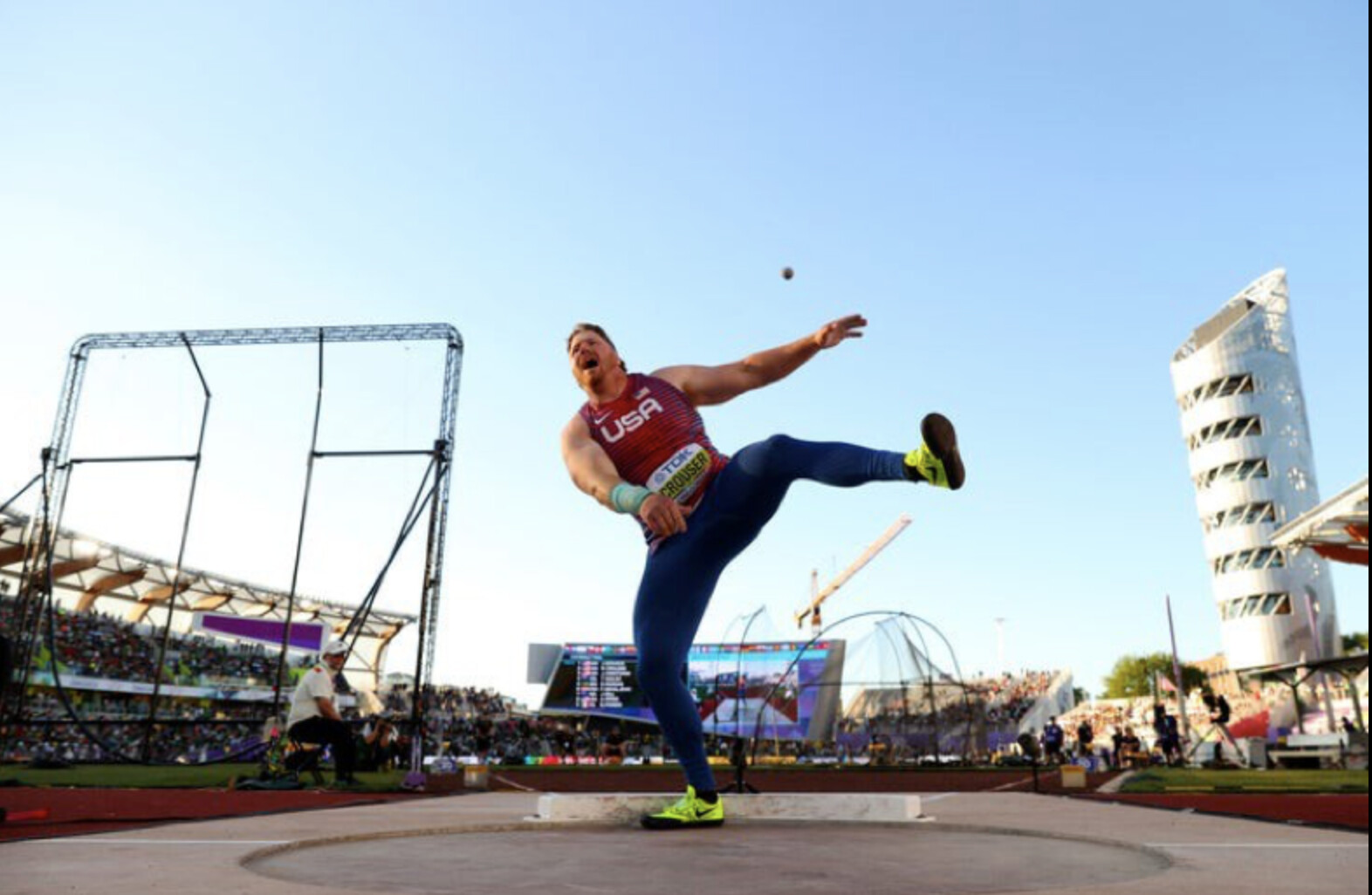
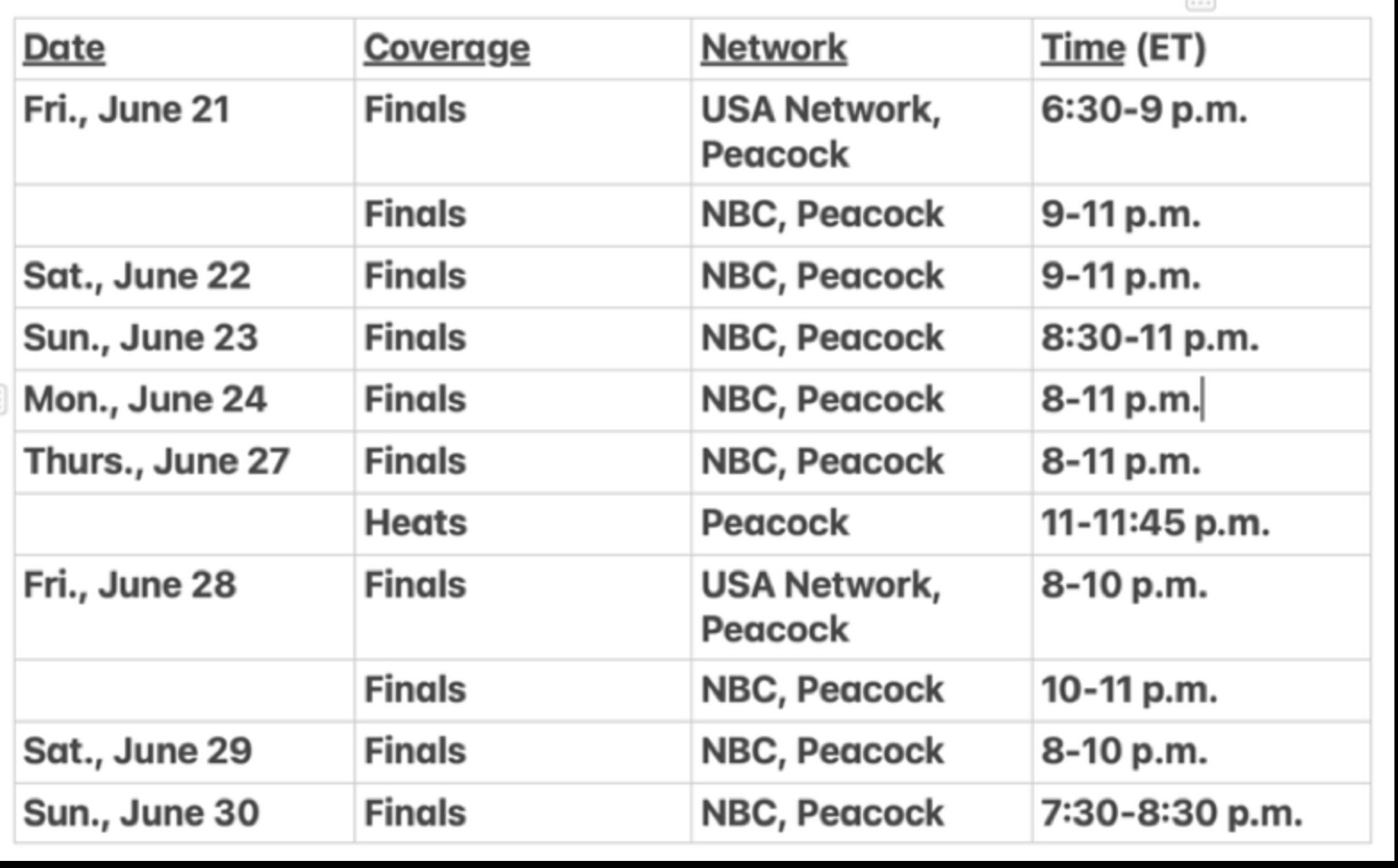
But for the highest echelon of athletes, the trials defines a make-or-break moment in their career. Only three Olympic team spots (in each gender) are available in each event, and given the U.S. depth in all facets of track and field—sprints, hurdles, throws, jumps, and distance running events—it’s considered the world’s hardest all-around team to make. How dominant is the U.S. in the world of track and field? It has led the track and field medal count at every Olympics since 1984.
At the trials, there are 20 total events for women and men—10 running events from 100 meters to 10,000 meters (including two hurdles races and the 3,000-meter steeplechase), four throwing events (discus, shot put, javelin, and hammer throw), four jumping events (long jump, triple jump, high jump, and pole vault), the quirky 20K race walking event, and, of course, the seven-event heptathlon (women) and the 10-event decathlon (men).
(At the Olympics, Team USA will also compete in men’s and women’s 4×100-meter and 4×400-meter relays, plus a mixed gender 4×400, and a mixed gender marathon race walk. The athletes competing on these teams will be drawn from those who qualify for Team USA in individual events, along with alternates who are the next-best finishers at the trials.
There’s also the Olympic marathon, but the U.S. Olympic Trials Marathon was held on February 3 in Orlando, Florida, to give the athletes enough time to recover from the demands of hammering 26.2 miles before the big dance in Paris.
Although some countries arbitrarily select their Olympic track and field teams, the U.S. system is equitable for those who show up at the Olympic Trials and compete against the country’s best athletes in each particular event. There’s just one shot for everyone, and if you finish among the top three in your event (and also have the proper Olympic qualifying marks or international rankings under your belt), you’ll earn the opportunity of a lifetime—no matter if you’re a medal contender or someone who burst onto the scene with a breakthrough performance.
The top performers in Eugene will likely be contenders for gold medals in Paris. The list of American stars is long and distinguished, but it has to start with sprinters Sha’Carri Richardson and Noah Lyles, who will be both competing in the coveted 100 and 200 meters. Each athlete won 100-meter titles at last summer’s world championships in Budapest and ran on the U.S. gold-medal 4×100 relays. (Lyles also won the 200) Each has been running fast so far this spring, but more importantly, each seems to have the speed, the skill, and swagger it takes to become an Olympic champion in the 100 and carry the title of the world’s fastest humans.
But first they have to qualify for Team USA at the Olympic Trials. Although Lyles is the top contender in the men’s 100 and second in the world with a 9.85-second season’s best, five other U.S. athletes have run sub-10-second efforts already this season. Richardson enters the meet No. 2 in the U.S. and No. 3 in the world in the women’s 100 (10.83), but eight other Americans have also broken 11 seconds. That will make the preliminary heats precariously exciting and the finals (women’s on June 22, men’s on June 23) must-see TV.
There are five returning individual Olympic gold medalists competing in the U.S. Olympic Trials with the hopes of repeating their medals in Paris—Athing Mu (800 meters), Sydney McLaughlin-Levrone (400-meter hurdles), Katie Moon (pole vault), Vallarie Allman (discus), and Ryan Crouser (shot put)—but there are more than a dozen other returning U.S. medalists from the Tokyo Olympics, as well as many more from the 2023 world championships, including gold medalists Chase Ealey (shot put), Grant Holloway (110-meter hurdles), Laulauga Tausaga (discus), and Crouser (shot put).
The most talented athlete entered in the Olympic Trials might be Anna Hall, the bronze and silver medalist in the seven-event heptathlon at the past two world championships. It’s an epic test of speed, strength, agility, and endurance. In the two-day event, Hall and about a dozen other women will compete in the 100-meter hurdles, high jump, shot put, 200 meters, long jump, javelin throw, and 800 meters, racking up points based on their performance in each event. The athletes with the top three cumulative totals will make the U.S. team. At just age 23, Hall is poised to contend for the gold in Paris, although Great Britain’s Katarina Johnson-Thompson, the world champion in 2019 and 2023, is also still in search of her first Olympic gold medal after injuries derailed her in 2016 and 2021.
If you can find your way to Eugene—and can afford the jacked-up hotel and Airbnb prices in town and nearby Springfield—you can watch it live in person at Hayward Field. Rebuilt in 2021, it’s one of the most advanced track and field facilities in the world, with an extremely fast track surface, a wind-blocking architectural design, and 12,650 seats that all offer great views and close-to-the-action ambiance. Tickets are still available for most days, ranging from $45 to $195.
If you can’t make it to Eugene, you can watch every moment of every event (including preliminary events) via TV broadcasts and livestreams. The U.S. Olympic Trials will be broadcast live and via tape delay with 11 total broadcast segments on NBC, USA Network, and Peacock. All finals will air live on NBC during primetime and the entirety of the meet will be streamed on Peacock, NBCOlympics.com, NBC.com and the NBC/NBC Sports apps.
The Olympic Trials will be replete with young, rising stars. For example, the men’s 1500 is expected to be one of the most hotly contested events and the top three contenders for the Olympic team are 25 and younger: Yared Nuguse, 25, the American record holder in the mile (3:43.97), Cole Hocker, 23, who was the 2020 Olympic Trials champion, and Hobbs Kessler, 21, who turned pro at 18 just before racing in the last Olympic Trials. Sprinter Erriyon Knighton, who turned pro at age 16 and ran in the Tokyo Olympics at age 17, is still only 20 and already has two world championships medals under his belt. Plus, the biggest track star from the last Olympics, Sydney McLaughlin-Levrone, is aiming for her third Olympics and third Olympic gold (she won the 400-meter hurdles and was on the winning 4×400 relay in Tokyo), and she’s only 24.
Several young collegiate stars could earn their place on the U.S. team heading to Paris after successful results in the just-completed NCAA championships. Leading the way are double-NCAA champions McKillenzie Long, 23, a University of Mississippi senior who enters the trials ranked sixth in the world in the 100 (10.91) and first in the 200 (21.83), and Parker Valby, a 21-year-old junior at the University of Florida, who ranks fifth in the U.S. in the 5,000 meters (14:52.18) and second in the 10,000 meters (30:50.43). Top men’s collegiate runners include 5,000-meter runner Nico Young (21, Northern Arizona University), 400-meter runner Johnnie Blockburger (21, USC), and 800-meter runners Shane Cohen (22, Virginia) and Sam Whitmarsh (21, Texas A&M).
It’s very likely. Elle St. Pierre is the top-ranked runner in both the 1500 and the 5,000, having run personal bests of 3:56.00 (the second-fastest time in U.S. history) and 14:34.12 (fifth-fastest on the U.S. list) this spring. Although she’s only 15 months postpartum after giving birth to son, Ivan, in March 2023, the 29-year-old St. Pierre is running better and faster than ever. In January, she broke the American indoor record in the mile (4:16.41) at the Millrose Games in New York City, then won the gold medal in the 3,000 meters at the indoor world championships in Glasgow in March.
St. Pierre could be joined by two world-class sprinters. Nia Ali, 35, the No. 2 ranked competitor in the 100-meter hurdles and the 2019 world champion, is a mother of 9-year-old son, Titus, and 7-year-old daughter, Yuri. Quanera Hayes, 32, the eighth-ranked runner in the 400 meters, is the mother to 5-year-old son, Demetrius. Hayes, a three-time 4×400 relay world champion, finished seventh in the 400 at the Tokyo Olympics.
Meanwhile, Kate Grace, a 2016 Olympian in the 800 meters who narrowly missed making Team USA for the Tokyo Olympics three years ago, is back running strong at age 35 after a two-year hiatus during which she suffered from a bout of long Covid and then took time off to give birth to her son, River, in March 2023.
No, unfortunately, there are a few top-tier athletes who are hurt and won’t be able to compete. That includes Courtney Frerichs (torn ACL), the silver medalist in the steeplechase at the Tokyo Olympics in 2021; Alicia Monson (torn medial meniscus), a 2020 Olympian in the 10,000 meters, the American record holder in the 5,000 and 10,000 meters, and the fifth-place finisher in the 5,000 at last year’s world championships; and Joe Klekcer (torn adductor muscle), who was 16th in the Tokyo Olympics and ninth in the 2022 world championships in the 10,000. Katelyn Tuohy, a four-time NCAA champion distance runner for North Carolina State who turned pro and signed with Adidas last winter, is also likely to miss the trials due to a lingering hamstring injury. There is also some doubt about the status of Athing Mu (hamstring), the Tokyo Olympics 800-meter champion, who has yet to race in 2024.
Meanwhile, Emma Coburn, a three-time Olympian, 2017 world champion, and 10-time U.S. champion in the 3,000-meter steeplechase, broke her ankle during her season-opening steeplechase in Shanghai on April 27. She underwent surgery a week later, and announced at the time that she would miss the trials, but has been progressing quickly through her recovery. If both she and Frerichs miss the meet, it will leave the door wide open for a new generation of steeplers—including 2020 Olympian Valerie Constein, who’s back in top form after tearing her ACL at a steeplechase in Doha and undergoing surgery last May.
The U.S. earned 41 medals in track and field at the 2020 Paralympic Games in Tokyo—including 10 gold medals—which ranked second behind China’s 51. This year’s Paralympics will follow the Olympics from August 28-September 8 in Paris.
The 2024 U.S. Paralympic Trials for track and field will be held from July 18-20 at the Ansin Sports Complex in Miramar, Florida, and Paralympic stars Nick Mayhugh, Brittni Mason, Breanna Clark, Ezra Frech, and Tatyana McFadden are all expected to compete.
In 2021 at the Tokyo Paralympics, Mayhugh set two new world records en route to winning the 100 meters (10.95) and 200 meters (21.91) in the T-37 category, and also took the silver medal in the 400 meters (50.26) and helped the U.S. win gold and set a world record in the mixed 4×100-meter relay (45.52). Clark returns to defend her Paralympic gold in the T-20 400 meters, while McFadden, a 20-time Paralympic medalist who also competed on the winning U.S. mixed relay, is expected to compete in the T-54 5,000 meters (bronze medal in 2021).
Livestream coverage of the U.S. Paralympic Trials for track and field will be available on Peacock, NBCOlympics.com, NBC.com, and the NBC/NBC Sports app, with TV coverage on CNBC on July 20 (live) and July 21 (tape-delayed).
Login to leave a comment
Shalane Flanagan Finds Her Sweet Spot With College Coaching
She’s juggling the University of Oregon women’s distance runners, the Bowerman Track Club, and a young family.
Before she gives a new workout to her University of Oregon athletes, Shalane Flanagan will try it out herself.
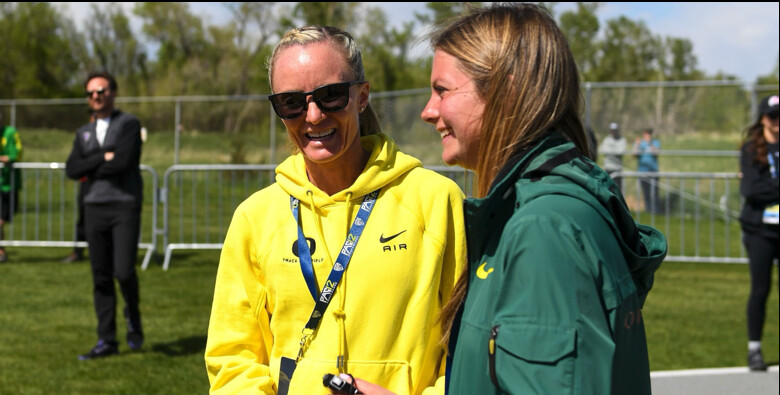
During cross-country season, it was a 5-mile tempo loop. Was it too hilly? Were the turns too sharp? In April, she was “messing around at the track one day,” as she described it, when she attempted a descending ladder of mile-800-600-400 at 10K-5K-3K-1500 pace with a short jog recovery.
“Yeah, that’s really hard,” she thought to herself. “But I think if they did that twice, it would make 10K runners feel really prepared.” Her goal with the experimentation is to make sure a workout is “feasible, but not outlandish” before her runners do it.
Few distance coaches in the NCAA are doing what she does, testing hard workouts, although Flanagan, 42, is quick to say that she does not hit the same splits her athletes do. Her boss, Oregon head coach Jerry Schumacher, is not so sure. “I see her out running every now and then, holy cow, she’s flying,” he told Runner’s World, quipping that it’s too bad she’s used up her NCAA eligibility.
Fewer still have the credentials that Flanagan, a four-time Olympian, has. She was the Olympic silver medalist in the 10,000 meters in 2008 and the 2017 New York City Marathon champion. Since she retired in 2019, she stayed on as an assistant coach with the Bowerman Track Club, a Nike pro group also coached by Schumacher that she ran for in the latter stages of her career.
That experience gives her credibility with her runners. So when she tells her athletes that they’re ready to handle a workout or race a certain time, they believe her.
“I don’t like to refer back to myself a lot,” she said in an interview at her home, a large 1920s colonial about a half mile from Hayward Field. “But I’ll say, ‘Hey, I’ve had experience with this,’ and I think they know, when I’m giving them advice, it’s not a hypothetical. I’m not projecting or guessing.
“They know it’s coming from a genuine place, because I’ve lived it,” she added. “I think that can be helpful with their confidence.”
Multiple full-time jobs
Flanagan had been living near Portland, Oregon, with her husband, Steve Edwards, and toddler son, Jack, when Schumacher was hired as the head coach of Oregon in Eugene, two hours south, in the summer of 2022. He brought Flanagan on as an assistant coach, while both kept their responsibilities with the Bowerman team, which also moved to Eugene. It was a lot.
Those early days for Flanagan—getting to know 11 female distance runners on the team, developing their training, learning the ever-changing NCAA rules, recruiting—were exhausting. And that was before they adopted a second child, Grace, as a newborn, in January 2023. They had only hours notice before Grace’s arrival.
Flanagan gets childcare help for Jack, almost 4, and Grace, 1, from a variety of babysitters and her parents. Her father, Steve Flanagan, and her stepmother visit often. One time, Flanagan had some team members’ parents visiting, and she turned around to see her dad showing them her Olympic medal. “What are you doing?” she asked him. “Put that away, that’s embarrassing.”
About three months in, when Schumacher asked her how she was handling the workload, she told him she was overwhelmed. “I’m really tired,” she said, “but this is the most fun I’ve ever had professionally. Like, I really love this job. I really love college athletics.”
Schumacher gave her full autonomy to write the training for Oregon’s women. And unlike with the Bowerman program, which former runners have said did not have much variation depending on the athlete, Flanagan has personalized training at Oregon for each individual. Some athletes on her team run as little as 25 miles per week, others go as high as 75.
One cornerstone of her training is the weekly long run on Sundays, and most weeks it has some structure to it, with tempo portions or a fartlek. For most of the team, the distance ranges from 12 to 16 miles, depending on the person.
When she first arrived in Eugene, she wrote the training with ranges in mileage. Easy days, for instance, she’d have her runners do 6 to 8 miles, depending on how they felt. They didn’t like that. They wanted an exact number. Getting them to trust themselves, listen to their bodies, and know the difference between muscle soreness and a potential injury has been one of her biggest challenges.
“I have tried to instill in them that they need to learn their body,” she said. “Like, I’m not in their body—they need to take stock and learn how to read their body. It’s one of the greatest skills and assets I felt like I had [as a runner].”
Flanagan tries to run with various groups at least one day per week on their easy runs. “It’s fun to run with the coach,” said Klaudia Kazimierska, who was fourth in the 1500 meters at the NCAA outdoor championships in 2023. “She’s a great inspiration, and she was a great athlete. She tries to give us a lot of information—and she tries to show us that running is so fun.”
Flanagan finds it easier to learn about her athletes when they’re on the run instead of sitting down and looking at one another. She’ll pick up vibes about what’s going on with them and urge them to limit their social media, especially when it comes to training.
“They devour information about what everyone else is doing,” Flanagan said. “I tell them, ‘You’ve got to be careful what goes in your head.’ I don’t follow any other kids from any other programs or any other coaches. I think it would undermine my intuitiveness. I don’t want to know.”
At the same time, she finds her college athletes much more professional than she was as an undergraduate at the University of North Carolina, when she worked hard, but also focused on her classes and other parts of college life. Not these women. “If anything, I’m like, ‘Yo, you’ve got to chill out. You’ve got to dial this back,’” she said. “They’re really into their running and I don’t have to nudge or push. They are really on top of it. It’s kind of freaky.”
Mixed results
Flanagan’s approach has yielded immediate results, but some athletes have had setbacks as well.
Last year, four qualified for the NCAA outdoor championships in the distance events, from 800 to 10,000, including three who made the final in the 1500.
Early in the 2024 outdoor season, the Ducks seemed destined to have more in this year’s championship meet, which started June 5 at Hayward Field.
At the end of March, Maddy Elmore set a school record in the 5,000 meters, running 15:15.79. Two weeks later, Şilan Ayyildiz, a transfer from the University of South Carolina who had been at Oregon for only about three months, ran 15:15.84.
Ayyildiz lines up at the NCAA championships this weekend, along with Kazimierska and Mia Barnett in the 1500 meters, and a freshman steeplechaser, Katie Clute. But Elmore sustained an injury to her soleus in late April and was unable to run in the qualifying meet for NCAAs. Flanagan’s total is again four athletes at NCAAs. She had hoped to have at least one qualifier in every event distance event.
In her short tenure, she has seen how college students have to grapple with stress, classes, finals, and in some cases, anxiety. They pick up illnesses. The big result doesn’t always come at the right time—if it comes at all. “I see these things and I see how they move and handle the work, but sometimes in this season, I may not get the performance in a race,” she said. The coach is still learning.
A busy summer
Elmore might be back in time to race the Olympic Trials, which begin on June 21. Kazimierska will go home to Poland and hope to make the Polish Olympic team in the 1500 meters. As soon as the season is over, Flanagan will turn more of her attention to the Bowerman team, which currently has three women: Karissa Schweizer, Christina Aragon, and Kaylee Mitchell. The club had several departures from the men’s and women’s side after Shelby Houlihan’s doping ban in 2021 and the move to Eugene in 2022.
It’s been difficult for Flanagan to watch the turnover, especially as some of the athletes she’d trained alongside for years, like steeplechaser Courtney Frerichs, left. They’re friends.
At the same time, Flanagan understands it. She changed coaches a few times herself during her career. It would be selfish for her to expect them to stay.
“Especially at the end of a career, to eke out those last big performances, sometimes you need a change of scenery,” she said. “I actually think it’s healthy to get different training, a different stimulus. Sometimes you can fall into this monotony and it feels stale especially if you’ve been doing it for a while.”
When she heard from athletes that they were thinking of leaving Bowerman, Flanagan jumped in with suggestions.
Her coaching brain took over to help.
“At the end of the day, I want them to be successful and happy,” she said. “So when they expressed maybe needing a change, I’m like, ‘Okay, let’s work through this. What are your plans? I don’t want you to leave and aimlessly not have a plan. What does that look like, what do you want to do?’ It’s a natural evolution.”
by Runner’s World
Login to leave a comment
Mile clash the big attraction in Eugene
Going strictly by time, the Bowerman Mile at the Prefontaine Classic on Saturday (25) is one of the fastest races in the meeting’s 49-year history.
Add in the storylines, and it’s one of the most anticipated, too.
Featuring seven men with lifetime bests faster than 3:50, Olympic and world championship gold medallists, world record-holders and rivals whose banter has preceded the matchup for months, the mile caps a Wanda Diamond League meeting at Hayward Field whose potential for world-leading marks extends far beyond its final event.
Consider, for one, the women’s 800m, and the early window it will open into this summer’s Olympics. The field includes six of the eight competitors from last year’s World Championships final in Budapest, including gold medallist Mary Moraa and silver medallist Keely Hodgkinson. Notably absent will be bronze medallist Athing Mu, the Olympic champion, who was initially scheduled to race but has been withdrawn out of precaution because of a sore hamstring.
Raevyn Rogers, the 2019 world silver medallist whose image adorns a tower standing high above Hayward Field, also is entered, along with Jemma Reekie, Nia Akins and Halimah Nakaayi, who is coming off a victory at the USATF Los Angeles Grand Prix.
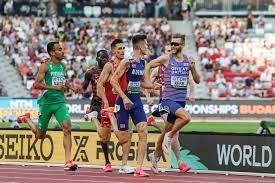
World champion Sha’Carri Richardson and Elaine Thompson-Herah headline the women’s 100m, along with world indoor 60m champion Julien Alfred and Marie-Josee Ta Lou-Smith, while world indoor 60m champion Christian Coleman and Ackeem Blake are among the fastest entered in the men's 100m.
Perhaps the most dominant athlete entering the meeting is Grant Holloway, the world 110m hurdles champion who has won all 10 races he has contested this year, including the indoor season and heats. That also includes running a world-leading 13.07 into a headwind to win in Atlanta last weekend.
The three-time world champion's last loss came on the very same Hayward Field track, at last September’s Prefontaine Classic. The only remaining gap on Holloway’s resume is an Olympic gold medal, and Saturday’s race could be an early preview of Paris, as the field includes five who raced in last summer’s World Championships final in Budapest, including silver medallist Hansle Parchment and Daniel Roberts, who earned bronze.
Shot put world record-holder and multiple world and Olympic champion Ryan Crouser will open his outdoor season in his home state and at the stadium where he owns the facility record, while trying to best Leonardo Fabbri’s world-leading mark of 22.95m.

Since 2023, Crouser has lost in just one final – and it was at September’s Prefontaine Classic to Joe Kovacs, who won in Los Angeles last weekend with 22.93m, and is entered again. Payton Otterdahl, who owns the world No.3 mark this year, also is in the field.
Those events offer no shortage of global medallists. Few, however, carry the prospect for as much drama as the mile.
Over the past year, Olympic 1500m champion Jakob Ingebrigtsen and Josh Kerr, who outkicked Ingebrigtsen for last year’s world title in Budapest, have carried on a battle of words through the press about who could prevail in Paris.
Commonwealth champion Olli Hoare, who is part of the field following his 1500m win in Los Angeles last week, said the sport was better for the attention drawn by the back-and-forth between Ingebrigtsen and Kerr – but added that other racers wanted to strike the appropriate level of respect for their competitors, such as Yared Nuguse, whose PB of 3:43.97 was set battling Ingebrigtsen (4:43.73) down to the line at September’s Pre Classic.
“This is a big one. This is going to be a big one for a lot of egos,” Hoare said in Los Angeles. “But I think it’s going to be a big one for me because it’ll be the first race where I’ll have an inkling of where I am with the world’s best. There’s a bit of tossing and turning with the banter but you can’t disrespect that field. If you do, you’ll get eaten alive.”
That list of seven men under 3:50, which includes Hoare, notably doesn’t include Jake Wightman, who will be racing Ingebrigtsen for the first time since their duel at the 2022 World Championships in Oregon, when Wightman won gold; Abel Kipsang, who was fourth at the Tokyo Olympics; Geordie Beamish, less than three months after he stormed to the world indoor title; or Lamecha Girma, the steeplechase world record-holder who is making his mile debut.
“Jake Wightman’s back, he’s a world champion,” Hoare said. “Yared Nuguse, 3:43 mile – these guys are keeping quiet and they’re going to wait for their opportunity to strike. And when they do strike, I guarantee they will make a comment.”
They are not the only accomplished names entered in the distances.
Athletics Kenya will determine its men's and women's Olympic 10,000m qualifiers at Hayward Field, with Kenya's two-time world cross-country champion Beatrice Chebet, the world leader at 5000m this season, part of a women's race that will include world champion Gudaf Tsegay of Ethiopia, eight months after Tsegay set the world 5000m record on the same track.
World record-holder Beatrice Chepkoech will attempt to retain her controlling hold over the steeplechase when she races top challenger Faith Cherotich. The Kenyan duo produced the two fastest times in the world this year at the Diamond League meeting in Xiamen, which Chepkoech won in 8:55.40 to Cherotich’s 9:05.91. Olympic silver medallist Courtney Frerichs will no longer run after injuring the ACL and meniscus in her right knee.
One week after winning in Los Angeles, Diribe Welteji leads the 1500m field that includes 13 women who have run under four minutes. World indoor 3000m champion Elle St Pierre, who won the 5000m in Los Angeles, is running her first 1500m of the season, with Laura Muir, Nikki Hiltz, Jessica Hull, Hirut Meshesha and Cory McGee also entered.
Multiple world and Olympic gold medallist Sifan Hassan, as well as world No.2 Ejgayehu Taye, will feature in the 5000m.
In the field, world and Olympic pole vault champion Katie Moon opens her outdoor season against Sandi Morris, and in the triple jump four of the top five women this season are entered, led by Thea LaFond, whose 15.01m jump to win the world indoor title in Glasgow still stands as the mark to beat.
Olympic discus champion Valarie Allman has not lost in Eugene in two years, a run that includes claiming September’s Diamond League final. That could change on Saturday because of the presence of world leader Yaime Perez, who finished second to Allman in Xiamen last month.
In the men’s 200m, top US sprinters who will duel at the Olympic trials only weeks later will face off. Kenny Bednarek, fresh off a world-leading 19.67 in Doha, is scheduled to race against world No.2 Courtney Lindsey (19.71), with world silver medallist Erriyon Knighton making his season debut. Joe Fahnbulleh and Kyree King, winner of the Los Angeles Grand Prix 100m, are also entered.
Another winner in Los Angeles, Rai Benjamin, headlines the men’s 400m hurdles, and he enters with considerable confidence after running 46.64, the ninth-fastest performance of all time.
“I think I’m the fastest guy in the field, honestly,” Benjamin said of potential Olympic chances.
The women’s 100m hurdles and women’s hammer will not count towards Diamond League points totals, but will be more potential previews for global championships.
Women who account for five of the year’s six fastest times, all of whom are separated by fractions of a second, will face off in the hurdles. Tonea Marshall, fresh off her victory in Los Angeles in 12.42, leads 2019 world champion Nia Ali, Olympic champion Jasmine Camacho-Quinn, two-time world champion Danielle Williams and world indoor champion Devynne Charlton.
Brooke Andersen’s 79.92m throw from earlier this month remains the world-leading hammer mark this season but she will be challenged by world champion Camryn Rogers, 2019 world champion DeAnna Price and world silver medallist Janee’ Kassanavoid, who own the next three farthest throws this season.
by Andrew Greif for World Athletics
Login to leave a comment
Prefontaine Classic
The Pre Classic, part of the Diamond League series of international meets featuring Olympic-level athletes, is scheduled to be held at the new Hayward Field in Eugene. The Prefontaine Classicis the longest-running outdoor invitational track & field meet in America and is part of the elite Wanda Diamond League of meets held worldwide annually. The Pre Classic’s results score has...
more...Olympians and national champions to headline stacked professional athlete field at 2023 USATF 5K Championships
Weini Kelati, Courtney Frerichs, Keira D’Amato, Woody Kincaid, and Zach Panning to race for world’s largest 5K prize purse; Nearly 10,000 runners to follow in footsteps of pros by racing Abbott Dash to the Finish Line 5K.
Five Olympians, one Paralympian, and four athletes who competed at this year’s World Athletics Championships will race in the 2023 USA Track & Field (USATF) 5K Championships at the Abbott Dash to the Finish Line 5K on Saturday, November 4. The event will take place in Midtown Manhattan the day prior to the TCS New York City Marathon and will be broadcast live on USATF.TV. Abbott will return as the title partner of the event which features a $79,500 prize purse – the largest of any 5K race in the world.
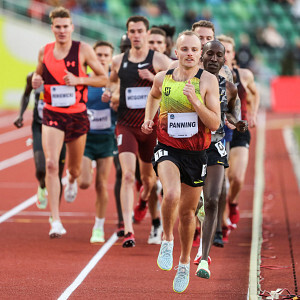
In the women’s race, two-time NCAA champion Weini Kelati will return in search of her third consecutive title in the event. Each of the last two years she has smashed the event record, taking the tape in 15:18 in 2021 and 15:15 in 2022. She will be challenged for the top spot on the podium this year by three-time national champion Keira D’Amato, 2023 U.S. cross-country champion Ednah Kurgat, and U.S. Olympians Abbey Cooper, Courtney Frerichs, Colleen Quigley, and Rachel Smith.
“Doing the Abbott Dash 5K is becoming a little bit of a early season tradition for me,” Kelati said. “Although my fall season looked a little bit different this year because of the opportunity I had to represent Team USA at the World Road Running Championships in Latvia, I’m really happy I get to come back to New York to try for my third straight 5K national title.”
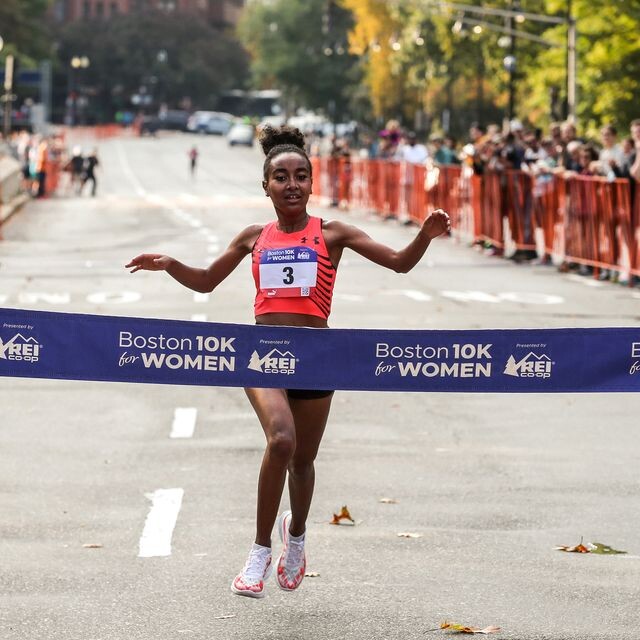
Woody Kincaid, the U.S. 10,000-meter champion and American record-holder in the indoor 5,000 meters, will lead the men’s field. Lining up against him will be Olympic champion Matthew Centrowitz, the top American finisher at the World Athletics Championships marathon this year Zach Panning, 2023 B.A.A. 5K champion Morgan Beadlescomb, and last year’s fourth through sixth-place finishers in New York, Ahmed Muhumed, Alec Basten, and Brian Barraza.
“I still see my career being mostly on the track for the next few years, but I like the idea of throwing in some more road races when it makes sense,” Kincaid said. “As I look towards the Paris Games, the Abbott Dash will be a nice jump-start to my 2024 training, and it will be cool to be in the middle of the big city marathon hoopla without having to go the full 26.2.”
Following in the footsteps of the professional athletes, nearly 10,000 runners will participate in the Abbott Dash to the Finish Line 5K, including top local athletes and many runners in the marathon on November 5.
Abbott, the title sponsor of the Abbott World Marathon Majors, is the sponsor of the Abbott Dash to the Finish Line 5K for the seventh time. Abbott, a global healthcare leader, helps people live more fully with life-changing technology and celebrate what’s possible with good health.
The Abbott Dash to the Finish Line 5K annually provides TCS New York City Marathon supporters, friends, and families the opportunity to join in on the thrill of marathon race week. The course begins on Manhattan’s east side by the United Nations, then takes runners along 42nd Street past historic Grand Central Terminal and up the world-famous Avenue of the Americas past Radio City Music Hall. It then passes through the rolling hills of Central Park before finishing at the iconic TCS New York City Marathon finish line.
The Abbott Dash to the Finish Line 5K and USATF 5K Championships will be broadcast live via USATF.TV. The broadcast is scheduled to begin at 8:20 a.m. ET with the first race starting at 8:30 a.m. ET.
About New York Road Runners (NYRR)
NYRR’s mission is to help and inspire people through running. Since 1958, New York Road Runners has grown from a local running club to the world’s premier community running organization. NYRR’s commitment to New York City’s five boroughs features races, virtual races, community events, free youth running initiatives and school programs, the NYRR RUNCENTER featuring the New Balance Run Hub, and training resources that provide hundreds of thousands of people each year with the motivation, know-how, and opportunity to Run for Life. NYRR’s premier event is the TCS New York City Marathon. Held annually on the first Sunday in November, the race features a wide population of runners, from the world’s top professional athletes to a vast range of competitive, recreational, and charity runners. To learn more, visit www.nyrr.org.
by Running USA
Login to leave a comment
Dash to the Finish Line
Be a part of the world-famous TCS New York City Marathon excitement, run through the streets of Manhattan, and finish at the famed Marathon finish line in Central Park—without running 26.2 miles! On TCS New York City Marathon Saturday, our NYRR Dash to the Finish Line 5K (3.1 miles) will take place for all runners who want to join in...
more...Josh Kerr, Elle St. Pierre, and Nikki Hiltz to Headline Professional Athlete Field at New Balance 5th Avenue Mile
World champion Josh Kerr, U.S. Olympian Elle St. Pierre, and American mile record-holder Nikki Hiltz will headline a world-class professional athlete field that spans 14 different countries at the New Balance 5th Avenue Mile on Sunday, September 10. The New Balance 5th Avenue Mile – the world’s most iconic road mile race since 1981 – stretches 20 blocks down Manhattan’s most famous thoroughfare.
Great Britain’s Kerr will arrive in New York fresh off winning a world title in the 1,500 meters in Budapest; he is in search of his first victory on 5th Avenue in his second appearance in the event. Kerr also owns an Olympic bronze medal in the 1,500 meters from the Tokyo 2020 Games.
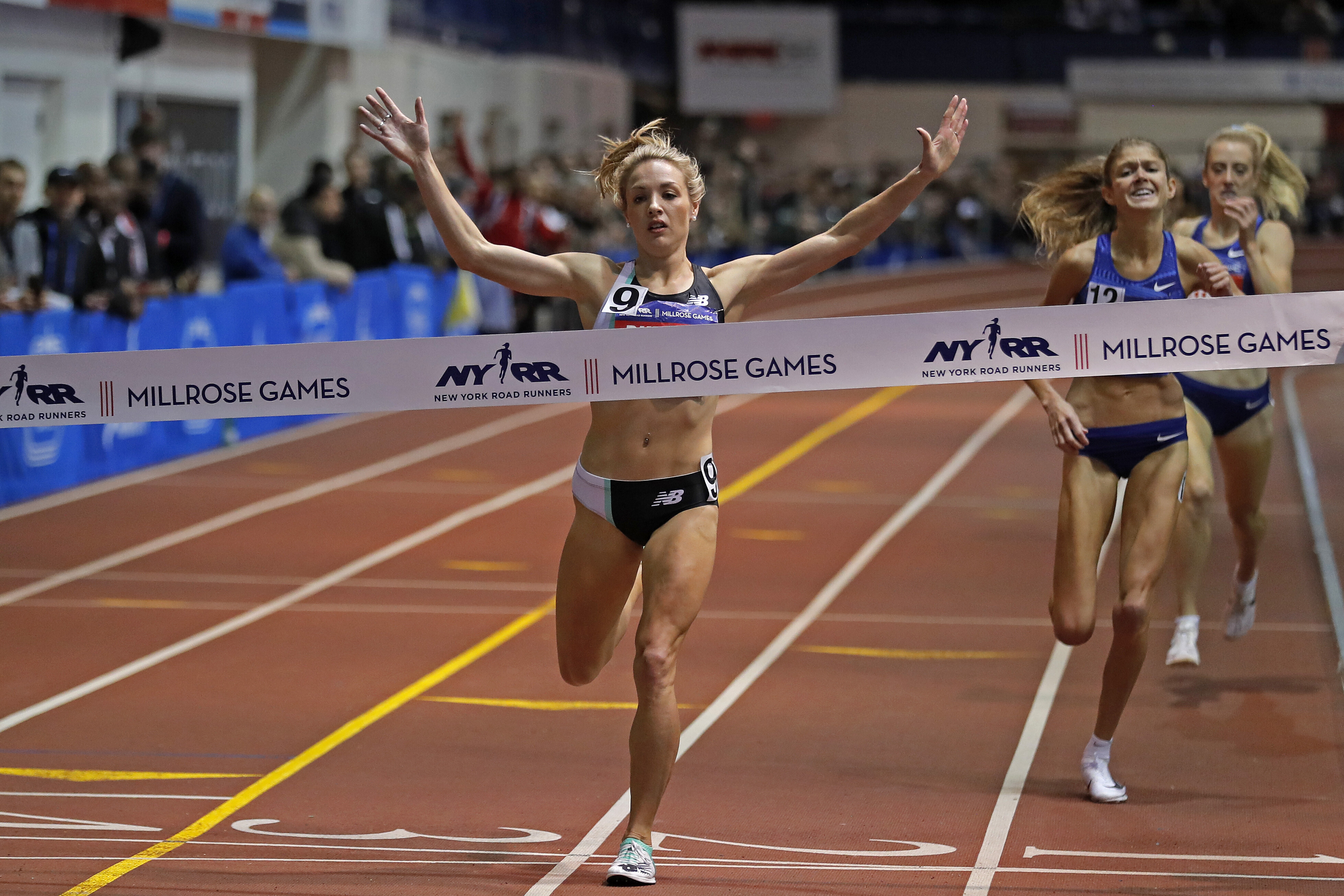
“Winning the World Championships was the culmination of every step of running I’ve ever taken,” Kerr said. “Now, my confidence is higher than it’s ever been, and I have some unfinished business to take care of on 5th Avenue.”
Lining up against Kerr will be New Zealand’s 5,000-meter record-holder George Beamish, and an American contingent led by 2023 Falmouth Mile champion Johnny Gregorek, last year’s 1,500-meter national champion Cooper Teare, two-time 5th Avenue Mile podium finisher Sam Prakel, and U.S. Olympian Woody Kincaid.
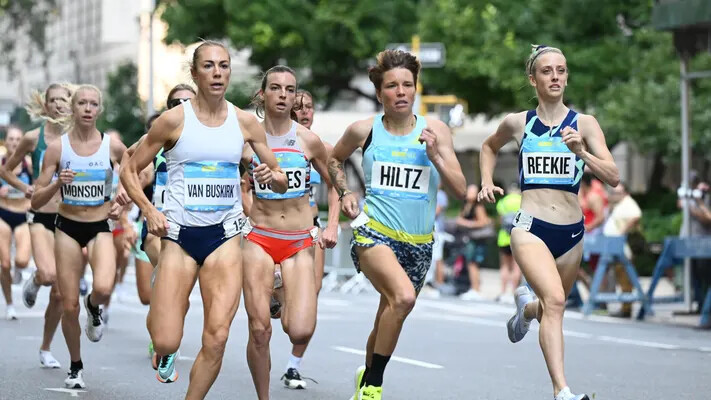
In the women’s race, U.S. Olympian St. Pierre will make her return to New York for the first time since finishing as runner-up at the event in 2019. It will also be her first race back since giving birth in March.
“My preparation for the New Balance 5th Avenue Mile this time has been different, as I fit training around feedings, nap time, and playing with Ivan,” St. Pierre said. “But my body feels good, and the workouts have been solid. I’m excited to be back on 5th Avenue this weekend.”
She will be joined at the start line by Hiltz, Great Britain’s 2021 New Balance 5th Avenue Mile champion Jemma Reekie, Great Britain’s reigning 1,500-meter champion Katie Snowden, Mexican record-holder Laura Galvan, Australian record-holder Jessica Hull, Japanese record-holder Nozomi Tanaka, and Jamaican record-holder Adelle Tracey. Olympian Courtney Frerichs and four-time NCAA champion Dani Jones will also toe the line for the U.S.
In addition to professional athlete and age-group heats, this year’s New Balance 5th Avenue Mile will feature Back to School Mile heats for youth, a New Balance Run Your Way Mile for first-time marathoners using NYRR Coaching Lab, a George Sheehan Memorial Mile for seniors, an NYPD and FDNY heat for service members, and NYRR Road Mile Championship races.
In partnership with NYRR and USA Track & Field, NBC will broadcast the event nationally from 12:00 to 1:00 p.m. ET. The broadcast will feature live coverage of the professional athlete races as well as a recap of the day’s earlier heats. Live coverage of the event will be available internationally on USATF.TV.
Login to leave a comment
New Balance 5th Avenue Mile
The New Balance 5th Avenue Mile opens a beautiful 20-block stretch of 5th Avenue to runners of all ages and abilities who want to run their best mile in New York City. Special races include a youth mile, the George Sheehan Memorial Mile for runners age 60 and over, the NYRR Road Mile Championships, and Olympic-caliber professional men's and women's...
more...An Olympian, a burrito, a failed drug test: Former ASU runner Shelby Houlihan looks to rebound after doping ban
On a cloudy, characteristically cool December night in Beaverton, Oregon, Shelby Houlihan, the American record holder in the 1,500 and 5,000 meters, accompanied Courtney Frerichs, the Olympic silver medalist in the steeplechase, and Frerichs’ sister, Lindsey, to an authentic Mexican food truck near her home.
The three ordered carne asada burritos and returned to Houlihan’s house to eat and watch “The Bachelorette.”
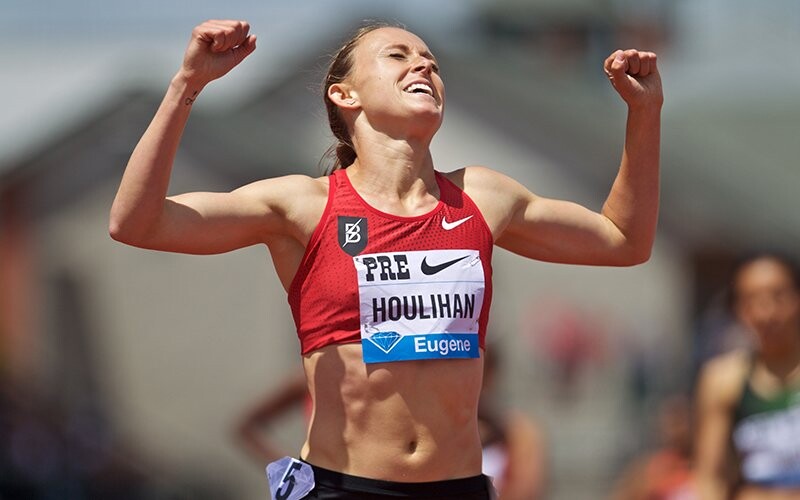
The next morning, on Dec. 15, 2020, the former Arizona State standout was given a random drug test. Weeks later, in mid-January, Houlihan was notified in an email from the Athletics Integrity Unit (AIU) that her urine sample revealed the presence of 19-norandrosterone (19-NA), a metabolite produced by the substance nandrolone – an anabolic steroid prohibited by the World Anti-Doping Agency (WADA).
She was issued a provisional suspension, which set off a cascade of events that led to a four-year ban, knocked her out of the U.S. Olympic Trials leading up to the Tokyo Olympics and will bar her from competing until January 2025 when she will be almost 32.
It is, Houlihan said, “an athlete’s worst nightmare.”
Houlihan, 29, has lost the financial support of Nike. She also saw former teammate Gabriela DeBues-Stafford leave the club rather than risk sanctions because of the Bowerman Track Club continued relationship with Houlihan.
Houlihan said her initial response to the positive test was “shock and disbelief.” She wondered, “How am I going to explain (the presence of a banned substance) when I don’t even know where it came from myself?”
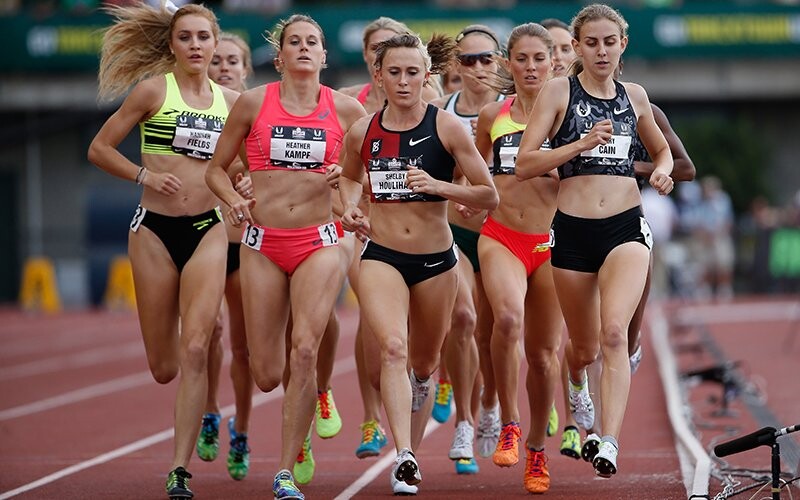
Houlihan was at a high-altitude training camp in Flagstaff when she received the email.
“I opened up my phone to an email that was urgent, confidential and … it was this lab report of scientific words that I could not read,” Houlihan told Cronkite News.
The Sioux City, Iowa, native said she read the email over about 10 times and had to Google which substance triggered the positive test, because she had never heard of nandrolone.
Then she called Jerry Schumacher, her coach at BTC, the professional Nike club that Houlihan had trained with since graduating from ASU in 2015.
“I’m just sobbing and trying to tell him what’s going on, but crying too hard,” Houlihan said.
The long road
Today, Houlihan lives alone in Portland and said she has relied on her former BTC teammates, her boyfriend and her family for support. She does odd jobs, including food delivery, and continues to train with the hope of returning to competition at an elite level.
It is not a situation she envisioned growing up in Sioux City, Iowa, surrounded by runners, including her mother, Connie, and her uncle, Bob Prince, who competed in college.
After winning several state titles at Sioux City East High School, Houlihan continued her success at Arizona State, where she won the NCAA 1,500 meters in 2014 and finished as a 12-time All-American, the second-most in program history.
She holds five school records: the outdoor 800 and 1,500 meters, and the indoor 800, mile and 3,000.
That success set the stage for 2016 Summer Olympics, where she finished 11th in the 5,000 meters and was the highest-placing U.S. runner in the race.
She also finished fourth in the 1,500 meters and set the American record at the 2019 World Outdoor Championships.
More Olympic success felt inevitable.
Shock and disbelief
Elise Cranny, a close friend and former Bowerman teammate of Houlihan’s, remembers that news of the positive test “didn’t really sink in” at first.
“I came back to the house, and I was like, ‘Man, something is very off … something is not right,’” said Cranny, who was living with Houlihan during the camp. “I think the initial reaction from everyone was disbelief, and like, ‘Oh, this is something that’s going to get figured out’ because it’s seriously wrong.”
Schumacher and Houlihan called attorney Paul Greene to “just try to figure out a game plan” and investigate further what could have happened.
The first step was a pregnancy test because nandrolone can be found in pregnant women. After she determined she wasn’t pregnant, Houlihan compiled a log of everything she ate the week before the test. She scoured text messages, bank statements, food receipts and iPhone locations to determine everything she had consumed.
“I was able to piece it together pretty well,” Houlihan said. “And then, ultimately, we just felt like the food truck the night before had to be the most likely source.”
Houlihan wouldn’t name the establishment that served her the burrito because she doesn’t “want to mess with any lawsuit.” However, she isn’t blaming the food truck.
“I don’t think they did anything wrong,” Houlihan said. “I think it just kind of happened.”
While Houlihan and her BTC teammates frequently ate at that food truck, she recalls that she received her order more quickly than usual, and the foil-wrapped burrito was unlabeled.
Houlihan believes she may have been mistakenly given a burrito containing offal (pig organ meat), which can contain nandrolone.
She remembers the meat in the burrito being finely chopped and that grease pooled in the foil. She said it seemed more rich than the burritos she had eaten there before, so much so that she was unable to finish it despite being very hungry after eating little else that day.
“We knew (nandrolone) can be found in pig offal, and we knew that I ate at a food truck that served pig offal 10 hours before (the test),” she said. “And we knew that when you ingest it, it can be at its highest levels 10 hours after ingestion, and that’s the exact kind of time frame that I had eaten that.
“And so as unlikely as all of those things were, it just seemed like the only thing that we could say, ‘All right, this makes some sense,’ and that’s really the only thing that we had to go on.”
Houlihan was the only one among the three who ate at the food truck who was tested.
A search for answers
She provided a hair sample that was examined by a toxicologist and it showed no trace of nandrolone. She also passed a polygraph examination that concluded she was not lying when asked if, at any time, she knowingly or intentionally ingested nandrolone.
Houlihan’s urine tests taken Nov. 22, 2020, Jan. 23, 2021, and Feb. 4, 2021– before and after the positive test – all were negative. She also had her vitamins and supplements analyzed by a lab.
The previous urine tests and the lab report convinced Houlihan that it’s unlikely the positive result was triggered by a supplement or vitamin she was taking. She is still being randomly tested and all of her ensuing tests have come back clean.
She believes that given “the information that we have right now, (the burrito) is the only thing that kind of makes any type of logical sense.”
Houlihan hired a private investigator to trace its sources of meat, but the effort was unsuccessful.
The private investigator found that the food truck owner purchased 30 pounds of pork stomach in a frozen batch from Iowa Beef Processors in September of 2020. However, the owner had no box or label from the meat used in December that could be traced to its processing plant.
And the investigator couldn’t determine whether the owner used pork from a castrated or uncastrated boar. Houlihan’s attorney argued it must have been uncastrated boar meat that triggered her positive test.
When the AIU officially charged Houlihan four months later, the U.S. Olympic Trials, scheduled for June 18-27, were fast approaching. Houlihan decided to go straight to the Swiss-based Court of Arbitration for Sport (CAS) to avoid missing the trials.
The CAS rejected Houlihan’s explanation of what happened and banned her from the sport for four years on June 11, 2021.
Houlihan’s ban lasts until Jan. 13, 2025. She missed last summer’s Tokyo Olympics, the 2022 World Athletics Championships in Oregon, and she’ll miss next year’s World Athletics Championships in Budapest and the 2024 Paris Olympics.
The CAS’s three-member panel found that Houlihan’s “explanation that the 19-NA in her sample resulted from her consumption of the meat of an uncastrated boar simply cannot be accepted. The explanation presupposes a cascade of factual and scientific improbabilities, which means that its composite probability is (very) close to zero.”
Lacking evidence
The panel said that Houlihan failed to prove that the burrito she ate contained boar offal.
“First, the athlete would have had to have been served pork at the food truck despite ordering beef,” the court said. “Second, the pork consumed would not have been ‘normal’ pork product ordered by the food truck, but uncastrated boar. Third, uncastrated boar enters the food chain through completely different channels than pork.”
The panel said that the polygraph result and Houlihan’s hair sample were not “sufficient for the Athlete to rebut the presumption that the ADRV (anti-doping rule violation) was intentional.”
The court also said the concentration of nandrolone in Houlihan’s urine was “2-3 times higher than the highest values reported in the scientific literature after the ingestion of much more significant quantities of meat of mature (uncastrated) boar.”
On June 14, 2021, Houlihan publicly announced she tested positive for nandrolone and would not be competing at the upcoming Olympic Trials. Because Houlihan hadn’t been racing, many thought she was battling injuries instead of serving a provisional suspension.
“And at the end of the day, the panel didn’t think it was probable enough, which is unfortunate,” Houlihan said. “But yeah, I mean, that’s the only thing that we really have as an explanation. I hope at some point, maybe some more information pops up, and maybe it’s something else entirely. I don’t know. But it would be great to have an answer at some point.”
In May, Houlihan appealed the suspension to the Swiss Federal Tribunal.
She lost. It was her last opportunity.
The hardest part to watch, Crany said, “is her getting renewed hope through the appeal process or through different things, and then seeing her kind of have that life back in her eyes again, just for it to come crashing down.”
At one point, Houlihan was offered a reduced sentence – a three-year ban instead of four years – if she admitted guilt.
She refused.
“I never even considered that to be an option, because I knew I didn’t take (nandrolone) intentionally,” Houlihan said. “And I wasn’t going to admit to something that I didn’t do. At least I fought for myself and tried to do the right thing. But taking accountability for something that I didn’t do, it’s definitely not on the table for me.”
Houlihan thinks the system is flawed because the doping agency never had to prove she took a banned substance.
“There was obviously something in my system and I understand that I have a responsibility for what’s in my body,” Houlihan said. “But I think knowing that I never intentionally put it there and (I’m) still having to serve a four-year ban is definitely a flaw in the system. I don’t feel like they did their due diligence in trying to figure out what the truth was. It was just at the end of the day I couldn’t, beyond a reasonable doubt, prove where it came from.”
Houlihan said she believes the burden of proof should be shifted and “split 50-50 between the doping agency and the athlete.” While she believes that she should have to prove what triggered the positive test, she also believes the doping agency should have to prove that she intentionally cheated.
“Just even the playing field a little bit,” Houlihan said. “If you’ve ingested something, it’s almost impossible to try to figure out where that is. Because you’re getting notified a month or two later, I don’t have the source anymore. So it’s just a really impossible task to try to figure out. And I think it’s pretty flawed that if you can’t figure it out, it’s just an automatic four-year ban, and you’re treated like a doper.”
A new normal
Houlihan’s life today includes strong family and friend support.
Cranny said she had a lot of conversations with BTC teammates to make sure Houlihan felt supported.
“What you initially think of is her mental health and someone’s life being completely ripped out from under them and not being able to do what you love to do and what she feels like she’s been born and made to do,” Cranny said. “In the beginning, you worry about her being by herself, and making sure that she has people around her and she feels supported.”
Shelby’s mother, Connie Houlihan, who lives in Phoenix, said she is worried about the mental toll on her daughter.
“You’re afraid of suicide,” Connie Houlihan said. “You know, everything’s a possibility … with depression and with something that critical that they took away from her. You don’t know. Of course, you’re scared to death.”
Connie said a couple of Shelby’s sisters went to be with Shelby right away because they didn’t want her alone. Shelby wouldn’t let her parents come visit, however, because, Connie said, “she was so overcome.”
“I think, if we would have flown there right away, she would have … this is the way she explained it to me, ‘That it would have made it all too real.’
“She was really struggling dealing with it,” Connie said. “She was crying all the time. But I think that was the hardest part for us that we couldn’t just jump on a plane and go and be with her because we respected her decision.”
Chloe Houlihan, one of Shelby’s five sisters, said her sister remained “very resilient through everything.” She said she has tried to be someone Shelby “can talk to when she’s kind of struggling.”
Shelby no longer trains with her BTC teammates, something which Chloe said has been difficult and “a little bit isolating” for her sister.
Until May, Houlihan was paying Schumacher to coach her as an independent athlete, but she confirmed she’s now training entirely by herself – using six years of past training logs as a reference.
“We just felt it was best to maybe cut ties for a little bit,” Houlihan said. “I think there was just a lot of publicity going on around me and him still working together. There was just a lot of scrutiny, I think.”
Some of that publicity and scrutiny was fueled by DeBues-Stafford’s decision to leave BTC because of Houlihan.
A two-time Canadian Olympian who placed fifth in the 1,500 at the Tokyo Olympics, DeBues-Stafford announced in April she left BTC due to Houlihan’s continued ban involvement with BTC at the time.
“Fundamentally, I left the Bowerman Track Club because, despite my best efforts, I was unable to verify that the club was not in violation of World Athletics anti-doping regulations,” DeBues-Stafford said in an interview conducted via email.
DeBues-Stafford was concerned that Houlihan was working out “under the guidance of” the three BTC coaches (Schumacher, Shalane Flanagan and Pascal Dobert) at the same location and times that other BTC athletes were working out while under the supervision of the same coaches.
“While we never did a rep together, there was still what felt to me like an unnecessarily risky proximity between both men’s and women’s teams and an athlete serving a ban,” DeBues-Stafford said.
According to DeBues-Stafford, Houlihan would also use the private gym – built at Schumacher’s residence for BTC athletes to use – at the same time BTC athletes were there under staff supervision.
“Shelby would drive to the Nike campus up to four times a week at the team’s regular time and the starting point for our regular daily runs together so she could run with us,” DeBues-Stafford said. “If she arrived before us, she would wait for BTC athletes at the meeting spot to see if any BTC athletes arrived so she could run with us. These sometimes included long runs. She also ran with the team on a regular basis at altitude camp in Flagstaff.”
Houlihan said she and her attorney inquired about the rules of her ban and were told that she couldn’t go to any practices or work out with anyone on the team, but if she happened to bump into them and they were running at the same place, then she could run with them.
“My attempts to discuss my concerns with team staff were rebuffed, as were the earlier and more sustained efforts of other teammates,” DeBues-Stafford said.
BTC did not receive independent legal advice on the issue, DeBues-Stafford said. She also said Houlihan shared accommodations with a full-time member of BTC staff during the Flagstaff camp, and those accommodations were used for organized BTC athlete support activities.
“When I asked if Shelby’s lawyer had explicitly asked the AIU about her using the same gym as BTC and about how to handle the altitude trip, I did not get a clear response,” DeBues-Stafford said.
DeBues-Stafford said she “independently sought answers,” and reached out to an anti-doping organization to verify that BTC’s collective behavior was within the rules and that there was no liability on anyone other than Houlihan.
According to DeBues-Stafford, “the anti-doping organization could not guarantee that the actions of BTC and Shelby did not constitute a violation, and could not guarantee that other athletes and support staff couldn’t face repercussions either.”
She said the anti-doping agency cited two rules in the World Anti-Doping code and advised her to leave BTC and submit an official anonymous tip to the AIU.
A trying time
While Schumacher and some of Houlihan’s other teammates knew about her positive test in January of 2021, DeBues-Stafford did not learn about Houlihan’s positive test until a couple of days before the team publicly announced the ban about six months later.
“Learning this news in mid-June almost derailed my Olympics,” DeBues-Stafford wrote in an Instagram post in April. “It was a small miracle that I showed up in Tokyo in shape to run sub-four (minutes) twice in 48 hours and place fifth.”
Houlihan said she was “surprised” and felt “blindsided and hurt and confused” by DeBues-Stafford’s social media posts because DeBues-Stafford had not told her about her concerns.
“I never knew that that was a problem for her,” Houlihan said. “And I’m not sure why she didn’t reach out to me. I reached out to her after I read her posts.”
Houlihan said she apologized to DeBues-Stafford for being affected by her situation.
“I think she just felt like she didn’t want to add to what I was going through by bringing it to me, which I don’t agree with, personally,” Houlihan said. “I felt like I would have rather had that conversation with her and I would have been more than glad to try to help that situation for her in any way, instead of what ended up happening. I think that was a lot worse – what ended up happening – than her just coming and talking to me about it.”
DeBues-Stafford has since moved to Victoria, B.C. and is now coached by Trent and Hilary Stellingwerff.
“When I told Jerry (Schumacher) I was leaving BTC due to the lack of separation between Shelby and the group, he asked if I really wanted to leave, given he was thinking of possibly no longer coaching Shelby if she lost her appeal at the Swiss Federal Tribunal,” Debues-Stafford said.
Debues-Stafford said Houlihan was still driving to the Nike campus and running with BTC when Debues-Stafford left Portland on March 31.
“Growing fear over the team potentially breaking rules, coupled with frustration at the lack of action by the team left me in an awful and unsustainable headspace,” DeBues-Stafford said. “I left altitude camp early at the end of February to get some breathing space and made my decision to leave the team.”
A powerful influence
Cranny said she misses running with Houlihan and credits her for pushing her to succeed.
“I think of her all the time when I’m racing now,” Cranny said. “She’s a huge reason why I feel like I am where I am right now in my own running. She just really opened my eyes to the importance of not limiting yourself and putting yourself in it.”
Although BTC could look a lot different, Houlihan would still like to eventually come back to the group once her ban is up.
“I definitely would like to rejoin Bowerman,” Houlihan said. “That’s like my family, basically. I’ve been a part of that group since I went pro in 2015 and I know those athletes so well. And I know that that training environment is great for me.”
Cranny also wants Houlihan to rejoin BTC and said she can’t picture her former teammate anywhere else
“It feels like this is her family,” Cranny said. “I feel like everyone here is really supportive of her, really close friends with her. So I hope (she rejoins BTC). That’s something that we’ve definitely talked about as a team is wanting to work out with her again once the ban is up.”
When asked if she thinks she can still compete at the elite level once the ban is up, Houlihan said, “I guess that’s one thing that we’re just gonna have to find out.”
Houlihan is no longer a member of BTC nor being paid by Nike. She spent $250,000 in legal fees fighting her ban without any financial support from the Beaverton-based shoe and apparel giant.
“They said that they support me, and they believe in me, but as far as financially, I haven’t really received any support from them in that way,” Houlihan said.
Houlihan lost her six-figure professional contract with Nike and hasn’t had a paycheck in over a year. Her Nike deal also gave her the opportunity to earn performance-based bonuses on top of her base compensation, income that is also gone.
Houlihan’s mom called the entire process “an injustice” and said it wouldn’t make sense for her daughter to jeopardize her Nike contract by doping.
“Why would somebody with a contract that she had and the money that she was making, why would she cheat?” Connie said. “She had a contract (with Nike) through the (Tokyo and Paris) Olympics like, why would you cheat?”
Houlihan said Nike hasn’t offered her a job, either.
“I’ve been doing some food delivery things like DoorDash and stuff, just to try to make a little money on the side, but yeah, just trying to get by.”
Houlihan continues to train but admits it is difficult.“It’s been really challenging, to be honest,” Houlihan said.
As she trains alone, without her former coaches and teammates for support and motivation, Houlihan said she sometimes stops halfway through a workout or doesn’t always finish it at all. She finds it more difficult to hit her targeted times.
“I think it’s easy to do that when I’m having a great time and I’m having fun, and I’m finding joy in running,” Houlihan said. “But a lot of the things that make it fun aren’t really there for me right now.”
by David Veenstra (Cronkite News)
Login to leave a comment
USA names 151-strong team for World Championships in Oregon
A team of 151 athletes will represent the USA on home soil at the World Athletics Championships Oregon22 on July 15-24.
Multiple global champions and world record-holders feature in the squad as Eugene’s Hayward Field gets ready to welcome the world for the first-ever outdoor World Athletics Championships to be hosted in the USA.
World record-holder and Olympic champion Sydney McLaughlin will take on the former world record-holder and reigning world champion Dalilah Muhammad as they look to further cement the US women’s global dominance in the 400m hurdles final on July 22.
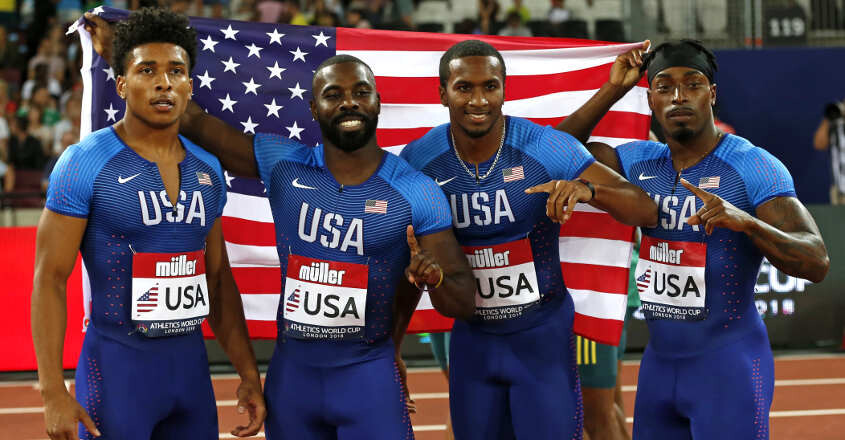
In the men’s shot put on July 17, world record-holder and Olympic champion Ryan Crouser will go after the one title that has so far eluded him – that of world champion – and will take on two-time world champion Joe Kovacs.
Such is the strength of the women’s 800m squad of Athing Mu, Ajee Wilson and Raevyn Rogers, as well as the men’s 200m team of Noah Lyles, Erriyon Knighton, Fred Kerley and Kenny Bednarek, that athletes will be aiming for USA medal sweeps.
Returning to defend the titles they won in Doha in 2019 are Nia Ali (women's 100m hurdles), Donavan Brazier (men's 800m), Christian Coleman (men's 100m), Grant Holloway (men's 110m hurdles), Kovacs (men's shot put), Lyles (men's 200m), Muhammad (women's 400m hurdles), DeAnna Price (women's hammer) and Christian Taylor (men's triple jump).
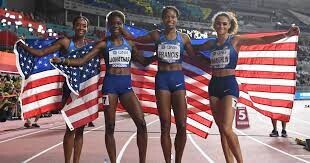
Making her 10th World Championships appearance will be Allyson Felix, who has 18 world medals, including 13 golds, to her name and will be in the mixed 4x400m pool.
“I couldn’t be prouder to lead this amazing team for this once-in-a-lifetime event,” said USATF CEO Max Siegel. “We have been given the unique opportunity to impact the track and field landscape in the US, and we’ve put our best team forward.”
USA team for Oregon
Women
100m: Aleia Hobbs, Melissa Jefferson, Twanisha Terry
200m: Tamara Clark, Jenna Prandini, Abby Steiner
400m: Talitha Diggs, Kendall Ellis, Lynna Irby
800m: Athing Mu, Raevyn Rogers, Ajee Wilson
1500m: Sinclaire Johnson, Cory McGee, Elle St. Pierre
5000m: Elise Cranny, Emily Infeld, Karissa Schweizer
10,000m: Alicia Monson, Natosha Rogers, Karissa Schweizer
Marathon: Emma Bates, Keira D’Amato, Sara Hall
3000m steeplechase: Emma Coburn, Courtney Frerichs, Courtney Wayment
100m hurdles: Nia Ali, Alia Armstrong, Keni Harrison, Alaysha Johnson
400m hurdles: Shamier Little, Sydney McLaughlin, Dalilah Muhammad, Britton Wilson
Heptathlon: Michelle Atherley, Anna Hall, Kendell Williams, Ashtin Zamzow-Mahler
High jump: Vashti Cunningham, Rachel Glenn, Rachel McCoy
Pole vault: Gabriela Leon, Sandi Morris, Katie Nageotte
Long jump: Quanesha Burks, Tiffany Flynn, Jasmine Moore
Triple jump: Tori Franklin, Jasmine Moore, Keturah Orji
Shot put: Adelaide Aquilla, Chase Ealey, Maggie Ewen, Jessica Woodard
Discus: Valarie Allman, Rachel Dincoff, Veronica Fraley, Laulauga Tausaga-Collins
Hammer: Brooke Andersen, Annette Echikunwoke, Janee Kassanavoid, DeAnna Price
Javelin: Ariana Ince, Maggie Malone, Kara Winger
20km race walk: Robyn Stevens, Miranda Melville
35km race walk: Stephanie Casey, Miranda Melville, Maria Michta-Coffey
4x100m: Celera Barnes, Tamari Davis, Gabby Thomas (plus athletes named in individual sprints)
4x400m: Wadeline Jonathas, Jaide Stepter, Kaylin Whitney (plus athletes named in individual sprints)
Men
100m: Marvin Bracy, Trayvon Bromell, Christian Coleman, Fred Kerley
200m: Kenny Bednarek, Fred Kerley, Erriyon Knighton, Noah Lyles
400m: Champion Allison, Michael Cherry, Michael Norman, Randolph Ross
800m: Donavan Brazier, Bryce Hoppel, Jonah Koech, Brandon Miller
1500m: Johnny Gregorek, Cooper Teare, Josh Thompson
5000m: Grant Fisher, Woody Kincaid, Abdihamid Nur
10,000m: Grant Fisher, Joe Klecker, Sean McGorty
Marathon: Elkanah Kibet, Colin Mickow, Galen Rupp
3000m steeplechase: Hillary Bor, Evan Jager, Benard Keter
110m hurdles: Devon Allen, Trey Cunningham, Grant Holloway, Daniel Roberts
400m hurdles: Trevor Bassitt, Rai Benjamin, Khallifah Rosser
Decathlon: Steven Bastien, Kyle Garland, Zach ZiemekHigh jump: Darius Carbin, JuVaughn Harrison, Shelby McEwen
Pole vault: Andrew Irwin, Chris Nilsen, Luke WinderLong jump: Marquis Dendy, Steffin McCarter, Will Williams
Triple jump: Chris Benard, Will Claye, Donald Scott, Christian Taylor
Shot put: Josh Awotunde, Ryan Crouser, Joe Kovacs, Tripp Piperi Discus: Andrew Evans, Sam Mattis, Brian Williams
Hammer: Daniel Haugh, Rudy Winkler, Alex Young
Javelin: Ethan Dabbs, Tim Glover, Curtis Thompson
20km race walk: Nick Christie, Dan Nehnevaj
35km race walk: Nick Christie
4x100m: Kyree King, Josephus Lyles, Elijah Hall-Thompson (plus athletes named in individual sprints)
4x400m: Bryce Deadmon, Vernon Norwood, Elija Godwin (plus athletes named in individual sprints)
Mixed
4x400m: Allyson Felix, Kennedy Simon, Ismail Turner, Noah Williams (plus athletes named in individual sprints).
by World Athletics
Login to leave a comment
World Athletics Championships Budapest23
Budapest is a true capital of sports, which is one of the reasons why the World Athletics Championships Budapest 2023 is in the right place here. Here are some of the most important world athletics events and venues where we have witnessed moments of sporting history. Throughout the 125-year history of Hungarian athletics, the country and Budapest have hosted numerous...
more...Highlights from the 2022 USATF Outdoor Championships June 26
The USATF Outdoor Championships at Hayward Field in Eugene, Oregon have finished and the athletes set to represent Team USA at the World Athletics Championships have been decided. Over four days, there was a world record set and plenty of great battles for the limited spots on the world team.
The World Athletics Championships will be back at Hayward Field from July 15 to July 24. It will be the first time the United States is hosting the meet.
Here are the highlights from the 2022 USATF Outdoor Championships.
Cranny wins a close one in the 5,000 meters
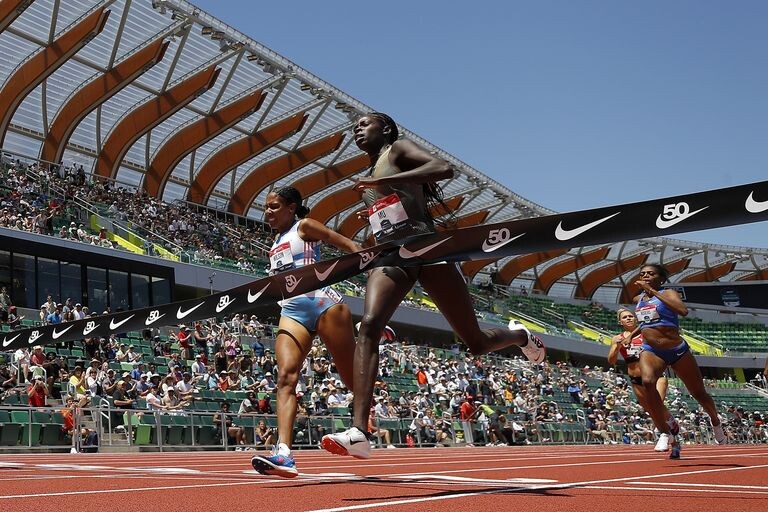
After a schedule change to avoid hot conditions, the women’s 5,000 meters opened the final day of the USATF Outdoor Championships. Unfortunately, the women couldn’t completely escape the heat—the temperature on the track read 82 degrees.

As a result, the women dawdled, running most of the race in a tight pack. With 1600 meters remaining, Karissa Schweizer—who placed fourth in the 1500 meters on Saturday—picked up the pace. With two laps, four women separated themselves: Schweizer, indoor American record holder Elise Cranny, world championships bronze medalist Emily Infeld, and Weini Kelati. Kelati fell off the group by the bell, and the top three were set. Now, it was a battle for place.
Schweizer, Cranny, and Infeld battled down the final straightaway, trading leads multiple times. When the dust settled, Cranny earned the victory, with Schweizer and Infeld less than a half second behind in that order.
Each woman completed their own unique narrative coming into the race. Cranny scratched from the USATF 10,000-meter championships on May 27, saying in an Instagram post she hadn’t been feeling like herself in training. Schweizer, who did qualify for the 10,000 meters, also placed fourth in the 1500. With this 5,000-meter performance, she completed one of the best championship runs in U.S. history. Finally, after just missing out on qualifying for the 10,000-meter world team, Infeld earned a spot on her first global championship team since 2017.
Fisher takes down 5,000 meet record, Kincaid unleashes furious kick for second
Conversely to the women’s race, the men’s 5,000 meters went out hard. Hillary Bor, who qualified for the steeplechase team on Saturday, kept checking his watch—apparently pacing the race. Multiple time global medalist Paul Chelimo and Bowerman Track Club teammates Grant Fisher and Woody Kincaid held position right behind Bor.
Bor dropped out at 1800 meters after splitting 4:12 for the mile. Evan Jager, who also qualified for the steeplechase world team, led the men for another mile. Fisher, Emmanuel Bor, and NCAA indoor 5,000-meter champion Abdihamid Nur of Northern Arizona quickly separated from the group after Jager dropped out.
Over the final 1200, Fisher put on a clinic, squeezing the pace over each lap until he was all alone. He won the race in 13:03.86, a meet record.
The most exciting portion of the race occurred offscreen. After trailing the top three by five seconds with 400 to go, Kincaid unleashed a monstrous 54.24 final lap to take silver in a time of 13:06.70. Nur held on to earn his first world championship berth, running 13:08.63. Emmanuel Bor faded to fifth.
Coburn claims eighth straight U.S. steeplechase title
After a moderate first 1,000 meters, four women were clear of the pack in the women’s steeplechase: recent NCAA champion Courtney Wayment, Gabi Jennings, six-time U.S. champion Emma Coburn, and Olympic silver medalist and American record holder Courtney Frerichs.
That group whittled down to Wayment, Coburn, and Frerichs by 800 to go. Half a lap later, Coburn quickened her pace. Wayment and Frerichs, perhaps surprised by the move, didn’t go with Coburn, who put more and more distance on them over the final lap. Coburn notched her eighth consecutive U.S. title in a season best of 9:10.63. Wayment finished second, and Frerichs took third.
Ajeé Wilson nearly upsets the defending Olympic champion The women’s 800 meters promised to be the event of the meet, and it didn’t disappoint.
Athing Mu, defending champion, jumped off the line hard to take her traditional spot in the lead. Olivia Baker and indoor world champion Ajeé Wilson were right on her heels while Olympic bronze medalist Raevyn Rogers hung around mid-pack.
All of the women were still together with 200 to go. The broadcast commentators predicted that Mu would break the race open before the end of the bend, but spectators were treated to something more interesting: Wilson was right on Mu’s shoulder with 100 to go. With gritted teeth, the two athletes dashed neck-and-neck down the straightaway. It looked as if Wilson had the upper hand, but the Olympic champion pulled through in the final meters to snag the victory in 1:57.16. Rogers slingshotted out of the pack to pass three runners for third.
Bryce Hoppel earns first outdoor national title
The men’s 800 meters featured a consequential last 100 meters. Texas A&M’s Brandon Miller set a fast early pace, crossing the 400-meter mark in 51.62. He fell to second as Hoppel took control on the final bend.
It wasn’t over yet, as the entire field was still in striking range with 100 left. But Hoppel and Jonah Koech surged ahead, while Miller duked it out with a late-charging Clayton Murphy for the third qualifying spot. Miller overtook the two-time Olympian with a dramatic dive at the line, securing a trip to worlds. Hoppel’s winning time was 1:44.60, a season best, while Koech’s ran a personal best of 1:44.74.
Noah Lyles charges late to overtake 18-year-old star Erriyon Knighton
After 100 meters, it looked like 18-year-old Erriyon Knighton was on his way to his first national championship. But that’s why there’s another 100 meters in this event, because defending world champion Noah Lyles found another gear. With a smile and finger pointed at Knighton, Lyles broke the tape first in 19.67. Knighton finished second, while 100-meter national champion Fred Kerley nabbed another world team spot. Because Noah Lyles has a bye to the world championships, fourth-placer Kenny Bendarek also qualified.
NCAA champion Abby Steiner becomes U.S. champion
With defending U.S. champion Gabby Thomas in poor form this year, the gate was open for a new women’s 200-meter champion. Abby Steiner, who won the NCAA title two weeks ago, capitalized on that opening. She won the title with a world lead and personal best of 21.77. Tamara Clark and Jenna Prandini qualified as well with their respective second and third place finishes.
by Runner's World
Login to leave a comment
USATF Outdoor Championships
With an eye toward continuing the historic athletic success of 2022, USATF is pleased to announce competitive opportunities for its athletes to secure qualifying marks and prize money, including a new Grand Prix series, as they prepare for the 2023 World Athletics Championships in Budapest, Hungary.As announced a few months ago, the 2023 Indoor Championships in Nanjing, China have been...
more...Shalane Flanagan will conclude her six major marathon at New York City Marathon
Sometime before noon in Central Park on Sunday, Shalane Flanagan should cross the finish line of the NYC Marathon. That, alone, will be no small feat for the 40-year-old former Olympic runner.
Now consider this: She will become the first person to ever run the six World Marathon Majors in just six weeks.
Because of the pandemic, the Boston, London and Tokyo Marathons were moved from their traditional spring dates to October, and now all six races are being staged in a 42-day stretch for the first -- and likely only -- time.
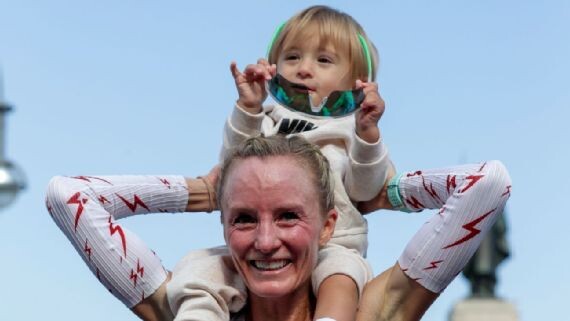
"When I saw how the marathon schedule unfolded, it felt like a once-in-a-lifetime opportunity," said Flanagan. "I coined it an eclipse because it was just so rare this would ever happen. It didn't take long for me to think, 'Why shouldn't I be the one to do it?'"
While Flanagan is no stranger to the marathon distance -- she won the New York Marathon in 2017 -- her mission is all the more improbable as she is technically retired, after announcing her departure from the sport two years ago.
"My retirement coincided with two reconstructive knee surgeries, and I basically couldn't run for a year. Then we hit a pandemic," Flanagan said ahead of Sunday's race (8:30 a.m. ET, ESPN2/ESPN App). "During that time I became a mom and a coach, so there were a lot of life changes, and I realized how much of my mental health is tied into running. I actually really need running. It's not a job for me, it's a passion. I missed having goals. Athletes are so goal-oriented and everyone was goal-less during the pandemic.'"
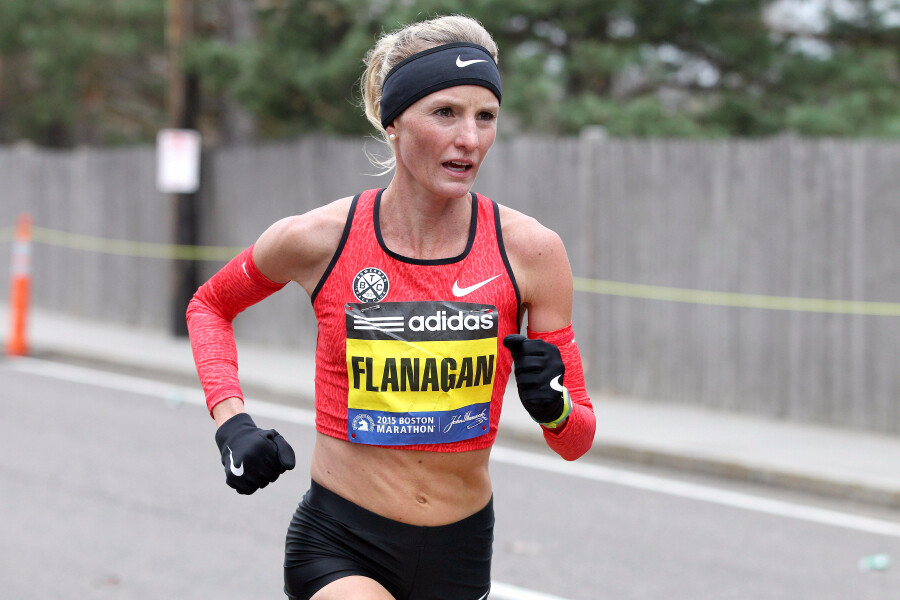
She set a sub-three-hour goal for each of the races and has shattered the mark in each race so far, including a 2:35:04 time in London.
Her current quest has pushed her physically and mentally but she's loved every minute of it. Joined by her 18-month-old son Jack as well as a tight-knit, all-female group that includes her physical therapist, a photographer and a Nike brand manager, Flanagan has awed fans around the world with her globe-trotting journey.
But it's just Shalane being Shalane, according to those who know her best.
"Shalane is always the type to just go after something," said 2020 Olympic steeplechase silver medalist Courtney Frerichs, who trains with Flanagan at Bowerman Track Club in Portland, Oregon. "I remember a few weeks after she won in New York [in 2017], she was back in training with us, fully right back in it, and I could barely keep up with her. That's just who she is.
"I wasn't surprised when she said she was doing this but I have been surprised at just how much fun she's having with it."
For many athletes, the idea of running 157.2 miles of competitive races would hardly be the retirement dream, but most athletes aren't Flanagan, who made a career of the unexpected. She was the first American woman to win in New York in 40 years when she crossed the finish line first in 2017 and is one of just two Americans to medal in the 10,000 meters at the Olympics. Flanagan earned the bronze medal in Beijing in 2008 (and it later was upgraded to silver following a failed doping test by Elvan Abeylegesse). She's always blazed her own trail.
And she didn't venture far away from the sport after officially retiring. She almost immediately began coaching at Bowerman, where she had been based for over a decade. She now worked with many of the younger runners she had been training alongside, including Frerichs.
"She was the driving force in creating a women's team here. She's always been such a leader and has truly always wanted to help others succeed," Frerichs said. "When I look back at this last year, she has played such an instrumental role."
"I basically prepped in six weeks, which is really short in the marathon world," Flanagan said. "But given the context of my lifetime of training, it was appropriate. I wouldn't recommend that though for most people."
After Sunday, she said she has no plans to run for at least a month. But the break likely won't last much longer than that.
"I think at the end I'll be thinking of how much fun we've had. I guess now I've got to dream up another hard challenge."
by D'Arcy Maine
Login to leave a comment
TCS New York City Marathon
The first New York City Marathon, organized in 1970 by Fred Lebow and Vince Chiappetta, was held entirely in Central Park. Of 127 entrants, only 55 men finished; the sole female entrant dropped out due to illness. Winners were given inexpensive wristwatches and recycled baseball and bowling trophies. The entry fee was $1 and the total event budget...
more...Time for Shelby Houlihan to come clean
Two things ought to happen now that the Court of Arbitration for Sport has issued a technically detailed but, in the end, common-sense ruling in the matter of Shelby Houlihan, the American distance runner, banning her for four years for nandrolone — through January 2025 — while thoroughly rejecting the ridiculous burrito defense.
One, Houlihan ought to come clean.

What most likely happened?
We don’t and won’t know until Houlihan admits whatever it was. But, see paragraph 128 of this very thorough 44-page ruling, citing the head of the Montreal anti-doping lab, Christiane Ayotte, who notes that oral precursors of nandrolone can readily be bought on the internet, even on Amazon, and that a chemical signature very much like the one Houlihan tested for was obtained five years ago when that very lab tested a product it had bought called “Nor-Andro Max.â€
Two, all the journalistic sheep who wanted to believe, who maybe still want to believe despite the overwhelming evidence against Houlihan, that there was no way, just no way, a white American distance runner affiliated with the Bowerman Track Club could test positive — all these people, and the readers they misled, ought to take a crash course in Doping 101 and the things people will say and do, meaning anything and everything, to avoid getting busted.
This entire saga, truthfully, has been pathetic.
This burrito defense has, from the get-go, stretched the bounds of credulity, and anyone who bought it — even for a second — needs to undergo a real-world moron test.
Do you also believe pigs can fly? (‘Pigs’ used advisedly here.) Do you think Abraham Lincoln is a vampire slayer? Are you super-confident you can beat up a grizzly bear?
Almost every single facet of Houlihan’s defense was — is — absurd.
To be clear: not blaming Houlihan’s lawyers for aggressively scheming up any and every avenue possible. That’s what they’re there for.
But the three-judge panel went to great length — again, 44 pages — to refute, carefully, virtually everything about it.
For instance:
Houlihan took a lie detector test.
She was asked, did you at any time knowingly ingest nandrolone? And answered no. She was also asked, did you intentionally ingest the drug nandrolone? And said, no.
But as the panel pointed out, here’s what she wasn’t asked: did you take doping substances at the material time?
Houlihan also submitted to hair analysis. All involved agreed that it proved that nandrolone injections could be excluded. But, the panel found, that analysis failed to take into account oral (so we’re all on the same page here, something you eat or drink) precursors of nandrolone, such as “19-nor-DHEA†and “nor-Andro.â€
Which is why it boggles the mind, truly, that an outlet such as Women’s Running would, in the second paragraph of its account of this ruling, prattle on this way:
“CAS decided that although Houlihan was a credible witness and brought ‘compelling character witness evidence in support of her defense,’ she failed to establish the source of the nandrolone that was detected in her urine.â€
This is the second paragraph?!
Who cares if Shelby Houlihan is or is not a nice person and can or cannot get through a lie detector when asked certain questions? That’s all but irrelevant when it comes to the science in this case. As for her “compelling character witness evidence?†Ha! That’s a complete misread of what is what. Offering statements or testifying on her behalf were, among others, her former boyfriend, Matthew Centrowitz, gold medalist in the men’s 1500 at the Rio 2016 Olympics, Courtney Frerichs, the surprise silver medalist in the women’s steeplechase a few weeks ago in Tokyo, and Karissa Schweizer, who competed in Tokyo in both the women’s 5k (11th) and 10k (12th), and if you don’t think the Athletics Integrity Unit took careful observation of who was in Houlihan’s inner circle, maybe you seriously do believe pigs can fly.
The first paragraph of the Women’s Running story, what in journalism circles is called the lede, also noted — accurately — the CAS observation that Houlihan’s explanation was “possible but unlikely.â€
As if that were justification.
Everything in life is possible.
But here’s what CAS also said, and be mindful that the burden of proof in this matter was on Houlihan, and so if this were a math contest, she had to get to 50.1, but instead her defense “presupposes a cascade of factual and scientific improbabilities, which means that its composite probability is (very) close to zero.â€
Herewith the cascade:
— Houlihan ordered a carne asada — that is, a steak — burrito at a food truck in Beaverton, Oregon, near Portland. For her defense to work, she would have had to have been served and eaten pork.
The entire defense rests on this premise. A wrong order. Which she then ate. But that’s not all.
— Because the pork would have not been ‘normal’ pork but, per the Houlihan defense, uncastrated boar.
— Except uncastrated boar gets into the U.S. food chain through completely different channels than pork. So for uncastrated boar to end up in the normal pork food chain, the boar must have been a specimen with undescended testicles. This is called ‘cryptorchid.’
At this point, this is already verging on bizarre if not crazy stupid. Undescended testicled boar. OK.
— Except there’s more. The cryptorchid is (or was) of a “small minority of uncastrated boars that — in addition — must have had elevated androgen levels.†That would be “abnormal†for 6-month-old pigs.
— More still. The pork product Houlihan allegedly ate, despite ordering steak, is pork stomach. Follow along here because this gets into butcher-level stuff. When people eat pork stomach, that stomach is stripped of the inner layer; only the outer muscle remains. Houlihan’s assertion was that uncastrated boars have elevated androgen levels. Except those are not found in the muscle. Those levels are found only in specific parts — the kidneys, testes or liver. Pork stomach, the panel said, has one of the lowest androgen levels.
— More science. The nandrolone metabolite levels in Houlihan’s urine were two to three times higher than the highest values in the literature after eating much more significant quantities of mature (uncastrated) boar — a product different from the alleged cryptorchid in question, which would have been slaughtered at six months.
— Agriculturally speaking, the carbon isotope signature of the metabolite in her urine was “fundamentally inconsistent†with the largely corn-based diet of commercial pigs in the United States.
— Finally, an expert witness said the chance of a cryptorchid ending up in the normal supply chain in the United States is “far less†than one in 10,000.
Beyond which, see paragraph 104 on page 30, and come on now, there’s this:
“The fact that IBP/Tyson (the plant where the food truck in Beaverton bought the pork meat from) does not operate a boar kill plant. Thus, it is ‘near zero chance’ that any boar meat would get mixed with conventional fresh pork products.â€
All this leaves the obvious question, doesn’t it:
if the slaughterhouse doesn’t operate a boar kill plant, and thus there’s essentially no chance of boar meat getting in the food chain with pork other than, hmm, aliens dropping in from Galaxy Starchaser Nebula X9 to surreptitiously teleport it in there and so the food truck had a “near zero†chance of having boar meat on the night in question and, besides, Houlihan ordered a steak burrito, anyway — what really happened here?
Time for Shelby Houlihan to come clean.
She likely will dodge this opportunity until after the Swiss Federal Tribunal issues the final no-go — understand that the SFT takes up procedural matters, not substantive, so her chance of success there is, again, “near zero†— but she would do the right thing, now, by coming clean.
Time, too, for her supporters, defenders and enablers to see the light. It’s tough when your purported heroes get tagged for doping. But before all of you go out and buy Floyd Landis’ book about how he didn’t cheat to win the Tour de France — oops.
Some of us have been down this road before. This burrito defense — this was creative, indeed. But that didn’t make it any smarter, or better.
Pigs don’t fly. That’s the truth.
Login to leave a comment
Cheruiyot Defeats Ingebrigtsen In Diamond League 1500m Final
At tonight's talent-packed Wanda Diamond League Final at the Letzigrund in Zürich, Kenya's Timothy Cheruiyot evened the score with Norway's Jakob Ingebrigtsen by defeating the reigning Olympic 1500m champion by just 8/100ths of a second, reversing their finish places from Tokyo. With his victory tonight, Cheruiyot retained the Diamond League title he had earned in Brussels in 2019 and sent a signal that he'll be tough to beat at next summer's World Athletics Championships in Eugene where he will come in as reigning champion.
"That was good but a very tight race," Cheruiyot said. "I knew the standard was strong here, and I am happy."
In last month's Olympic final, Ingebrigtsen cleverly shadowed Cheruiyot throughout the race before overwhelming the Kenyan in the final sprint. Tonight, Cheruiyot took the lead from Australia's Stewart McSweyn at the bell, and held his lead through the final bend where Ingebrigtsen was still close behind. In the last 100 meters, Cheruiyot kept his signature forward-leaning form as he accelerated to the finish line in 3:31.37. Ingebrigtsen tied up in the final meters and had to settle for second in 3:31.45. McSweyn held on for third in 3:32.14 just ahead of his compatriot Oliver Hoare who ran a personal best 3:32.66.
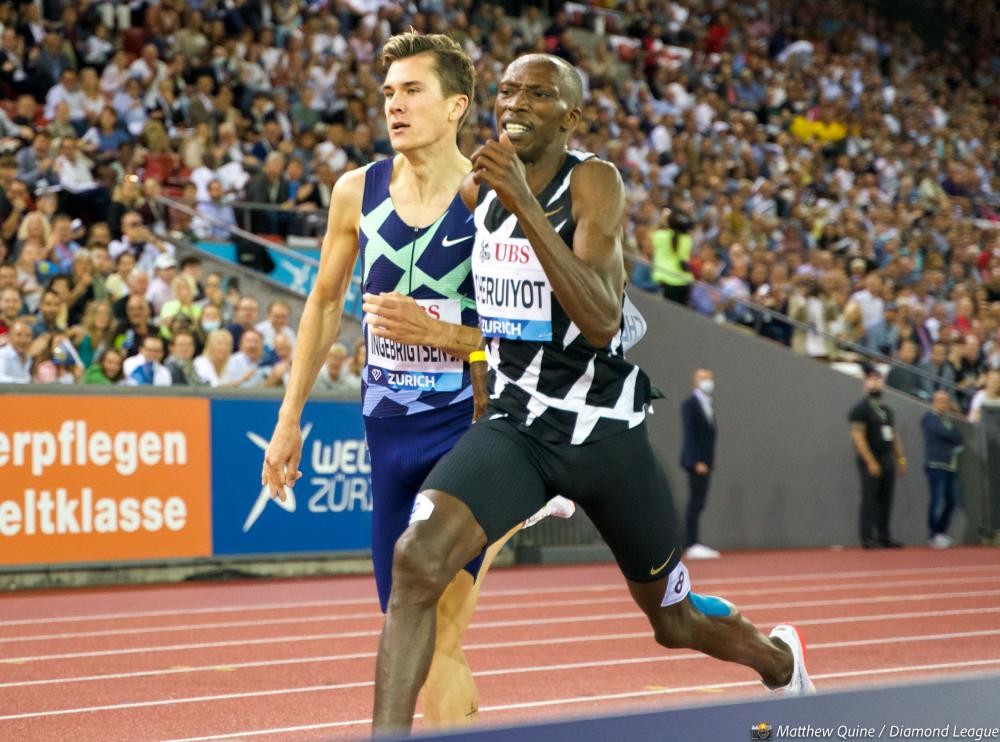
"It is what it is," lamented Ingebrigtsen. "I am really happy with what I did in Tokyo. It is tough to go into races afterwards. So I am just happy to be done with this season and looking forward to the World Championships next year."
Cheruiyot, who nearly missed out on Olympic team selection after he only finished fourth at the Kenyan Olympic Trials, is also looking forward to 2022.
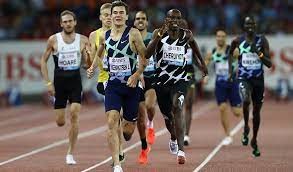
"I was having many challenges in Tokyo, so now I am getting better," he said referring to a pesky hamstring injury. "My hamstring is getting better and I am prepared for next season. My goal is that I know I need to defend my world title at next year's championships. That is my target now, but I need to work out (hard) because I know Jakob Ingebrigtsen is going to continue to get better."
In another epic rematch from Tokyo, Kenyan Faith Kipyegon out-sprinted Dutchwoman Sifan Hassan to win the women's 1500m in 3:58.33. Like in the men's race, Kipyegon was able to hold her form and run smoothly through the tape, while an exhausted-looking Hassan thrashed her way to second in 3:58.55. Hassan had defeated Kipyegon in the 2019 World Athletics Championships, but Kipyegon beat Hassan to third place in last month's Olympics. Their rivalry is sure to continue into next year.
"I was confident that in the last lap I could do better and it worked," Kipyegon said. "This is my second Diamond League trophy and my first as a mother. My family is watching tonight from home. I started my season well and I finished it well, I won almost all my competitions, especially the Olympic final. I am so grateful."
Kenyan men also won the 800m and 3000m steeplechase. In the two-lap event, reigning Olympic gold and silver medalists, Emmanuel Korir and Ferguson Rotich, finished in the same order again tonight. Rotich tried to win with a long drive from 250 meters out, but Korir --who was sprinting furiously-- passed him in the homestretch to win 1:44.56 to 1:44.96. American Clayton Murphy got third (1:45.21).
"I think it was tough today," said Korir. "But I managed to follow my strategy, tried to push it in the end and now I have this Trophy and I am very glad."
Benjamin Kigen upset Olympic champion Soufiane El Bakkali of Morocco in the steeplechase by running away from the field on the backstretch of the final lap, hurdling the final water jump, then holding on in the homestretch before El Bakkali could catch him. Kigen clocked 8:17.45 to El Bakkali's 8:17.70.
"It was my wish to win today," said Kigen. "I am very happy now. Today was not a matter of time, but it was a matter of winning."
A Kenyan also won the women's steeplechase. Norah Jeruto, who did not compete in Tokyo despite being the fastest steeplechaser of the year (8:53.65), won a two-way battle over compatriot Hyvin Kiyeng on the final lap. The two women were even going into the last water jump, but Kiyeng landed flat-footed, lost her momentum, and Jeruto scampered away. Jeruto was clocked in 9:07.33 to Kiyeng's 9:08.55. Olympic silver medalist Courtney Frerichs finished third in 9:08.74; her strong sprint got her past Ethiopia's Mekides Abebe and Kenya's Celliphine Chespol.
British teen Keely Hodgkinson, the Olympic 800m silver medalist, added "Diamond League Champion" to her résumé tonight when she pulled away from Jamaica's Natoya Goule in the homestretch to win in 1:57.98. Gould looked safe for second, but a charging Kate Grace just edged her at the line (both women were timed in 1:58.34). Jemma Reekie, Hodgkinson's Olympic teammate, finished fourth in 1:58.61, the same position as the Tokyo Olympics.
All the event winners tonight earned provisional starting starting spots at next summer's World Athletics Championships (conditions apply) and earned USD 30,000.
by David Monti
Login to leave a comment
CAS report on Shelby Houlihan explains reasons for four-year ban
In June, American 1,500m record-holder Shelby Houlihan was given a four-year ban by the Athletics Integrity Unit (AIU) after testing positive for the steroid nandrolone in December 2020. The Bowerman Track Club athlete appealed the ban and attempted to prove her innocence, since the athlete was hoping to race at the U.S. Olympic trials, but the Court of Arbitration for Sport (CAS) upheld her suspension. The AIU has now released the 44-page decision into her case, upholding the ban. Houlihan will not be able to compete until January, 2025.
To recap, the substance found in Houlihan’s sample was nandrolone, specifically 19-norandrosterone (19-NA), a steroid sometimes found in pork offal (pig organ meat). She claimed the positive result was due to having ingested pork offal in burrito from a food truck the night before she was tested, but the CAS did not accept her explanation and upheld the AIU’s charge. Houlihan also submitted a hair test and a lie detector test, both supporting her innocence, but these were found to be inadequate.
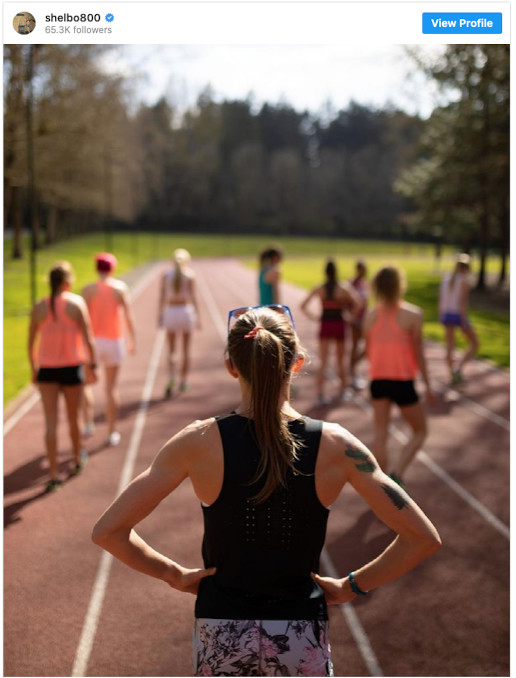
The decision included the following statement regarding the evidence against Houlihan:
“The Athlete’s explanation that the 19-NA in her sample resulted from her consumption of the meat of an uncastrated boar simply cannot be accepted. The explanation presupposes a cascade of factual and scientific improbabilities, which means that its composite probability is (very) close to zero.”
Specifically, the CAS panel found that though it was possible that Houlihan unwittingly ingested the meat of an uncastrated boar, for various reasons it was highly unlikely, and moreover, that even if she had, it would not account for the relatively high levels of nandrolone found in her samples. It found that the nandrolone found in her samples was consistent with that found in products commonly sold on the Internet for the purpose of enhancing athletic performance.
Several of Houlihan’s teammates defended her as a clean athlete, including Courtney Frerichs, who was with her when she ate the burrito (and who ate from the same food truck). Frerich’s sister, Lindsey Frerichs, who also ate with them that night, provided a witness statement, as did Bowerman coach Shalane Flanagan and athletes Matt Centrowitz (whom Houlihan was dating at the time) and Karissa Schweizer.
Despite their testimonies, the court found Houlihan to be guilty, saying she failed to provide a plausible explanation for the presence of nandrolone in her urine sample, and concluded that the anti-doping rule violation she was charged with must have been intentional.
The ban forced Houlihan to miss the U.S. Olympic trials and the Tokyo Olympics, where she was assumed to be a medal favourite, and it will prevent her from competing at the upcoming World Championships and the Paris 2024 Summer Games.
Editor’s update Sept. 3, 2021: According to a story on LetsRun.com, Houlihan plans to appeal her case to the Swiss Federal Tribunal.
Login to leave a comment
Eugene will play host rematches betwen olympic medalists at the Prefontaine Classic
Dozens of medal winners from the recent Tokyo Olympic Games will be back in action at the Wanda Diamond League meeting in Eugene when Hayward Field hosts the Prefontaine Classic on August 21.
Based on the announcements made so far by the meeting organizers, five events will feature a full set of Olympic medalists from Tokyo.
Double Olympic champion Sifan Hassan headlines the women’s 5000m field and she’ll take on two-time world champion Hellen Obiri and world indoor 1500m record-holder Gudaf Tsegay, the silver and bronze medalists in Tokyo over 5000m.
All three medalists from the men’s 5000m will also be in action as Uganda’s Joshua Cheptegei, Canada’s Moh Ahmed and USA’s Paul Chelimo clash over two miles.
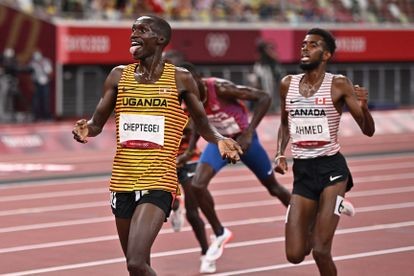
Teenage stars Athing Mu and Keely Hodgkinson, the top two finishers in the 800m in Tokyo, will be back in action over two laps, along with world and Olympic bronze medallist Raevyn Rogers, world champion Halimah Nakaayi, Britain’s Jemma Reekie, Jamaica’s Natoya Goule and USA’s Ajee Wilson and Kate Grace.
World record-holder and two-time Olympic champion Ryan Crouser will look to maintain his winning streak in the shot put when he takes on world champion Joe Kovacs and 2017 world champion Tom Walsh. Brazil’s Darlan Romani and US duo Darrell Hill and Payton Otterdahl are also in the line-up.
Jamaican sprint stars Elaine Thompson-Herah, Shelly-Ann Fraser-Pryce and Shericka Jackson – who filled the 100m podium in Tokyo – will face USA’s Sha’Carri Richardson and Marie-Josee Ta Lou of the Ivory Coast.
The men’s 100m, meanwhile, features Olympic silver and bronze medalists Andre De Grasse and Fred kerley, along with world indoor bronze medallist Ronnie Baker, 400m specialist Michael Norman and African record-holder Akani Simbine.
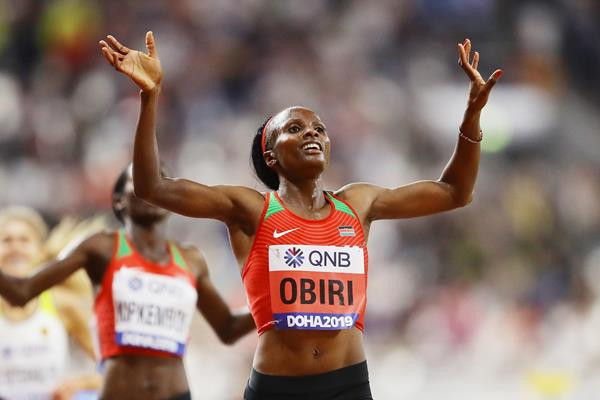
Two-time Olympic champion Faith Kipyegon will once again line up against Olympic silver medallist Laura Muir and Canadian record-holder Gabriela DeBues-Stafford, while world champion Timothy Cheruiyot will clash with Olympic champion Jakob Ingebrigtsen in the men’s Bowerman mile.
In the women’s steeplechase, world champion Beatrice Chepkoech takes on world leader Norah Jeruto Tanui, Olympic silver medalist Courtney Frerichs and 2017 world champion Emma Coburn.
Other global stars confirmed so far include world 400m hurdles champion Dalilah Muhammad, Olympic triple jump champion Pedro Pablo Pichardo and world indoor triple jump record-holder Hugues Fabrice Zango.
by World Athletics
Login to leave a comment
Prefontaine Classic
The Pre Classic, part of the Diamond League series of international meets featuring Olympic-level athletes, is scheduled to be held at the new Hayward Field in Eugene. The Prefontaine Classicis the longest-running outdoor invitational track & field meet in America and is part of the elite Wanda Diamond League of meets held worldwide annually. The Pre Classic’s results score has...
more...Peruth Chemutai became the first Ugandan woman to win an Olympic gold medal in any sport when she triumphed in the women's 3,000m steeplechase on Wednesday
The 22-year-old clocked a time of 9:01.45 to finish over three seconds ahead of American silver medalist Courtney Frerichs with Kenya's Hyvin Kiyeng taking the bronze.
"I'm so happy and proud of myself. It was a good race - I enjoyed myself and I enjoyed the weather," Chemutai said, referring to the heat in Tokyo.
Chemutai's triumph was only the third Olympic gold won by Uganda in any sport -- after John Akii-Bua's 400m hurdles win in 1972 and Stephen Kiprotich's victory in the 2012 marathon.
She moved in front early in the race before Frerichs took the initiative with three laps to go, pulling away from the field.
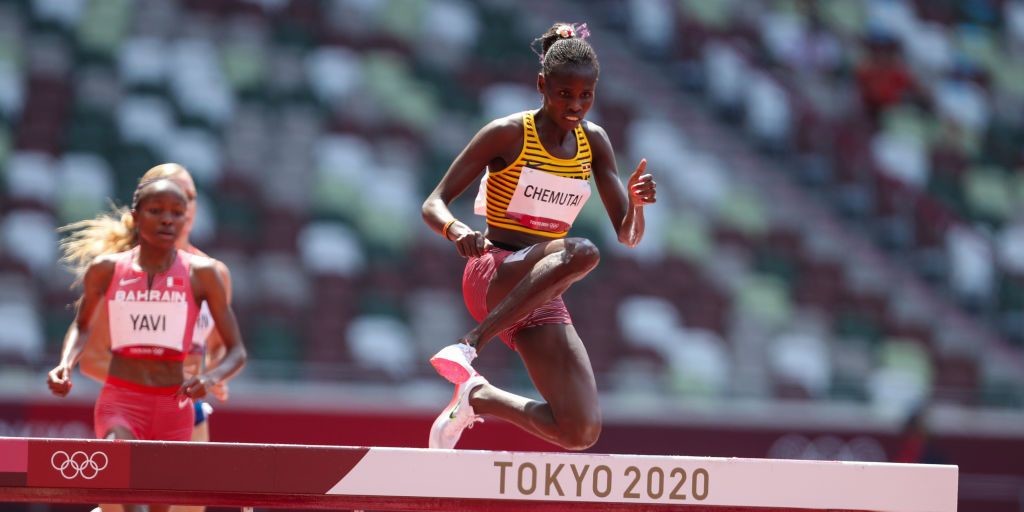
But Chemutai responded to the challenge and overtook the American on the last lap before crossing the line 3.34 seconds ahead of her.
Frerichs became the second American woman to win an Olympic steeplechase medal after Emma Coburn, who claimed bronze in Rio in 2016.
Coburn fell with two laps left and finished 14th before being disqualified but her team mate Frerichs was delighted with her silver after nearly missing the Games due to illness.
"I was prepared to have to take it early and make it a hard race. It's really difficult to put yourself out there like that and I definitely had some fear to overcome but I knew I'd walk away with no regrets if I really laid it all out there," she said.
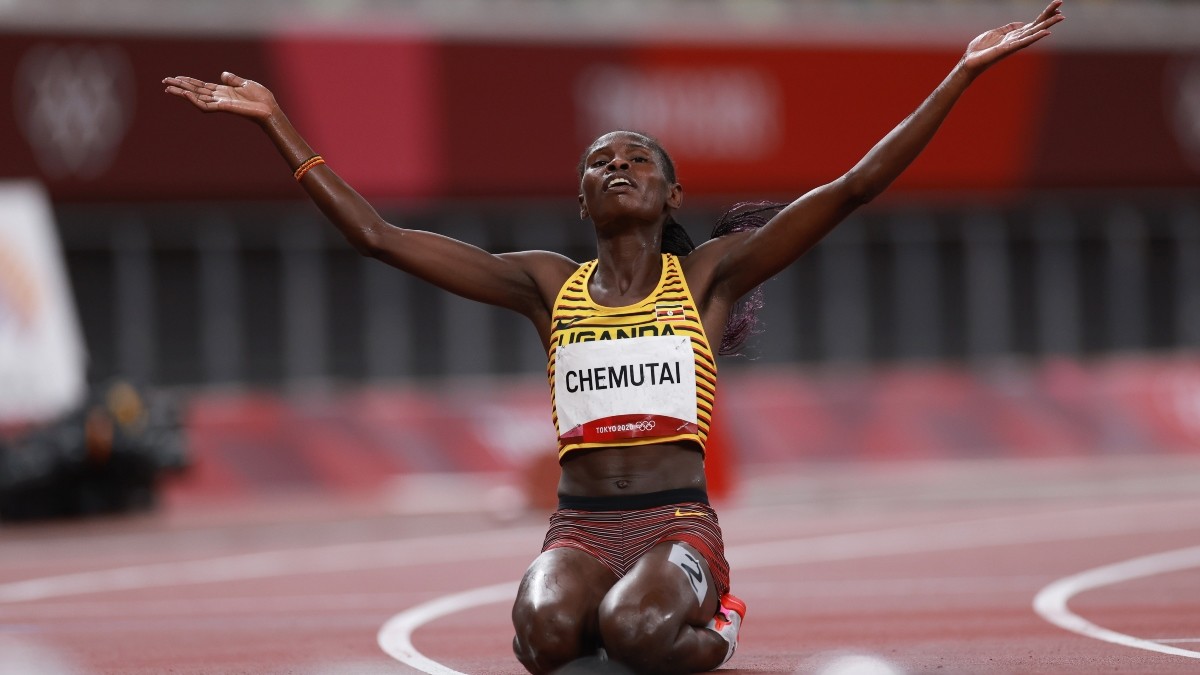
Kenyan world record holder Beatrice Chepkoech finished seventh, leaving her country still without a gold medal in the women's event.
Kenyans have dominated the Olympic men's 3,000m steeplechase, winning nine gold medals in a row before losing their crown to Moroccan Soufiane El Bakkali in Tokyo.
Chepkoech said she was far from at her best physically.
"I have an injury and it was so tight. I didn't even react, it's painful," she said.
"My aim was to win the race, but because of the injury, my mind was not here. It was so painful.
"I have problems with two tendons and a hamstring, low back and the stomach. I got injured before our trials in Kenya and it has been so tight since, I tried to nurse it, but it couldn't respond," she added.
Bronze medalist Kiyeng had won silver in Rio.
by Ed Osmong
Login to leave a comment
Tokyo 2020 Olympic Games
Fifty-six years after having organized the Olympic Games, the Japanese capital will be hosting a Summer edition for the second time, originally scheduled from July 24 to August 9, 2020, the games were postponed due to coronavirus outbreak, the postponed Tokyo Olympics will be held from July 23 to August 8 in 2021, according to the International Olympic Committee decision. ...
more...130 athletes named on the team to represent the United States at the Tokyo Olympic Games
World outdoor record-holders Sydney McLaughlin, Ryan Crouser and Keni Harrison are among the 130 athletes named on the team to represent the United States at the Tokyo Olympic Games.
The squad includes 13 medalists from the 2016 Games in Rio and six defending world champions from Doha. Experienced headliners include five-time Olympians Allyson Felix in the 400m and Abdi Abdirahman in the marathon, while the youngest athlete on the team is 17-year-old Erriyon Knighton, who twice broke the world U20 200m record last month at the US Olympic Trials.

JuVaughn Harrison won both the long jump and high jump at the Trials in Eugene and he will be among the athletes contesting two events in Tokyo as he has been selected for both disciplines.
Other athletes announced on the team include world indoor 60m hurdles record-holder Grant Holloway, who was just 0.01 shy of breaking Aries Merritt’s world 110m hurdles record of 12.80 in Eugene, plus former world 400m hurdles record-holder Dalilah Muhammad, the second-fastest ever 200m sprinter Gabby Thomas and multiple global long jump gold medalist Brittney Reese.
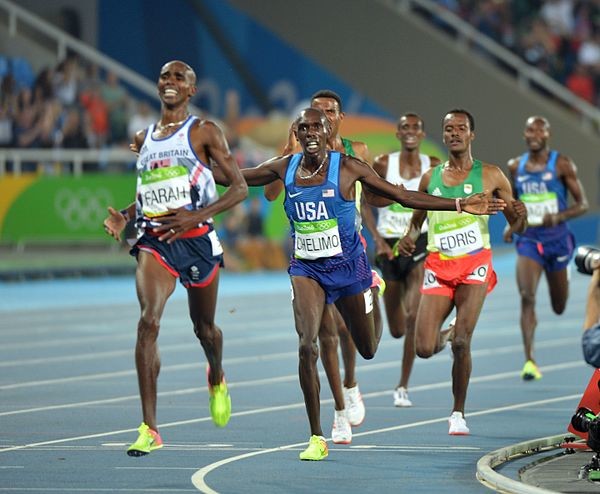
USA team for Tokyo
WOMEN
100m: Teahna Daniels, Javianne Oliver, Jenna Prandini
200m: Anavia Battle, Jenna Prandini, Gabby Thomas
400m: Allyson Felix, Quanera Hayes, Wadeline Jonathas
800m: Athing Mu, Raevyn Rogers, Ajee' Wilson
1500m: Heather MacLean, Cory McGee, Elle Purrier
5000m: Elise Cranny, Rachel Schneider, Karissa Schweizer
10,000m: Alicia Monson, Karissa Schweizer, Emily Sisson
Marathon: Sally Kipyego, Molly Seidel, Aliphine Tuliamuk
3000m steeplechase: Emma Coburn, Val Constien, Courtney Frerichs
100m hurdles: Christina Clemons, Gabbi Cunningham, Keni Harrison
400m hurdles: Anna Cockrell, Sydney McLaughlin, Dalilah Muhammad
20km race walk: Robyn Stevens
High jump: Tynita Butts-Townsend, Vashti Cunningham, Rachel McCoy
Pole vault: Morgann LeLeux, Katie Nageotte, Sandi Morris
Long jump: Quanesha Burks, Tara Davis, Brittney Reese
Triple jump: Tori Franklin, Jasmine Moore, Keturah Orji
Shot put: Adelaide Aquilla, Jessica Ramsey, Raven Saunders
Discus: Valarie Allman, Kelsey Card, Rachel Dincoff
Hammer: Brooke Andersen, Gwen Berry, DeAnna Price
Javelin: Ariana Ince, Maggie Malone, Kara Winger
Heptathlon: Erica Bougard, Annie Kunz, Kendell Williams
4x100m: English Gardner, Aleia Hobbs, Gabby Thomas (plus others selected in individual events)
4x400m: Kendall Ellis, Lynna Irby, Kaylin Whitney (plus others selected in individual events)
MEN
100m: Ronnie Baker, Trayvon Bromell, Fred Kerley
200m: Kenny Bednarek, Erriyon Knighton, Noah Lyles
400m: Michael Cherry, Michael Norman, Randolph Ross
800m: Bryce Hoppel, Isaiah Jewett, Clayton Murphy
1500m: Matthew Centrowitz, Cole Hocker, Yared Nuguse
5000m: Paul Chelimo, Grant Fisher, Woody Kincaid
10,000m: Grant Fisher, Woody Kincaid, Joe Klecker
Marathon: Abdi Abdirahman, Jake Riley, Galen Rupp
3000m steeplechase: Hillary Bor, Mason Ferlic, Benard Keter
110m hurdles: Devon Allen, Grant Holloway, Daniel Roberts
400m hurdles: Rai Benjamin, David Kendziera, Kenny Selmon
20km race walk: Nick Christie
High jump: JuVaughn Harrison, Shelby McEwen, Darryl Sullivan
Pole vault: Sam Kendricks, KC Lightfoot, Chris Nilsen
Long jump: Marquis Dendy, JuVaughn Harrison, Steffin McCarter
Triple jump: Chris Benard, Will Claye, Donald Scott
Shot put: Ryan Crouser, Joe Kovacs, Payton Otterdahl
Discus: Mason Finley, Reggie Jagers, Sam Mattis
Hammer: Daniel Haugh, Rudy Winkler, Alex Young
Javelin: Michael Shuey, Curtis Thompson
Decathlon: Steven Bastien, Garrett Scantling, Zach Ziemek
4x100m: Kenny Bednarek, Cravon Gillespie, Micah Williams (plus others selected in individual events)
4x400m: Elija Godwin, Vernon Norwood, Trevor Stewart (plus others selected in individual events)
MIXED
4x400m: Shae Anderson, Bryce Deadmon, Wil London, Taylor Manson (plus others selected in individual events).
by World Athletics
Login to leave a comment
Tokyo 2020 Olympic Games
Fifty-six years after having organized the Olympic Games, the Japanese capital will be hosting a Summer edition for the second time, originally scheduled from July 24 to August 9, 2020, the games were postponed due to coronavirus outbreak, the postponed Tokyo Olympics will be held from July 23 to August 8 in 2021, according to the International Olympic Committee decision. ...
more...Emma Coburn continues to dominate the 3,000-Meter Steeplechase
As predicted, it was a race for third place in the 3,000-meter steeplechase final on Thursday, at the U.S. Olympic Track & Field Trials, in Eugene, Oregon. And for Val Constien, third probably felt a lot like first.
Emma Coburn and Courtney Frerichs were the known entities. They’ve never missed making a national team in the event and their results on Thursday were no different. Coburn won in an Olympic Trials record of 9:09.41 and Frerichs was runner-up in 9:11.79. Then came Constien, a University of Colorado grad and 2019 Pac-12 champion, in 9:18.34—a personal best by six seconds.
“I think the U.S. steeple right now is the deepest it’s been in years,” Coburn said, after the race. “There’s so many women who have run under 9:30 this year. Knowing that strength and that depth, I wanted to just play off some of some of my strengths. If we were running 9:30 splits early in the race, I knew that was well within my comfort zone and I could push really hard the last year.
Since 2016, the U.S. team for world championships and the Olympics has remained constant: Coburn, Frerichs, and Colleen Quigley. And until Quigley announced her withdrawal from the race due to injury just days ago, many assumed the trio would make Team USA once again.
Quigley’s absence opened up an array of possibilities for a field that included eight athletes who had the Olympic qualifying time already (9:30). Until 800 meters to go, it looked like Leah Falland might have had a lock on the podium, but she caught a toe on a barrier and fell to the track. Although she got back up quickly and regained position, the combination of adrenaline and trying to regain position was too much. She had nothing left in the last 200 meters and placed ninth.
“I was just really cooked after all of it,” Falland said, in an emotional post-race interview. When asked how confident she was that she could have made the team, she said, “I knew I could do it. I knew it was in there. It was kind of shocking, to be honest. I worked really, really hard to get back to a place where I could contend for that team.”
When Constien saw Falland stumble, she recognized she had an opportunity.
“I kind of knew that was my shot…and then with 400 meters to go, I just ran as hard as I possibly could,” Constien said. “I had no idea where [Falland] was…I just gave it my all.”
Frerichs, 28, was analytical about her race, already identifying what she wants to work on between now and competing at the Tokyo Games. A member of the Bowerman Track Club, she’s the American record holder (9:00.85) and 2017 world championships silver medalist in the event, as well as 2016 Olympian. She said her second-to-last water barrier needs work, as well as her closing speed.
“I think we’re bringing an incredibly strong team [to Tokyo],” Frerichs said. “I mean, it took 9:18 to make the team today. That’s the fastest third-place finish that’s ever happened. That’s incredible. And then I think that Emma and I have consistently been battling up at the front and that force together makes a statement. We’re ready to have a special moment in Tokyo.”
Coburn, 30, is the 2017 world champion and the 2016 Olympic bronze medalist, the first American woman to medal in the steeple. She and Joe Bosshard, her husband and coach, have created a Boulder, Colorado-based training group that includes Cory McGee, who just qualified for the Tokyo Games in the 1500.
Constien is a first-time Olympian who works a full-time customer support job for Stryd, a company that makes power meters that runners put on their shoes to figure out the optimal training intensity. She receives free apparel from TrackSmith but otherwise self-funds her running career, including paying her way to Eugene to compete at the Trials.
“I think that being a blue-collar runner is really cool. Anybody with a full-time job can still have Olympic aspirations,” she said.
Training in Boulder, Constien often runs with Jenny Simpson. She ran the Olympic qualifying time at the Portland Track Festival at the end of May. It was then that she realized it wasn’t enough to just make it to the final—she wanted to make it to Tokyo.
“It just seems like three weeks ago I woke up and said, ‘I could do this,’” Constien said. “So it was really fun. Goals change and dreams get bigger, so I’m really happy that this has happened.”
by Women’s Running
Login to leave a comment
Tokyo 2020 Olympic Games
Fifty-six years after having organized the Olympic Games, the Japanese capital will be hosting a Summer edition for the second time, originally scheduled from July 24 to August 9, 2020, the games were postponed due to coronavirus outbreak, the postponed Tokyo Olympics will be held from July 23 to August 8 in 2021, according to the International Olympic Committee decision. ...
more...3 Key Reasons Why Records Keep Getting Broken in 2021
It’s not just the shoes. But they certainly help.
The times have been spectacular across the globe.
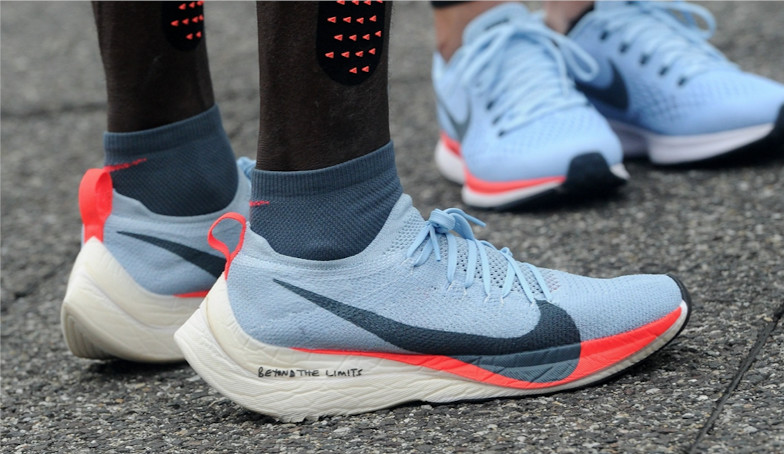
In Europe, four men broke the previous world half marathon record in December in Valencia, Spain. Earlier this month, Gudaf Tsegay of Ethiopia set a world record for the indoor 1500 meters on February 9, running 3:53.09 at a meet in Liévin, France.
Closer to home, Americans Sara Hall, Keira D’Amato, Martin Hehir, and Noah Droddy reshuffled the list of top 10 Americans in the marathon.
On the track, Donavan Brazier, Bryce Hoppel, Elle Purrier, and Grant Holloway have set American or world records.
High school and college athletes are in on the action, too. Hobbs Kessler set the high school indoor mile record with his 3:57.66, and Cooper Teare of the University of Oregon took almost 2 seconds off the collegiate mile record when he ran 3:50.39. Athing Mu at Texas A&M, who was thought to be an 800-meter runner, has been turning in world-class 400-meter splits and anchored her teammates to a collegiate record in the 4x400 meters.
What’s going on with all these fast times? Yes, there is new shoe technology, but it goes well beyond that for these record-shattering runners.
Shoe technology that changed road racing is now changing track racing
Back in 2017, when Eliud Kipchoge attempted for the first time to break two hours in the marathon on a racetrack in Monza, Italy, he wore a new type of shoe from Nike, the Zoom Vaporfly Elite. The shoes promised a 4 percent efficiency benefit, through a combination of a new type of foam, which was lighter and more responsive than previous foams, and a stiff carbon fiber plate to stabilize the foam and move the foot as it pushes off the ground.
Nike’s innovative design has evolved since 2017 and has been emulated, with varying degrees of success, by other shoe brands, like Saucony and Adidas. Now the same technology—better foam with a stiff plate inside—has moved into track spikes, said Geoff Burns, a post-doctoral fellow at the University of Michigan who is researching biomechanics and sport performance.
“The absolute effect may be a little bit smaller,” he said. “But because of the controlled environment and frequency of racing on a track, it’s much more apparent.”
Burns said that although Nike’s competitors are closing the gap, he hesitates to say that they’ve caught up. He praises Adidas and Saucony road shoes, and Adidas and New Balance for track spikes. “But if I were getting on a starting line, for a marathon or a track race, I would be in the Nike shoes,” he said.
Races are set up in near-perfect conditions
With the pandemic, the traditional lineup of road races and track meets has gone out the window, as race organizers have grappled with how to stage events safely.
In their place, pro runners, needing to race, have turned to time trials. And many of these are set up according to exact specifications.
Take The Ten, a track meet on February 20 in San Juan Capistrano, California. In two 10,000-meter track races, athletes—almost exclusively from the Bowerman Track Club in Portland, Oregon—were paced to try to get the Olympic standard in the event, which is 27:28 for men and 31:25 for women.
In the women’s race, Vanessa Fraser and Courtney Frerichs (the American record holder in the steeplechase), set a perfect pace, running 74- or 75-second laps. Fraser led for the first two miles, Frerichs took over and set the pace through four miles, 16 of the 25 laps. Her teammates could turn off their brains and follow behind. In the end, Elise Cranny won in 30:47 and five women hit the standard, four from Bowerman plus Eilish McColgan of Great Britain. The results of the men’s race were similar: Evan Jager and Sean McGorty paced, Marc Scott won in 27:10, and five runners achieved the Olympic standard.
“We are fortunate to have [teammates] who can pace a race for three or four miles,” said Marielle Hall, a Bowerman runner who finished fifth in 31:21. “That doesn’t happen that often. We’re pretty lucky.”
The Marathon Project, on December 20 in Chandler, Arizona, was similar in some ways. Organizers picked a perfectly flat U-shaped loop. Runners went up one side of a 2.1-mile stretch of road and back down the other. Pacers for the top men and women kept a steady pace through 18 miles. In the end, Martin Hehir ran 2:08:59, and Sara Hall ran 2:20:32. Hehir is now eighth on the list of fastest U.S. marathoners; Hall is second among women.
Athletes have benefited from long training blocks—and now they’re itching to race
In a typical season, many college runners race too frequently. They compete in three seasons—cross country, indoor and outdoor track. They might travel the country every other week, chasing top-level competition and in track, qualifying marks for nationals.
But that’s not the case this year. Last March, just as the pandemic was spreading across the country, the NCAA canceled indoor nationals. (Many athletes were already at the meet.) The outdoor season was quickly called off, and the cross-country season, which was supposed to happen in the fall of 2020, was pushed to winter.
The result? College runners have had long blocks of uninterrupted training time with little or no racing outside of team time trials. They’re eager to race again, and they’re reaping the benefits of the extended period of training.
Pros, too, may have benefitted from less racing than usual. And many have the feeling that finally, now that racing is back in some form, it’s time to run fast, especially in the buildup to the Olympic Trials. “The pent-up demand to have races — that definitely has something to do with it,” said Mark Coogan, coach of Team New Balance Boston, who coached Elle Purrier to a 9:10.28 American record in the two mile on February 13.
In a sense, track athletes have been forced to train as marathoners do, with long blocks of dedicated training toward one event, Burns said. “I think there could be enormous gains to track and field performances by taking the same approach: Hunker down and focus.”
Marielle Hall said that training and limited racing through the pandemic has been “all been just one giant experiment.” Bowerman workouts, designed by head coach Jerry Schumacher, are getting harder. Splits they aim for during interval workouts are faster. They do more reps. “Those kinds of things are constantly evolving, changing to fit people’s new fitness level,” she said. “It looks a lot more effortless than it is.”
by Runner’s World
Login to leave a comment
Elise Cranny (30:47) & Marc Scott (27:10) Win The TEN in California, Lead 10 Athletes Under Olympic Standard
The Bowerman Track Club had a good day as BTC athletes won both races and had four athletes in each race pick up the Olympic standard.
Women’s Race: Cranny Outkicks Schweizer to go to #3 all-time US

The Bowerman Track Club’s Elise Crannyused a 65.11 final lap to kick by teammateKarissa Schweizer to win The TEN tonight in 30:47.42 to Cranny’s 30:47.99 as the two women became the sixth and seventh US runners in history to dip under the 31:00 barrier for 10,000 meters. They are now the third- and fourth-fastest women in US history.
Britain’s Eilish McColgan also broke 31:00 in third in 30:58.94, just off the 30:57.07 personal best that her mom and coach Liz ran to win in Hengelo back in 1991, the year she won the 10,000 world title in Tokyo. 2015 world championship bronze medallist Emily Infeld (31:08.57) as well as Marielle Hall (31:21.78) also left tonight’s race with the 10,000 Olympic standard of 31:25.00. Hall already had it thanks to her 31:05 at Worlds in 2019; for Infeld, 30, her time was a 12-second personal best.
The race was very evenly run at almost exactly 75-second-per-lap pace for 7200 meters (22:28) with pacers Vanessa Fraser and then Courtney Frerichs leading through 6400. Four sub-75 laps after 7200 meters winnowed the lead pack down from four to two with three laps to go. Schweizer did all of the leading for the final 6+ laps until Cranny kicked by for the win in the final 50 meters. Cranny ran her last 1600 in 4:38.76 with lap splits of 72.59, 71.70, 68.75, 65.74
Men’s Race: Scott leads five men under Olympic standard
The Bowerman Track Club’s Marc Scott’s hot start to 2021 continued tonight as he ran 27:10.41 to win the men’s 10,000 and move to #2 all-time on the British 10,000 list. Scott wasn’t the only man leaving the race happy as the point of the race was to get the Olympic standard of 27:28.00 and all five men that finished the race were well under the standard.
In his 10,000 debut, Grant Fisher ran 27:11.29 for 2nd, meaning he’s now the 5th-fastest American in history. 12:58 man Woody Kincaid was third in 27:12.78 as Bowerman Track Club athletes swept the top 3 places.
Ben True, currently unsponsored, ran a big pb of 27:14.95 for 4th (previous pb of 27:41.17). And in the shock performance of the night, Harvard grad Kieran Tuntivate of Thailand ran 27:17.14 for 5th, meaning a guy who came into the night with a 13:57.60 5000 pb ran the equivalent of two 13:38’s back-to-back and is now #4 all-time in Asian history.
The race was rabbited perfectly through 8000 meters by Evan Jager and Sean McGorty. The field went through 5000 in 13:45 and McGorty hit 8000 in 21:57.85 (27:22 pace). After McGorty stopped at 8k, Scott did most of the leading although Fisher had the lead with 2 laps to go. Scott immediately picked up the pace and his final 5 laps were 64.18, 65.49, 64.62, 61.18 and 57.13, meaning he covered his last 1600 in 4:08.40 and last 2k in 5:12.58
by Let’s Run
Login to leave a comment
World bronze medalist Moh Ahmed and US champion Shelby Houlihan smash North American 5000m records in Portland
World bronze medallist Moh Ahmed and US champion Shelby Houlihan made significant improvements on the North American 5000m records at a low-key competition at Jesuit High School in Portland on Friday night (10).
Ahmed’s 12:47.20 took more than six seconds off Bernard Lagat’s continental record set back in 2011, while Houlihan’s 14:23.92 was a 10.53-second improvement on her own North American record from two years ago. Runner-up Karissa Schweizer also finished inside the previous continental record, clocking 14:26.34.
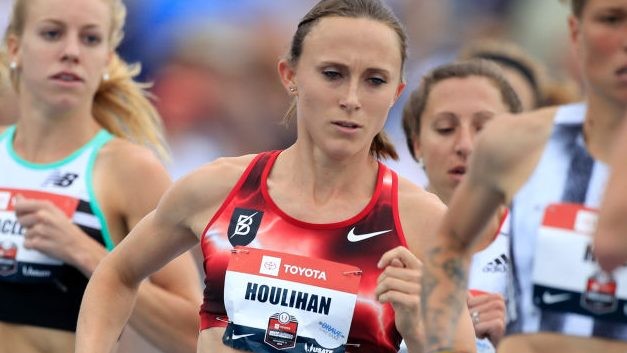
Organised by their training group, the Bowerman Track Club, the meet comprised just two 5000m races and the intention for both events was to provide the opportunity for fast times. Steeplechase specialist Colleen Quigley paced the early stages of the women’s race, taking the field through the first 1000m in 2:55.44.
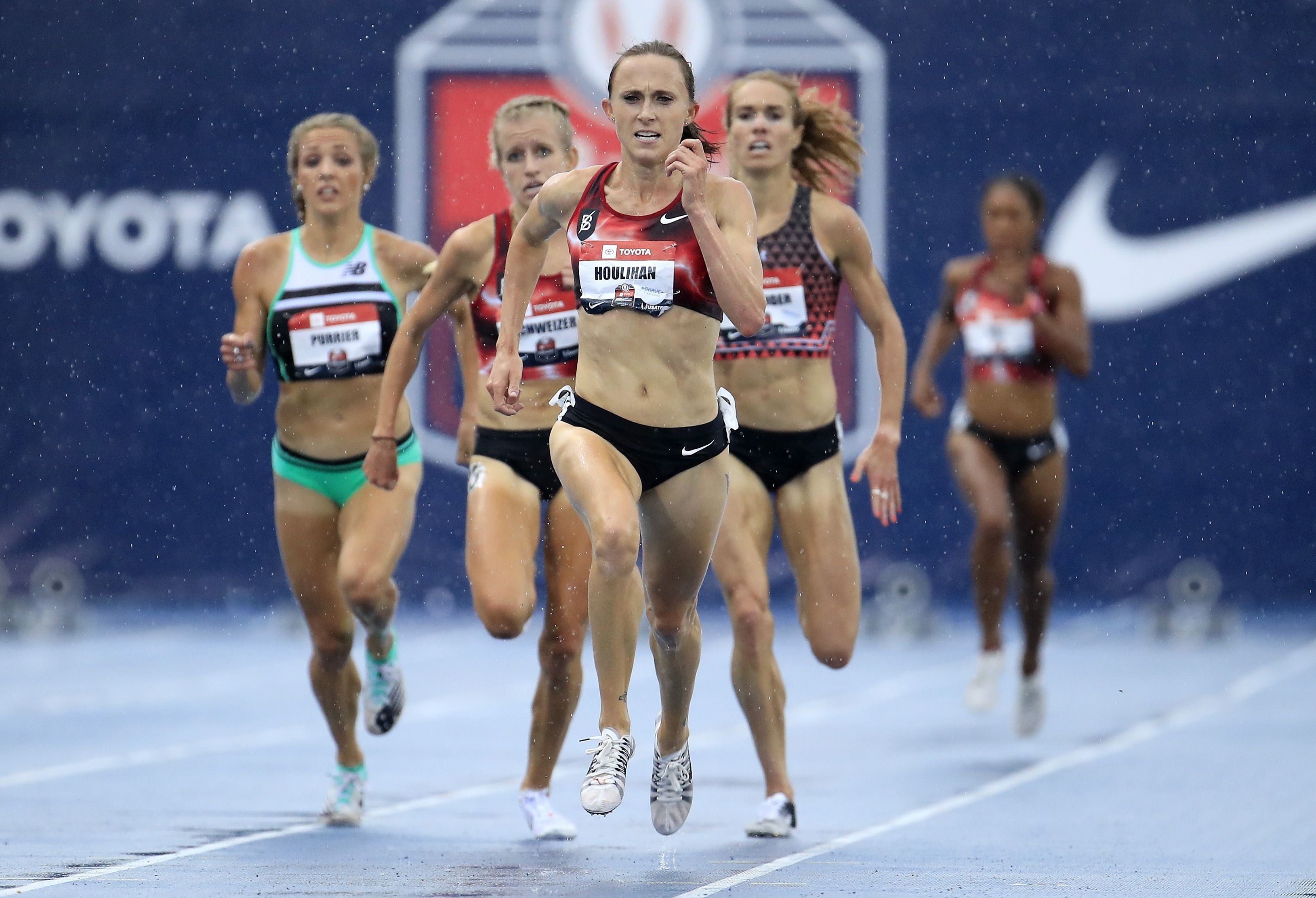
Fellow steeplechaser Courtney Frerichs, the 2017 world silver medallist, took up the running just before 2000m, which was passed in 5:51. Three women – Quigley, Marielle Hall and Gwen Jorgensen – withdrew at the 3000m point. Elise Cranny briefly led at that point, clocking 8:47.88 for her 3000m split, and was just ahead of Houlihan, but Cranny and Frerichs eased off for the final stages of the race, leaving just Houlihan and Schweizer out in front.
Houlihan drifted to the front with three laps to go and gradually started to increase the pace for the final kilometre. Schweizer managed to stick with her training partner until the final lap, which Houlihan covered in 61.4 seconds, giving her a finishing time of 14:23.92. Schweizer was second in 14:26.34.
“I knew Karissa was going to try to come up on me and take the lead, but I decided I was not going to let that happen,” Houlihan told usatf.tv after the race. “I just kept trying to fight her off and tried to have a big kick on the last lap.
“Karissa was in the race in Heusden two years ago where I set the previous record,” added Houlihan. “It’s been really awesome to have her as a training partner and to see how far she has come. She was only three seconds behind me today and I know she’s going to get that 5000m record at some point.”
The men’s race played out in similar fashion, with half the field helping to set the pace for the first 3000m before leaving Ahmed and Lopez Lomong to battle it out for victory.
Ryan Hill (2:36.2) and Grant Fisher (5:12) were the respective leaders for the first and second kilometres as Ahmed and Lomong sat in the middle of the pack. Fisher reached 3000m in 7:46.10, closely followed by Evan Jager and Sean McGorty, but they soon stepped off the track and Ahmed took up the running with three laps to go.
Ahmed then started to wind up the pace and broke away from Lomong on the penultimate lap, which he covered in 59.5. He moved up another gear and ran the final 400m in 57.45 to cross the finish line in 12:47.20, smashing his own Canadian record and moving to 10th on the world all-time list. Lomong, who narrowly missed out on breaking the 13-minute barrier last year with 13:00.13, finished second in a lifetime best of 12:58.78.
“Once I saw the way Shelby and Karissa attacked the last 600m, I told myself that I just had to do the same kind of thing,” said Ahmed, whose previous best was 12:58.16. “With two laps to go, the clock said 10:49 and I just thought, ‘you can run two (minutes) flat (for the final 800m)’. With 200m to go, I just tried to blast it as hard as I could.
“I’m excited, it’s something I’ve been working really, really hard for. It’s been an extremely challenging year, but luckily we have a good group and it was great to deliver this.”
by World Athletics
Login to leave a comment
Ahmed, Quigley and others post PBs at Bowerman Track Club meet
The intra-squad meet saw huge personal bests from a number of athletes
Restrictions regarding social distancing and COVID-19 have been getting more relaxed in the U.S. lately, and that has allowed for clubs to hold in-person track meets and competitions. On Tuesday night, the Bowerman Track Club joined other high-profile and elite training groups which have held competitions in the past month, such as the Oregon and Atlanta track clubs, which held a dual meet a couple of weeks ago, and Team Boss in Colorado, which ran a record-breaking intra-squad mile event on June 27. The Bowerman event featured 1,500m and 5,000m races for both the men and women, and it saw some seriously fast times, with multiple athletes not just beating their PBs, but absolutely smashing them.
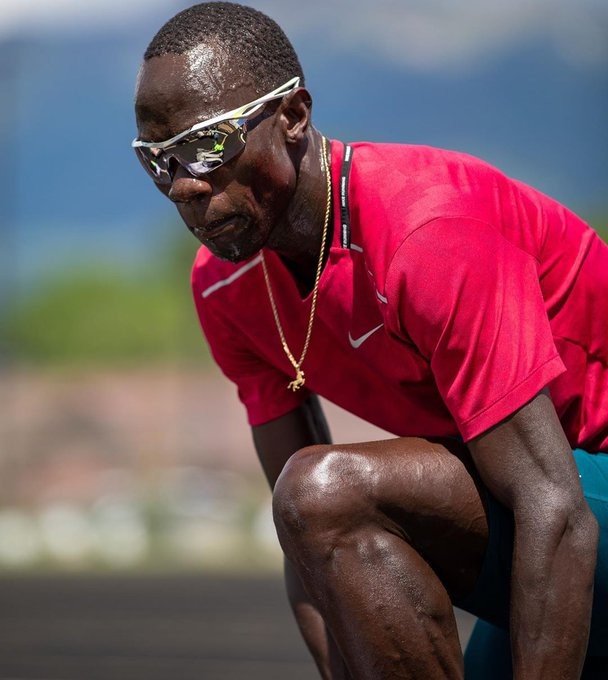
PBs for everyone
The women’s 5,000m saw seven athletes line up to race, and the top four walked away with new PBs. Elise Cranny won the race in 14:48.02, which was a more than 30-second improvement on her PB of 15:25.66. It was also good enough to make her the seventh-fastest American woman ever over 5,000m. Second place was Courtney Frerichs, who entered Tuesday night with an indoor PB of 15:02.91 but an outdoor best of 16:22.98 from 2013. She smashed both of those times, running 14:50.06, which catapults her to eighth on the all-time list of American women.
Colleen Quigley finished in third place, and although the 5,000m isn’t her specialty, she still dropped a blazing fast time of 15:10.42, which was 48 seconds faster than her previous best of 15:58.90. Finally, in fourth place was Gwen Jorgensen, who beat her outdoor PB with a time of 15:18.25 (although she has a faster indoor PB of 15:02.27).
On the men’s side, Sean McGorty won ahead of Grant Fisher, both of whom beat their 5,000m PBs with times of 13:11.22 and 13:11.68, respectively. McGorty’s previous best was 13:21.35 and Fisher’s was 13:29.03.
1,500m runs
The 1,500m events had fewer participants, but both races saw a PB each. The men’s run had a thrilling sprint finish between Josh Thompson, Lopez Lomong and Canadian Mohammed Ahmed. Thompson ran 3:39.652 to edge out Lomong, who ran 3:39.660, and Ahmed, who posted a PB of 3:39.84. The women’s race also saw a tight finish, with Shelby Houlihan eking out a win in 4:02.37 over Karissa Schweizer, who ran a four-second PB with a time of 4:02.81.
Official races may still be on hold, but the Bowerman athletes have sent a message to the rest of the track world, showing everyone that they’ll be fit, fast and ready to race whenever the season resumes.
by Running Magazine
Login to leave a comment
Shalane Flanagan has announced her retiring from professional running
With happy tears I announce today that I am retiring from professional running. From 2004 to 2019 I’ve given everything that’s within me to this sport and wow it’s been an incredible ride! I’ve broken bones, torn tendons, and lost too many toenails to count. I've experienced otherworldly highs and abysmal lows. I've loved (and learned from) it all.
Over the last 15 years I found out what I was capable of, and it was more than I ever dreamed possible. Now that all is said and done, I am most proud of the consistently high level of running I produced year after year. No matter what I accomplished the year before, it never got any easier. Each season, each race was hard, so hard. But this I know to be true: hard things are wonderful, beautiful, and give meaning to life. I’ve loved having an intense sense of purpose. For 15 years I've woken up every day knowing I was exactly where I needed to be.
The feeling of pressing the threshold of my mental and physical limits has been bliss. I've gone to bed with a giant tired smile on my face and woken up with the same smile. My obsession to put one foot in front of the other, as quickly as I can, has given me so much joy.
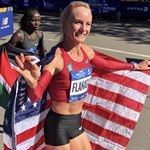
However, I have felt my North Star shifting, my passion and purpose is no longer about MY running; it's more and more about those around me. All I’ve ever known, in my approach to anything, is going ALL IN.
So I’m carrying this to coaching. I want to be consumed with serving others the way I have been consumed with being the best athlete I can be.
I am privileged to announce I am now a professional coach of the Nike Bowerman Track Club. This amazing opportunity in front of me, to give back to the sport, that gave me so much, is not lost on me. I’ve pinched myself numerous times to make sure this is real. I am well aware that retirement for professional athletes can be an extremely hard transition. I am lucky, as I know already, that coaching will bring me as much joy and heartache that my own running career gave me.
I believe we are meant to inspire one another, we are meant to learn from one another. Sharing everything I’ve learned about and from running is what I’m meant to do now.I would like to thank: The 5 coaches who guided me throughout my career, Michael Whittlesey and Dennis Craddock (2004-2005), John Cook (2006-2008), Jerry Schumacher (2009-2019), and Pascal Dobert (2009-2019). Each man was instrumental in developing me into the best version of myself.
Jerry, Pascal and I will continue to work together in this next chapter and I couldn’t be more grateful.
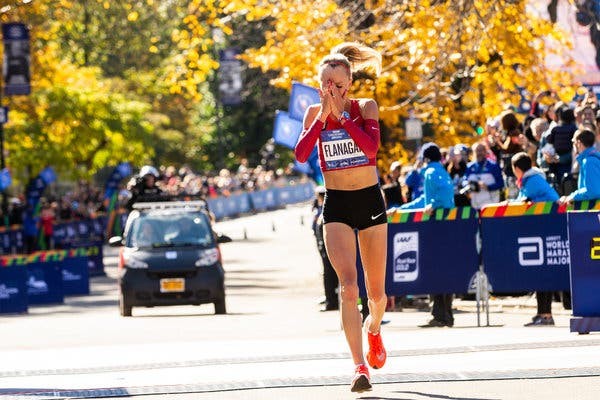
Jerry has been my life coach, running coach and now will mentor me towards my next goal of becoming a world-class coach myself. I’m thankful for his unending belief in me.
My family and husband who have traveled the world supporting my running and understanding the sacrifices I needed to make. Their unconditional love is what fueled my training.My longtime friend, Elyse Kopecky who taught me to love cooking and indulge in nourishing food. Run Fast. Eat Slow. has been a gift to my running and to the thousands of athletes.
My teammates, and all the women I've trained with, for pushing me daily, and the endless smiles and miles. They include: Erin Donahue, Shannon Rowbury, Kara Goucher, Lisa Uhl, Emily Infeld, Amy Cragg, Colleen Quigley, Courtney Frerichs, Shelby Houlihan, Betsy Saina, Marielle Hall, Gwen Jorgensen, Kate Grace.
My sponsor Nike for believing in me since 2004 and for continuing to support my new dream as a professional coach. I hope I made myself a better person by running. I hope I made those around me better. I hope I made my competition better. I hope I left the sport better because I was a part of it.
My personal motto through out my career has been to make decisions that leave me with “no regrets”.....but to be honest, I have one. I regret I can’t do it all over again.
by Shalane Flanagan
Login to leave a comment
TCS New York City Marathon
The first New York City Marathon, organized in 1970 by Fred Lebow and Vince Chiappetta, was held entirely in Central Park. Of 127 entrants, only 55 men finished; the sole female entrant dropped out due to illness. Winners were given inexpensive wristwatches and recycled baseball and bowling trophies. The entry fee was $1 and the total event budget...
more...Your guide to this year's Prefontaine Classic
The Prefontaine Classic relocated, temporarily, and it brought the best fields of the Diamond League season with it to Stanford, California on Sunday June 30.
That includes the world’s fastest man and woman this year (Christian Coleman and Elaine Thompson), the athlete who has made the most worldwide headlines this season (Caster Semenya) and a bevy of other reigning Olympic and world champions.
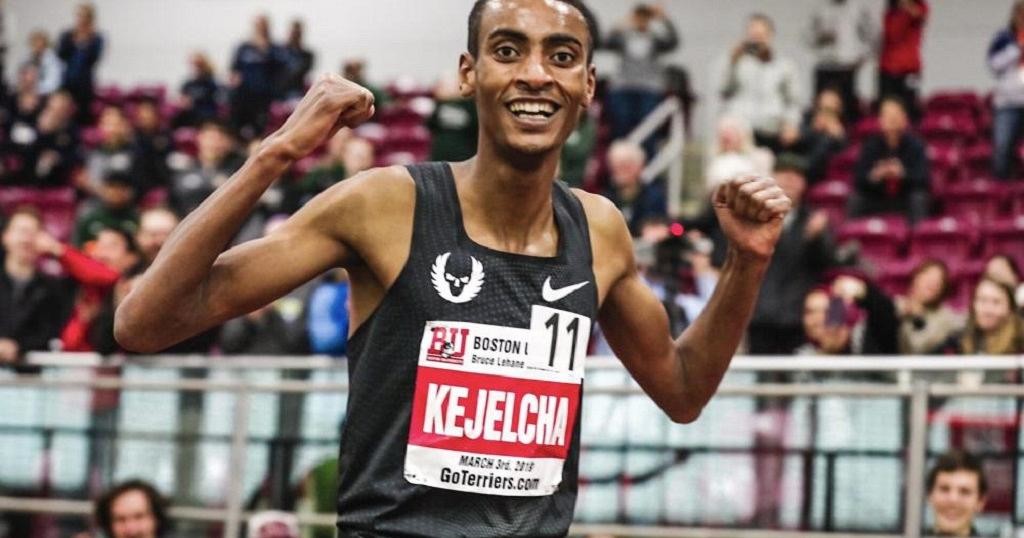
Notably, Olympic 10,000m champion Almaz Ayana of Ethiopia and Olympic 1500m champion Faith Kipyegon will compete for the first time since 2017. World 100m champions Justin Gatlin and Tori Bowie are in their first Diamond League meets in more than one year. It’s the first Diamond League in two years for 2008 Olympic 400m champ LaShawn Merritt. It’s also the first race of 2019 for Olympic 1500m champion Matthew Centrowitz.
NBC and NBC Sports Gold air live coverage Sunday from 1-3 p.m. Pacific.
The Pre Classic has been held annually since 1975 in Eugene, Ore. But Hayward Field’s reconstruction ahead of the 2020 Olympic Trials forced a move to Cobb Track and Angell Field at Stanford.
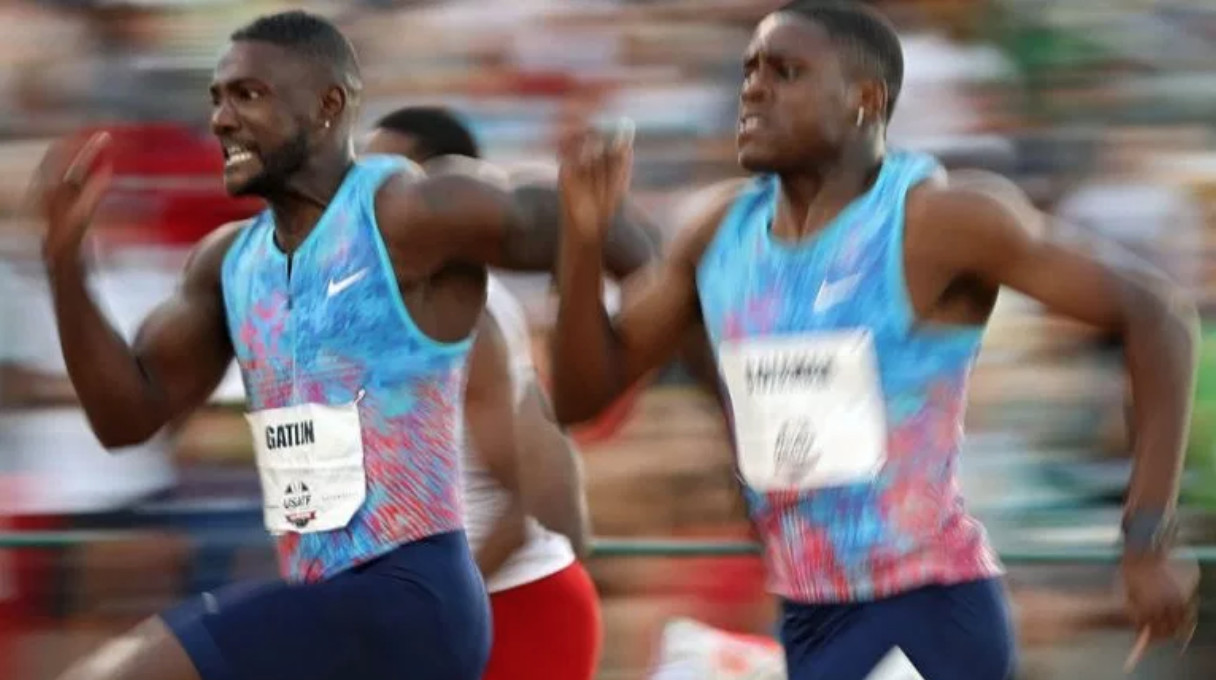
Here are the Pre Classic entry lists. Here’s the schedule of events (all times Pacific):
Here are 10 events to watch:
Men’s Pole Vault — 12:43 p.m.The Big Three of the event meet for the first time this season: 2012 Olympic champion and world-record holder Renaud Lavillenie of France, 2017 World champion Sam Kendricksand 2018 and 2019 world leader Mondo Duplantis of Sweden, who just turned pro after his freshman year at LSU. Lavillenie has competed just once this season due to injury. Duplantis was beaten at NCAAs by Chris Nilsen (also in the Pre field). But Kendricks has been hot, winning the first three Diamond League pole vaults this season (though Lavillenie and Nilsen weren’t in any of those fields and Duplantis just one).
Women’s High Jump — 1:08 p.m.U.S. champion Vashti Cunningham takes another crack at Russian Mariya Lasitskene, who has just two losses in the last three years. Cunningham is 0-7 versus Lasitskene but has this spring already bettered her top clearance of 2018. Lasitskene, though, appears in top form after taking three attempts at a world record 2.10 meters in Ostrava last week.
Women’s 3000m Steeplechase — 1:11 p.m.Six of the eight fastest in history, headlined by world gold and silver medalists Emma Coburn and Courtney Frerichs. The only time either Coburn or Frerichs won a steeple that included any of the four fastest Kenyans in history was at those 2017 Worlds. Another chance Sunday.
Women’s 100m — 1:27 p.m.NCAA champion Sha’Carri Richardson would have been the favorite here in her pro debut if not for what happened Friday. Shelly-Ann Fraser-Pryce, a two-time Olympic 100m champion, clocked her fastest time in six years (10.73 seconds) to become the fastest mom in history and No. 2 in the world this year behind Rio gold medalist Elaine Thompson. Also watch reigning world champ Tori Bowie, who is coming back from a quad tear and coaching change.
Women’s 800m — 1:47 p.m.Caster Semenya races her trademark event for the first time since a Swiss Supreme Court ruled her eligible while it deliberates on her appeal against a Court of Arbitration for Sport decision to uphold an IAAF rule capping testosterone in women’s events from the 400m through the mile. The Swiss court ruling applies only to Semenya and not the other Rio Olympic medalists, Francine Niyonsaba and Margaret Wambui, who are also affected by the new rule. So Semenya’s closest threat at Pre is American record holder Ajeé Wilson, but Semenya has won 30 straight 800m races dating to 2015.
Men’s Shot Put — 2:01 p.m.Olympic champion Ryan Crouser had a sterling record at Hayward Field, taking NCAA, Pre Classic and Olympic Trials titles. He’s pretty strong in California, too, recording his personal best (22.74 meters) in Long Beach in April. Nobody has been within a foot and a half of that this season, but the last two world champions (New Zealand’s Tom Walsh and American Joe Kovacs) will try to snap his undefeated 2019 on Sunday.
Men’s 400m — 2:19 p.m.Lost some sizzle with the withdrawal of 2012 Olympic champion Kirani James, who has missed time with Graves’ disease and, more recently, his mother’s death. Instead, the three fastest Americans of the last decade line up — 2018 and 2019 world leader Michael Norman (43.45 from April 20), 2017 world No. 2 Fred Kerley and 2008 Olympic championLaShawn Merritt.
Women’s 200m — 2:25 p.m.Strongest sprint field of the meet: 2016 Olympic champion Elaine Thompson, 2015 and 2017 World champion Dafne Schippers and 2018 world leader Dina Asher-Smith. Should produce the fastest time in the world this year, which is currently 22.16, and the favorite for world champs.
Men’s 100m — 2:39 p.m.Justin Gatlin and Christian Coleman go head-to-head for the first time since the 2017 Worlds, where Gatlin took gold, Usain Bolt silver and Coleman bronze. Coleman is the world’s fastest man this Olympic cycle (9.79) and this year (9.85). Gatlin, 37, hasn’t broken 10 seconds since beating Bolt but has a bye to defend his title in Doha in September.
Men’s Mile — 2:51 p.m.Olympic 1500m champ Matthew Centrowitz races on the track for the first time since July 22, eyeing his first win in the Pre mile in his sixth try. The foes are formidable, including the top two milers since Rio — Kenyans Timothy Cheruiyot and Elijah Manangoi — Norwegian brothers Filip and Jakob Ingebrigtsen and Ethiopian Yomif Kejelcha, who on March 3 broke the 22-year-old indoor mile world record. Nobody has been within four seconds of the outdoor mile word record (Hicham El Guerrouj‘s 3:43.13 in 1999) since 2007.
Login to leave a comment
Prefontaine Classic
The Pre Classic, part of the Diamond League series of international meets featuring Olympic-level athletes, is scheduled to be held at the new Hayward Field in Eugene. The Prefontaine Classicis the longest-running outdoor invitational track & field meet in America and is part of the elite Wanda Diamond League of meets held worldwide annually. The Pre Classic’s results score has...
more...America’s Amy Cragg is set to race the Prague Half on Saturday
Success for reigning USA Olympic Trials Marathon champion Amy Cragg did not come easily or quickly. Indeed, the 35 year-old Nike Bowerman Track Club athlete nearly quit the sport before her true talent really showed through, eventually carrying her to Olympic Trials wins in both 2012 (at 10,000m) and 2016 (marathon), four USA titles, and a 2:21:42 marathon personal best. It’s been a long, and sometimes bumpy, road.
“Definitely, I’ve made some mistakes along the way,” Cragg told Race Results Weekly in a telephone interview from Prague where she’ll be running the Sportisimo Prague International Half-Marathon on Saturday. “I’ve learned from them and that’s kind of led me to here. So, every once in a while I’ve looked back and I’m, like, I should have done this differently or this differently. But, the reality is that I might not have ended up here. I think I’m in a really good place.”
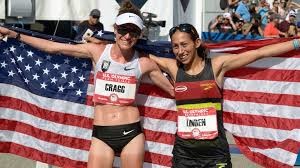
Working with coaches Jerry Schumacher and Pascal Dobert and Bowerman teammate Shalane Flanagan since the end of 2015, Cragg has blossomed into one of America’s best at 26.2 miles. After winning the February, 2016, Marathon Trials on a brutally hot day in Los Angeles, she went on to finish ninth in the Olympic Games Marathon in Rio.
She backed up that performance a year later with a thrilling, late-race charge at the 2017 IAAF World Championships marathon in London, taking the bronze medal (the first medal for a USA woman at those championships in the marathon since 1983), and only missing the silver by a fraction of a second.
She recovered from her London race well, then ran the Tokyo Marathon in February, 2018, finishing third in an excellent 2:21:42. That performance made her the fifth-fastest American of all time behind only Deena Kastor, Jordan Hasay, Flanagan and Joan Samuelson.
"I love where I’m at,” Cragg continued. “I love my team and my coach. Just living in Oregon, that’s been incredible. I think overall, those rough moments, those times when I considered stopping have made me a stronger athlete. I’m glad I went through that. It’s hard to say that. Those times, I think I really learned a lot from them.”
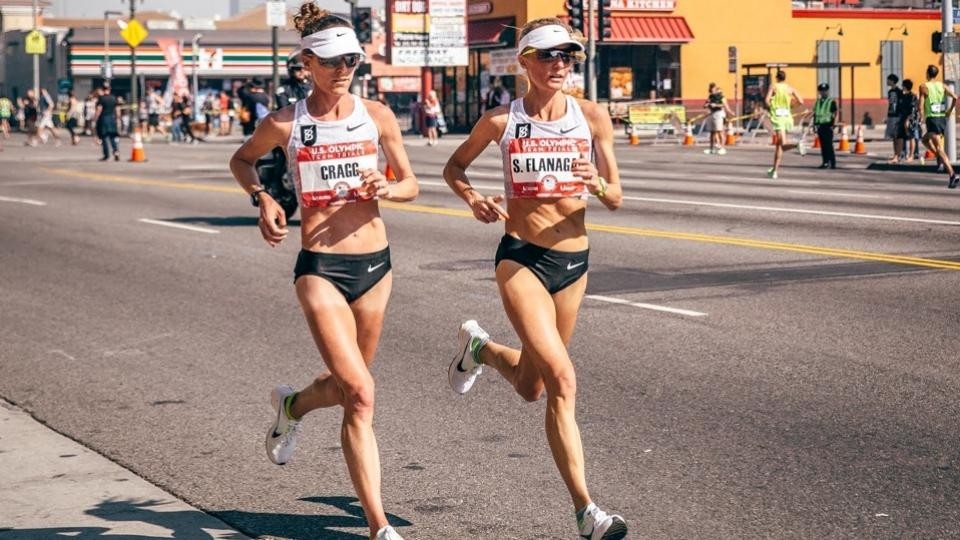
Cragg is at an unusual juncture in her career. She hasn’t run a marathon in over a year. She built-up for Chicago last October, but ended up withdrawing from the race after she and her coaches felt that her training hadn’t brought her to the fitness she would need to run her best. They had intense discussions, she said, about what to do next.
“When I pulled out of Chicago last year the big talk was, OK, what do we really want to get out of the next two years?” Cragg said. “I’ll probably be in the sport two years and reassess. The big thing is making another Olympic team and trying to perform well in Tokyo. Everything we do from here on out, that’s the goal to make that team and we’ve been working back from there.”
Cragg decided not to do a spring marathon this year. Instead, she worked with her Bowerman teammates Shelby Houlihan, Marielle Hall, Courtney Frerichs, and Karissa Schweizer to get ready for the USATF Cross Country Championships last February where she finished fifth in her first national cross country championships in nine years.
A month later she ran the special Road to Gold test event in Atlanta where she was able to run on the 2020 Olympic Trials course. Uncontested, she covered the 8-mile route in 43:23 and won by a minute. She told Race Results Weekly that the Atlanta race was essentially the kick-off of her Trials training.
“I felt pretty good,” Cragg said. “I think I’m in a good position and I’m pretty excited to get into the bigger miles. For me, that makes a huge difference. I feel ready to start that, which is exciting for me.”
Saturday’s race in Prague is the next logical step on Cragg’s long journey to Atlanta next February for the marathon trials and Tokyo for the Olympics next August. On Prague’s flat, record-eligible course Cragg wants to race hard with the goal of improving herself as a marathoner.
by David Monti
Login to leave a comment
Prague Half Marathon
Start the RunCzech season with one of the biggest running events in the Central Europe! Every year the Sportisimo Prague Half Marathon excites spectators with performances of elite athletes breaking records. Enjoy a course with incomparable scenery in the heart of historic Prague that follows along the Vltava river and crisscrosses five beautiful bridges. Take in majestic views of the...
more...Shelby Houlihan won the USATF Cross-Country Championships and is becoming one of the most dominant American runners
Shelby Houlihan won the USATF Cross-Country Championships on Saturday, beating one of the deepest fields in recent history. Houlihan bested American half-marathon record-holder Molly Huddle, American steeplechase record-holder Courtney Frerichs and 2016 NCAA XC champion Karissa Schweizer. Saturday was the longest race of the 5,000m record-holder’s life so far, and her first cross-country race since 2014. Even more impressive, Houlihan closed in a 3:02 kilometer.
The Bowerman Track Club runner or Shelbo800 as she’s known on Instagram, is a name you should remember. This 800m runner turned distance phenom has won the USATF 1,500m, 5,000m and 10K cross-country races–and done that in the space of less than one year. She also set a new American 5,000m record this past summer at Heusden.
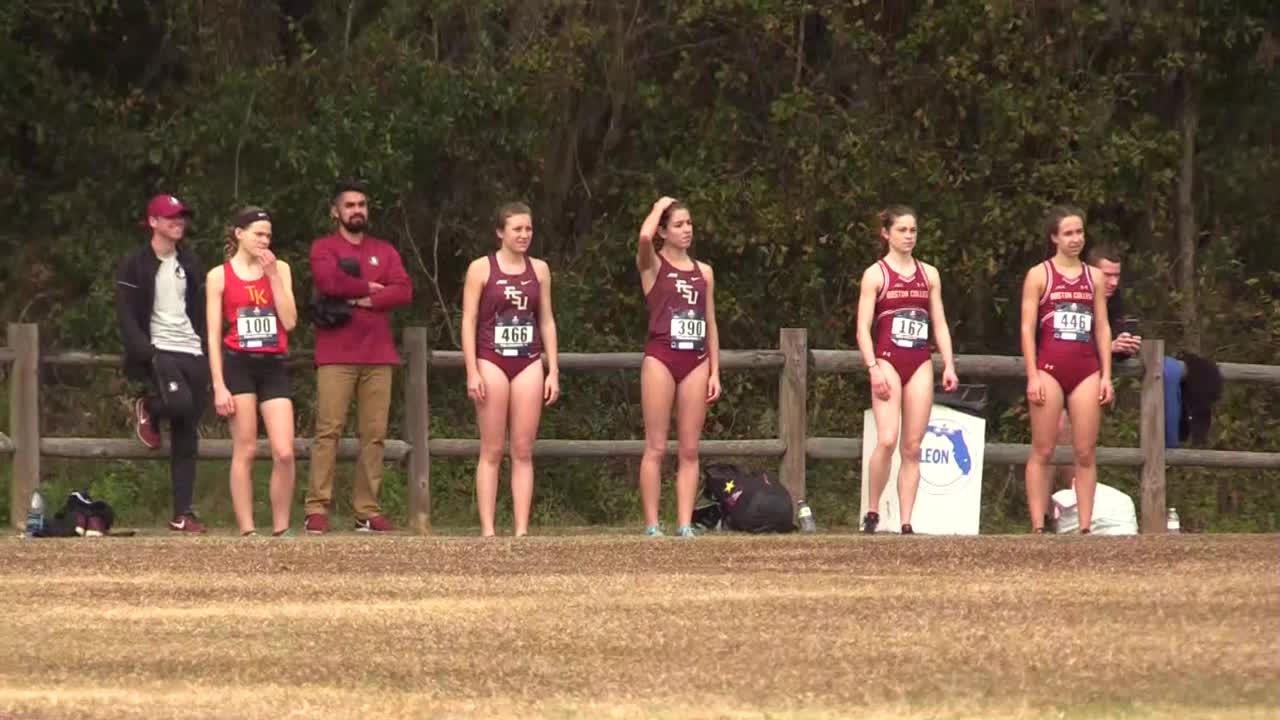
The runner’s Instagram handle has also become a bit of a joke in the running community. Houlihan was an 800m runner in college at Arizona State University, with a personal best of 2:01.12 from 2014. What was once a time she was very proud of has now become one of her weaker personal bests. She’s now run a shocking 3:57.34 for the 1,500m and 14:34.45 in the 5,000m.
Second place on Saturday went to Huddle, who’s preparing for the London marathon this April and third place went to Marielle Hall.
Login to leave a comment
IAAF releases the biggest ever biomechanics study for Track and Field
Login to leave a comment
Infeld Earned Her First National Title at Cross-Country
Olympian
Login to leave a comment





